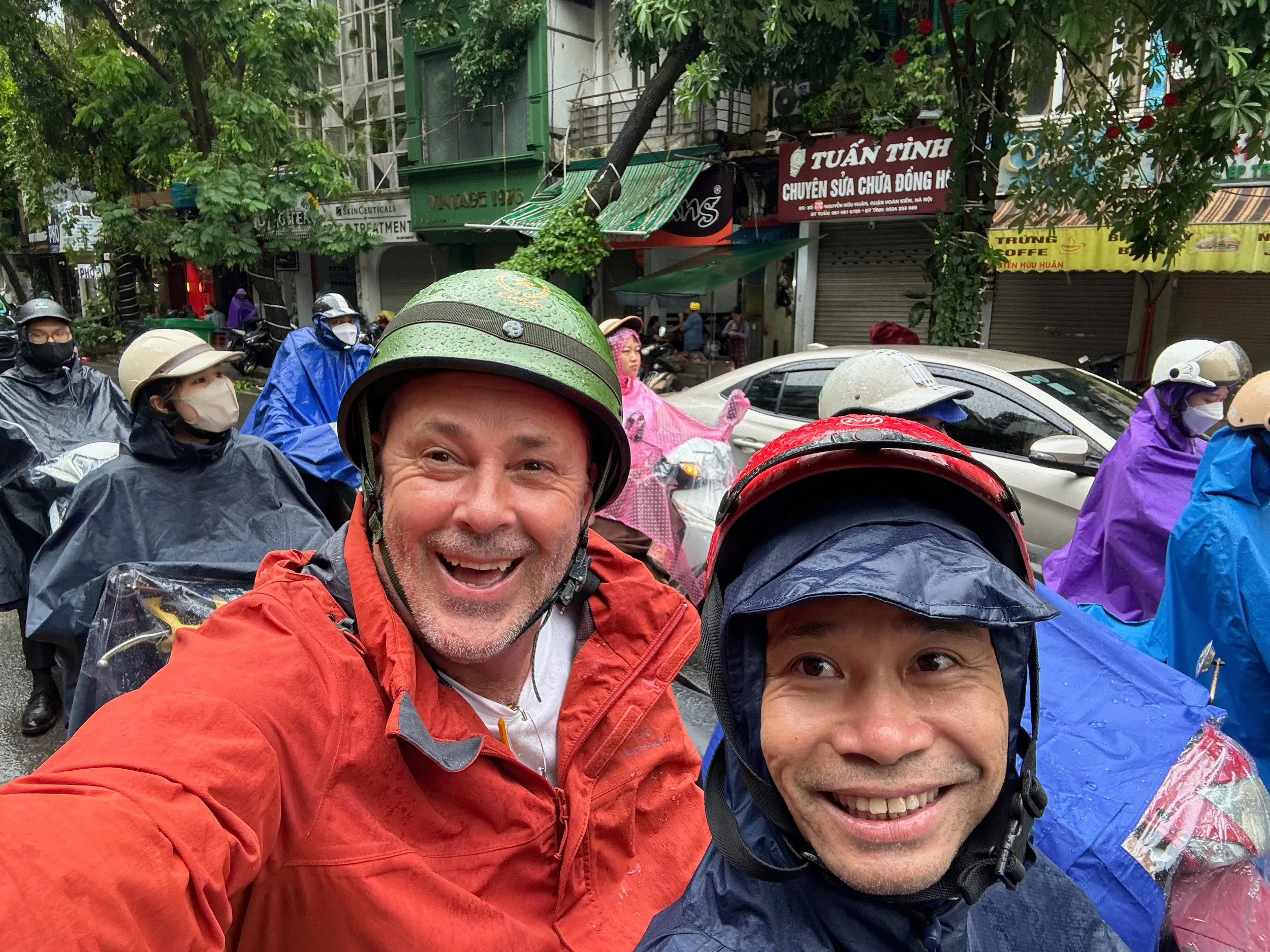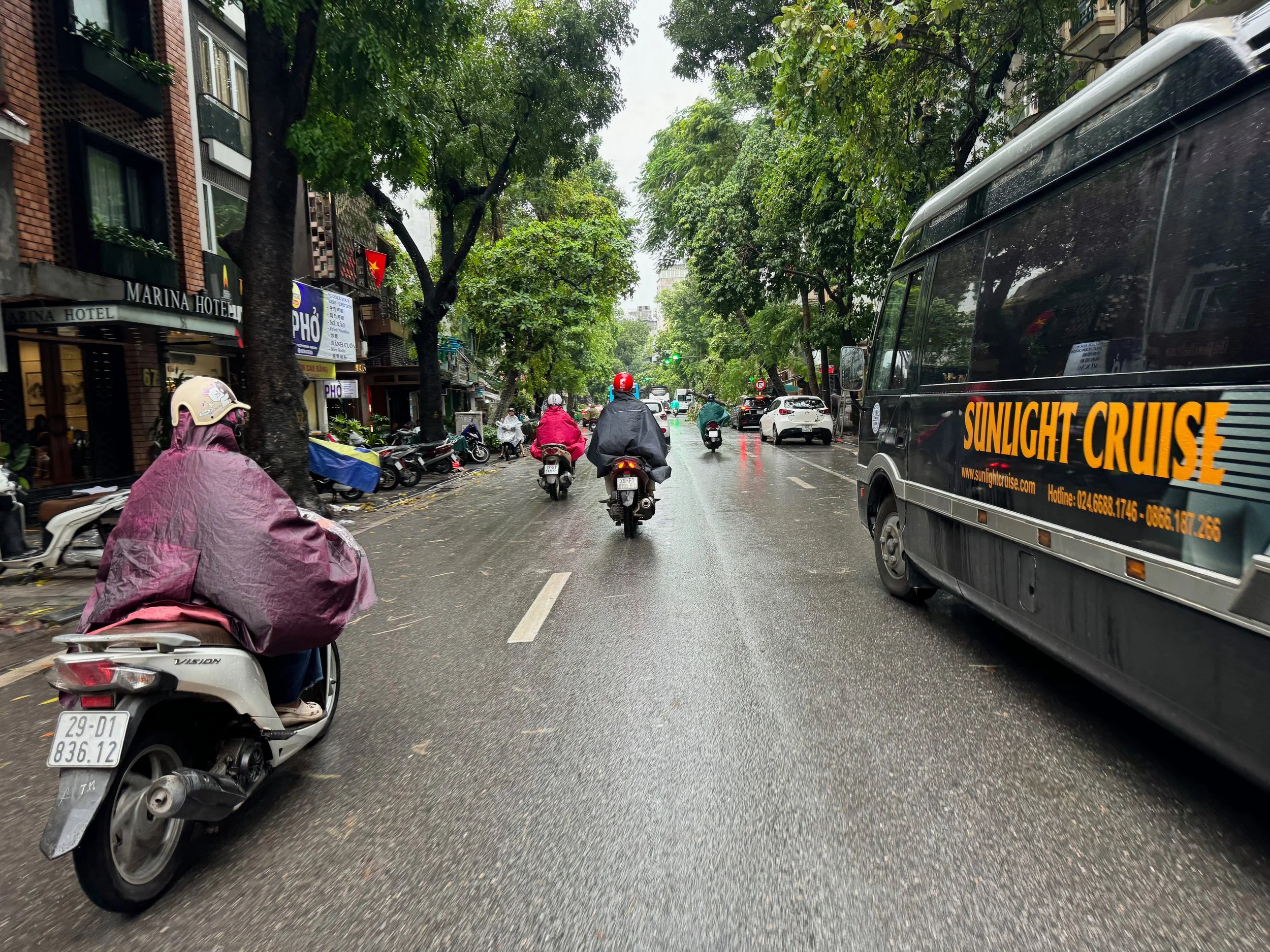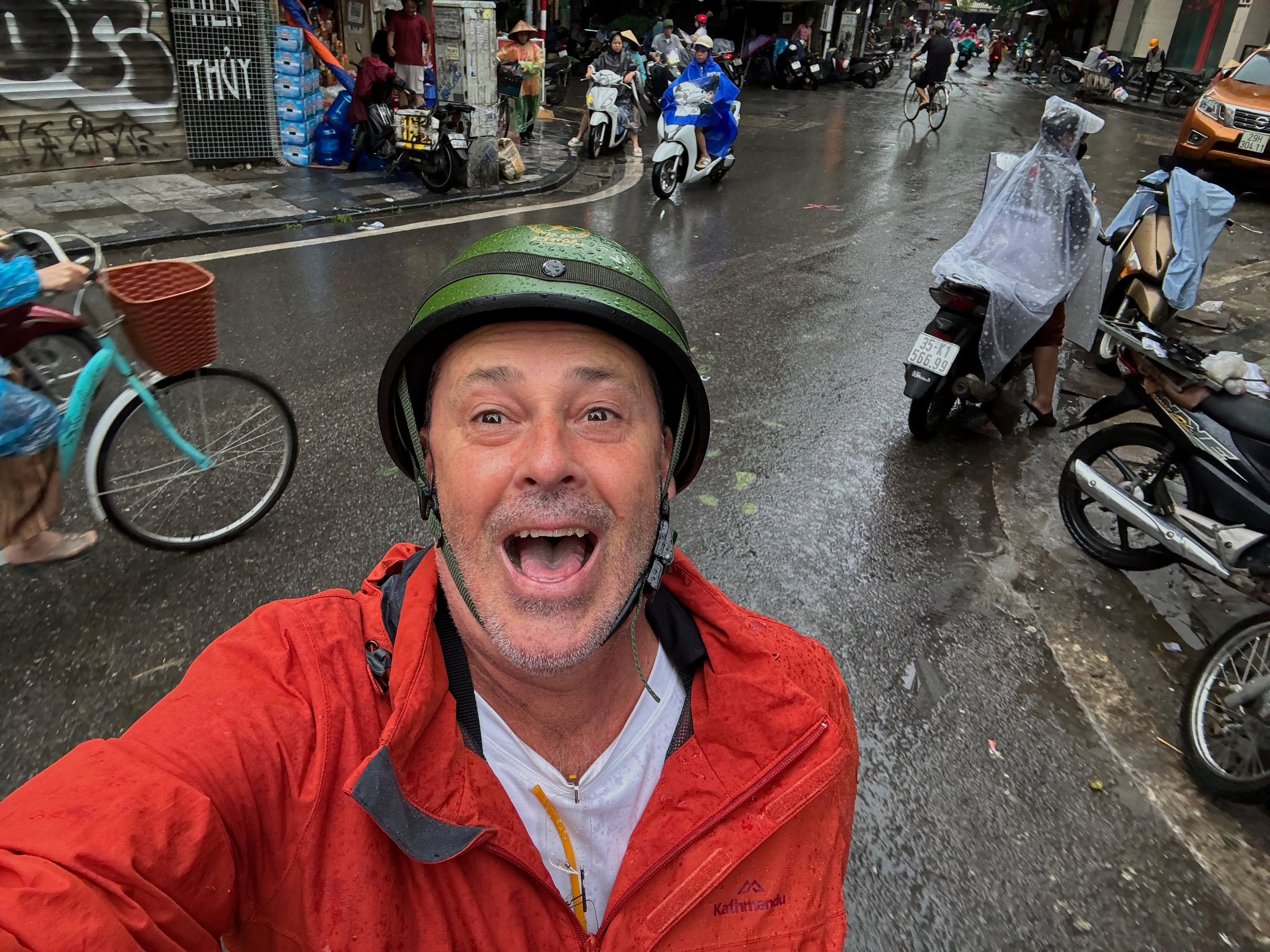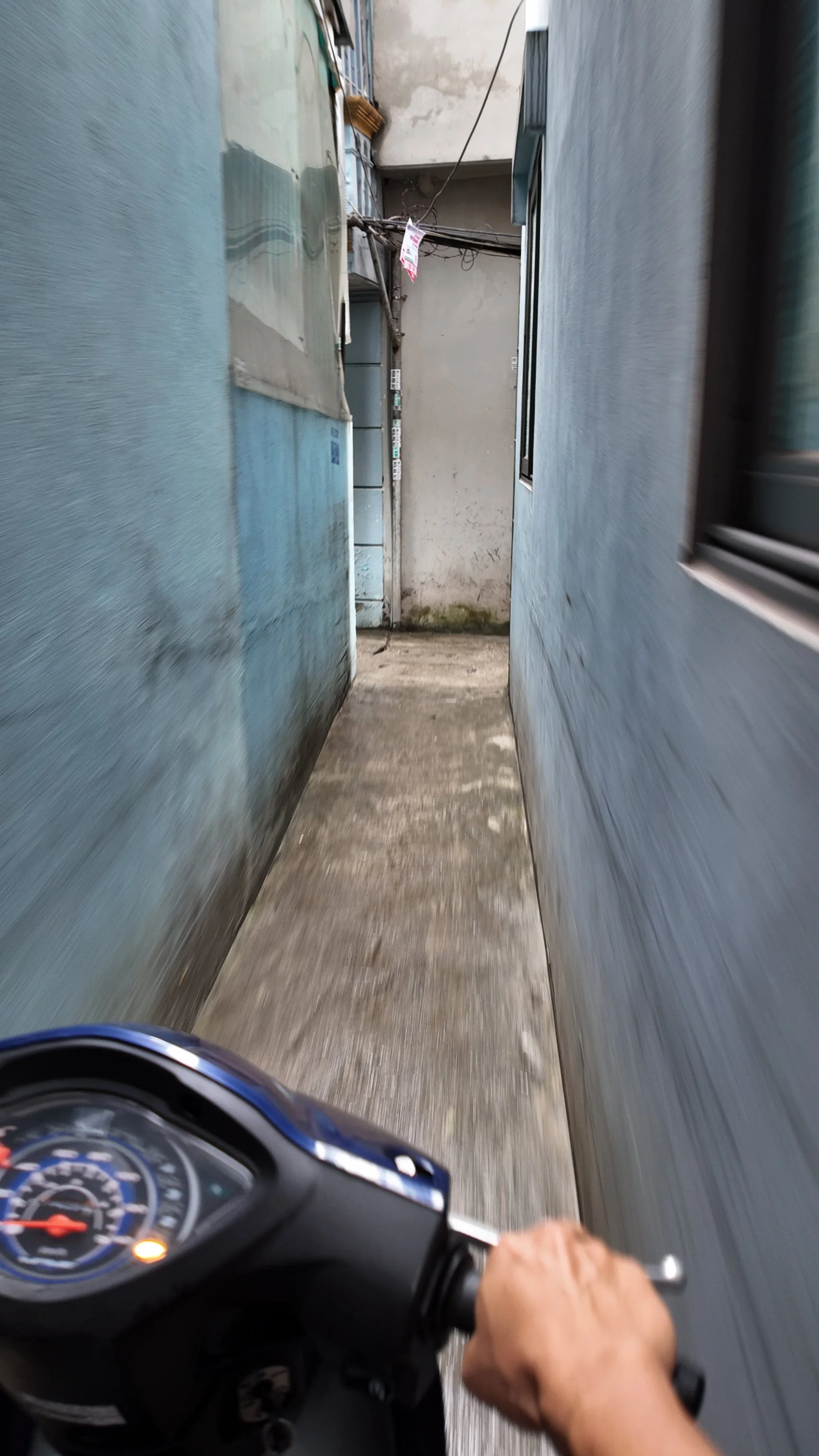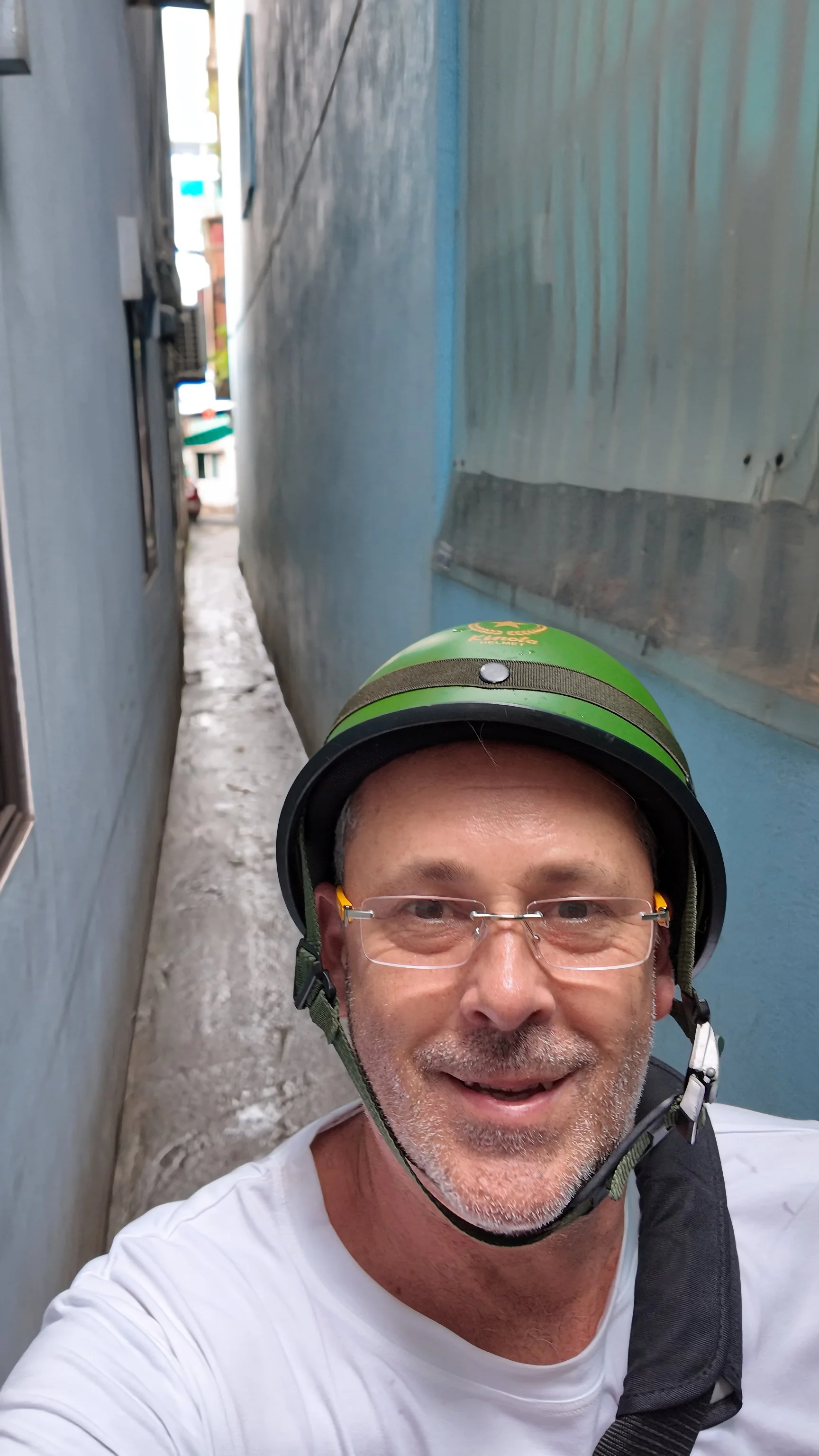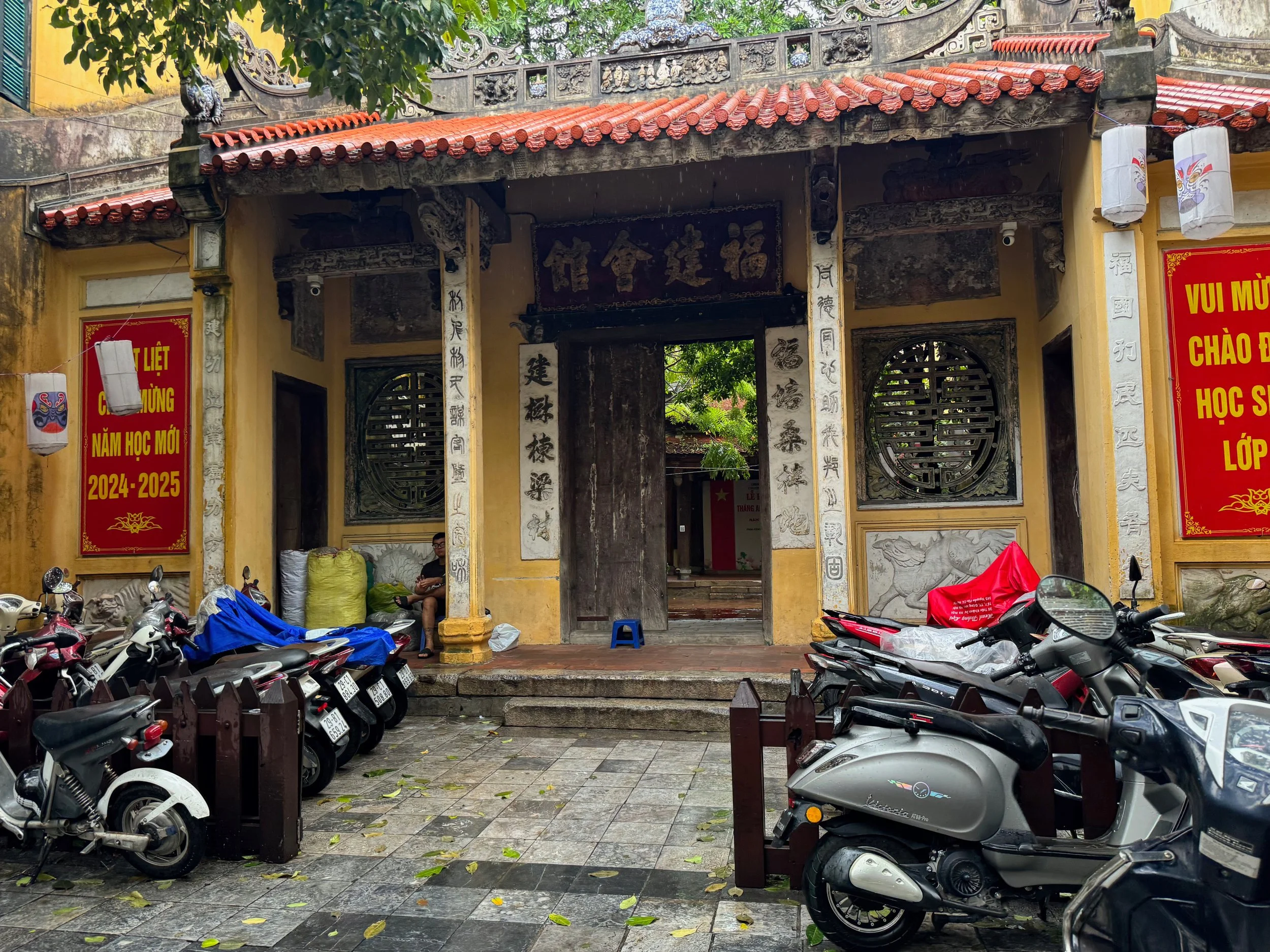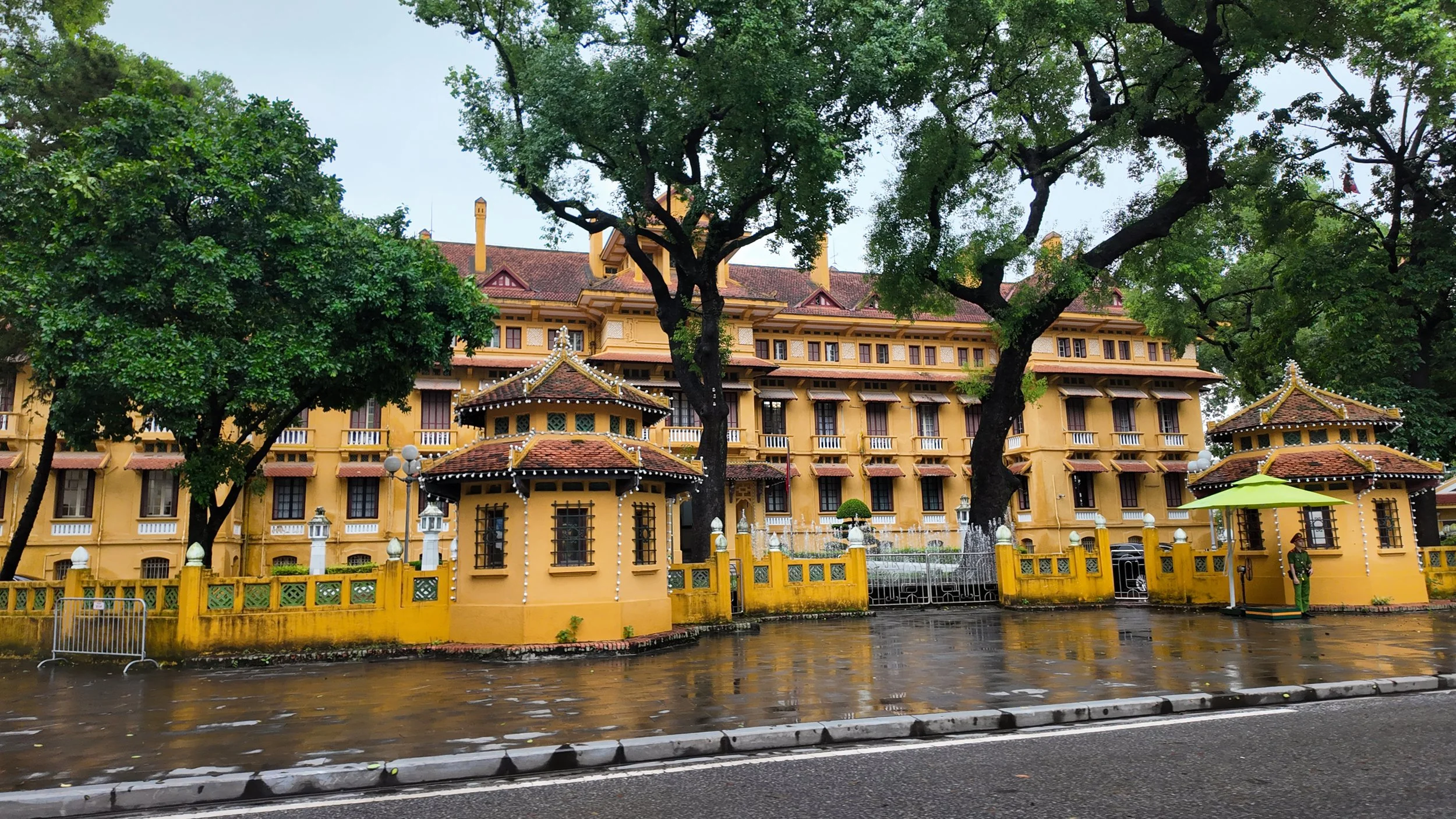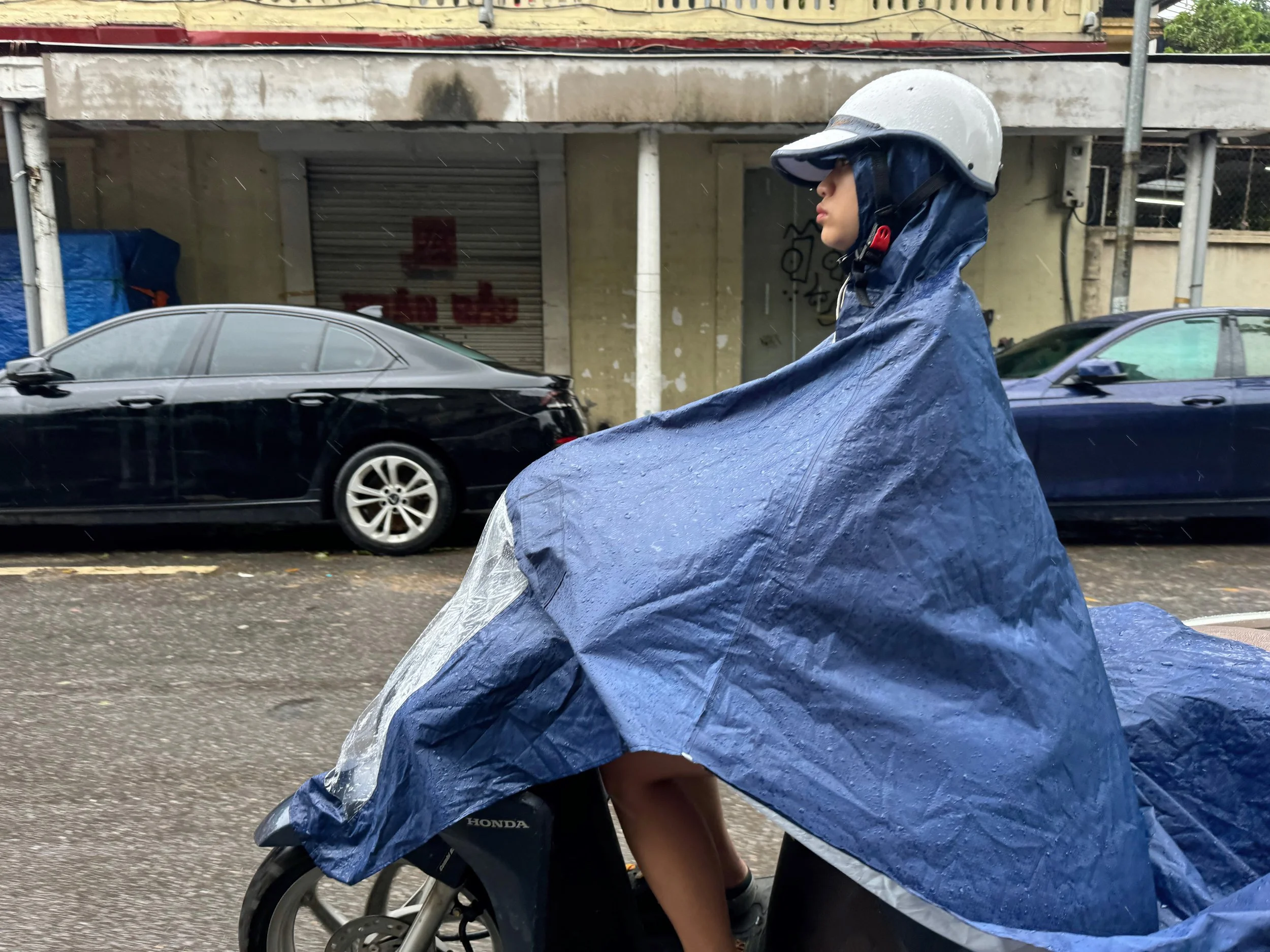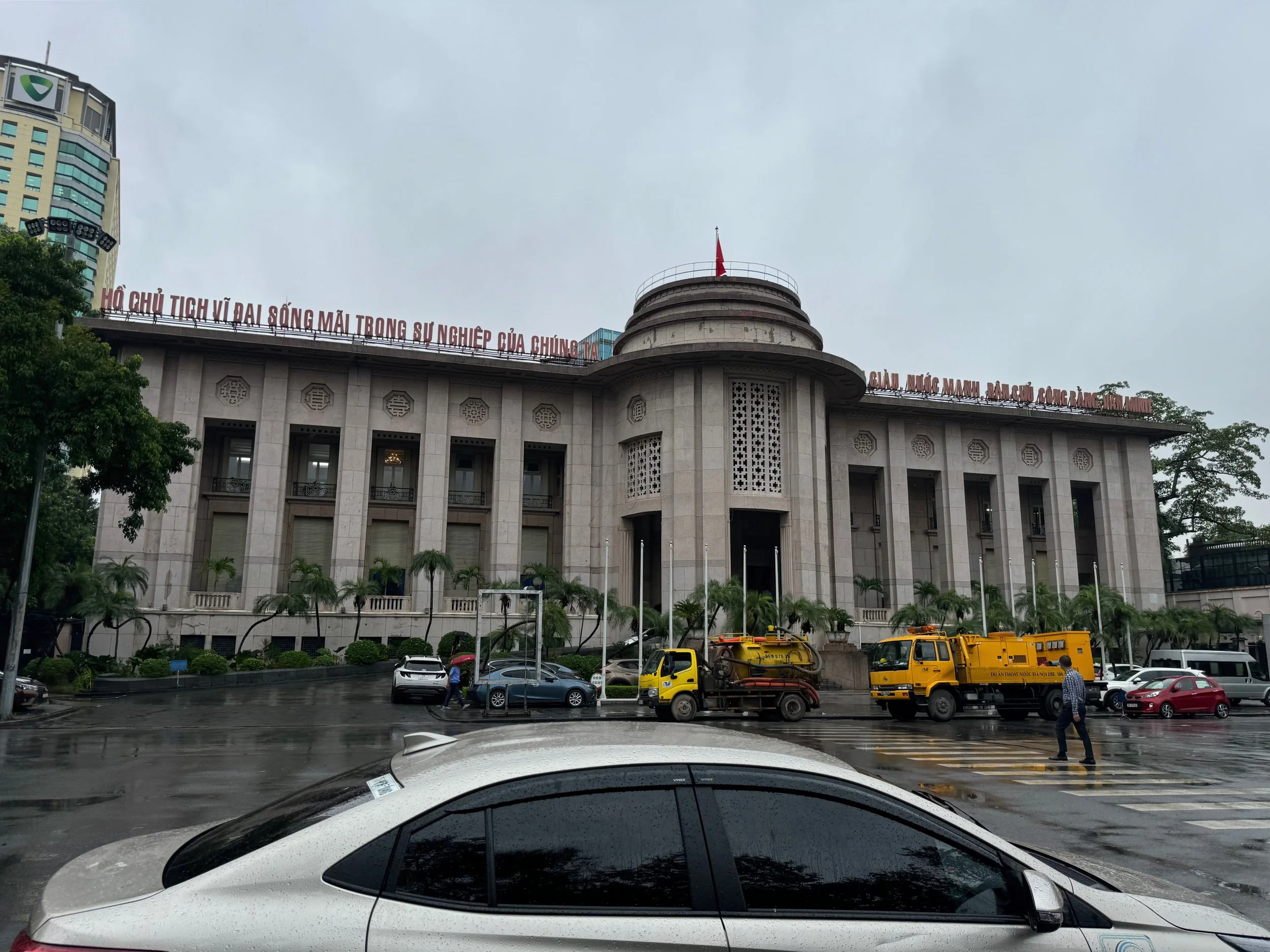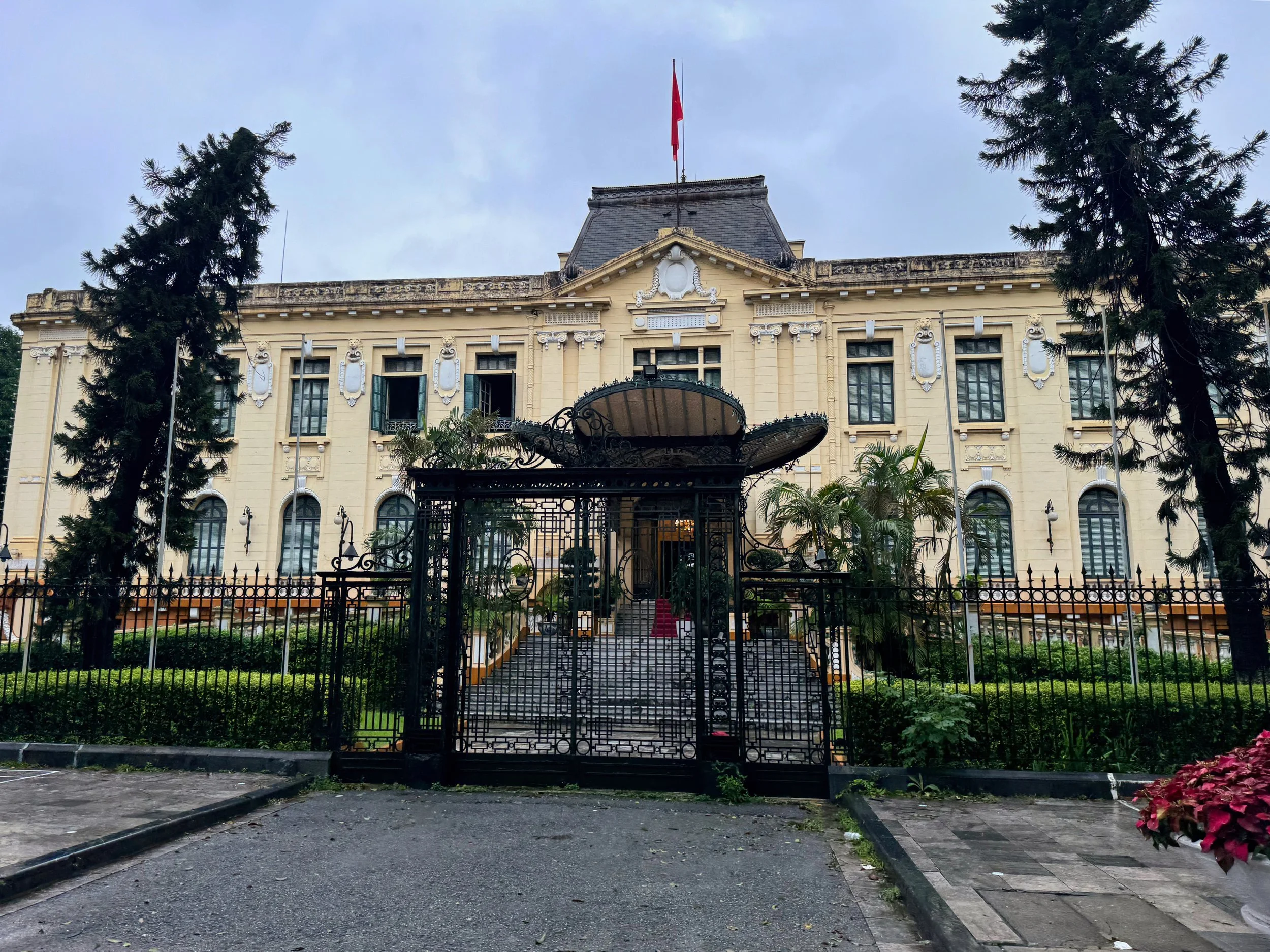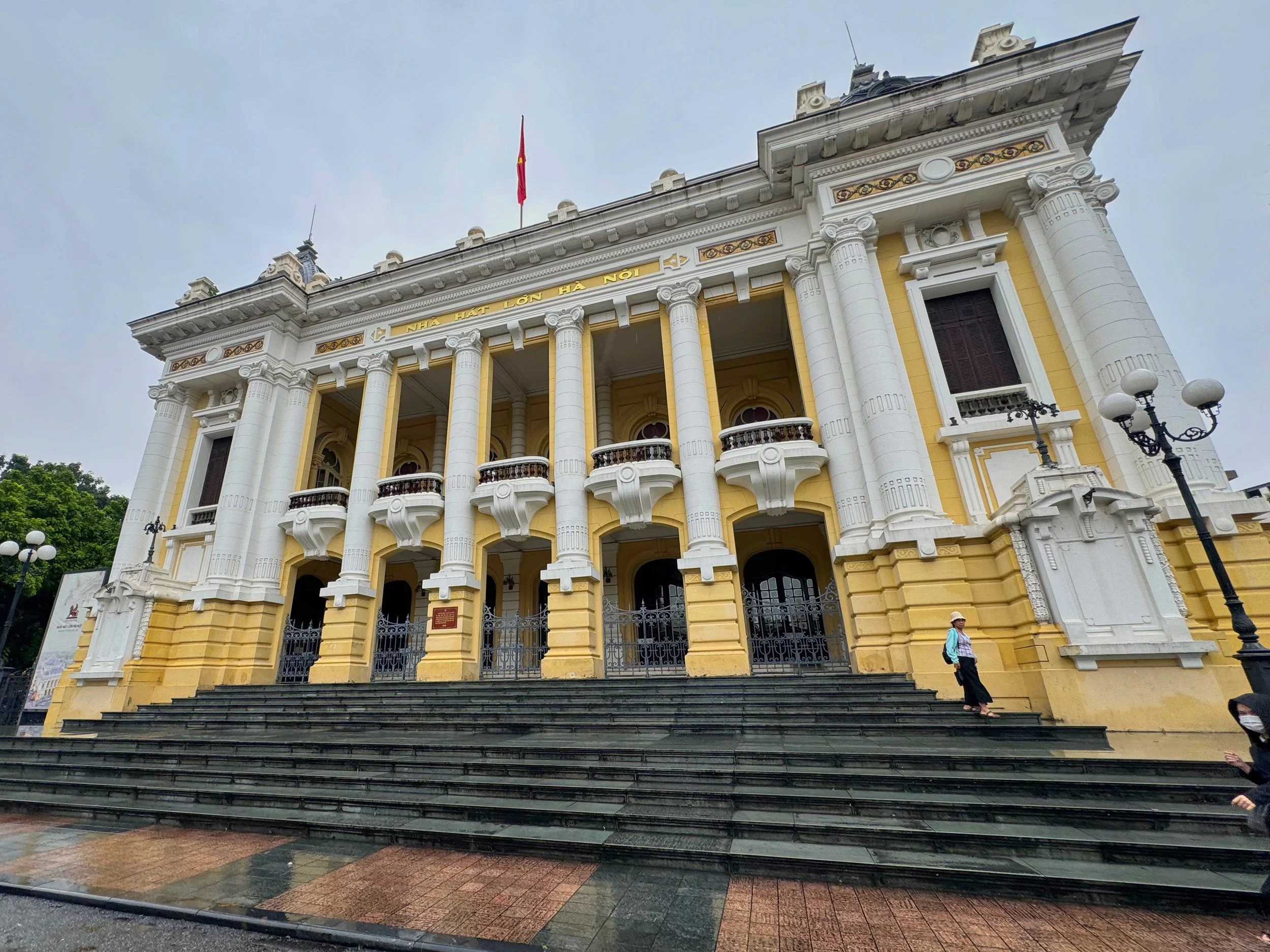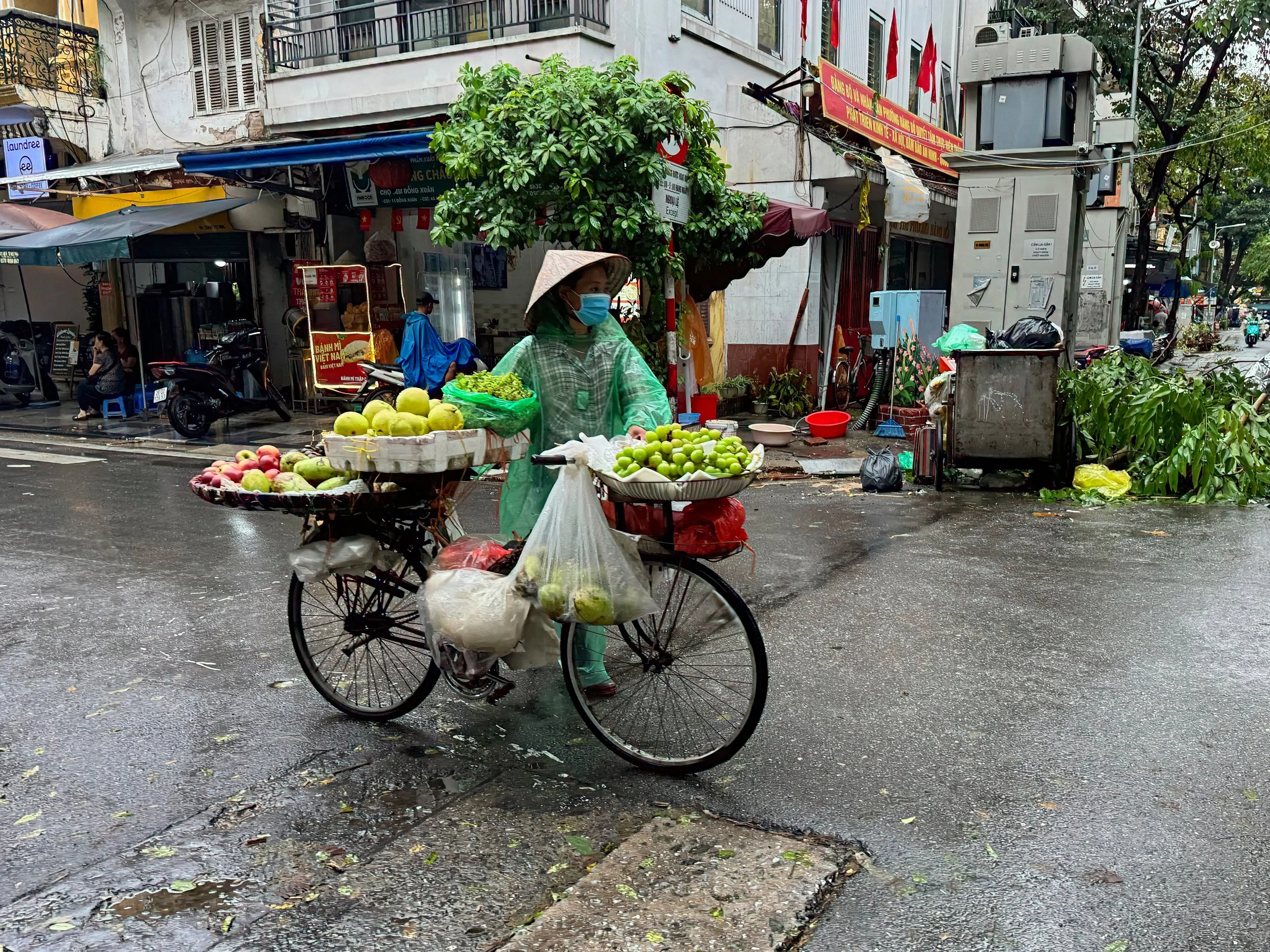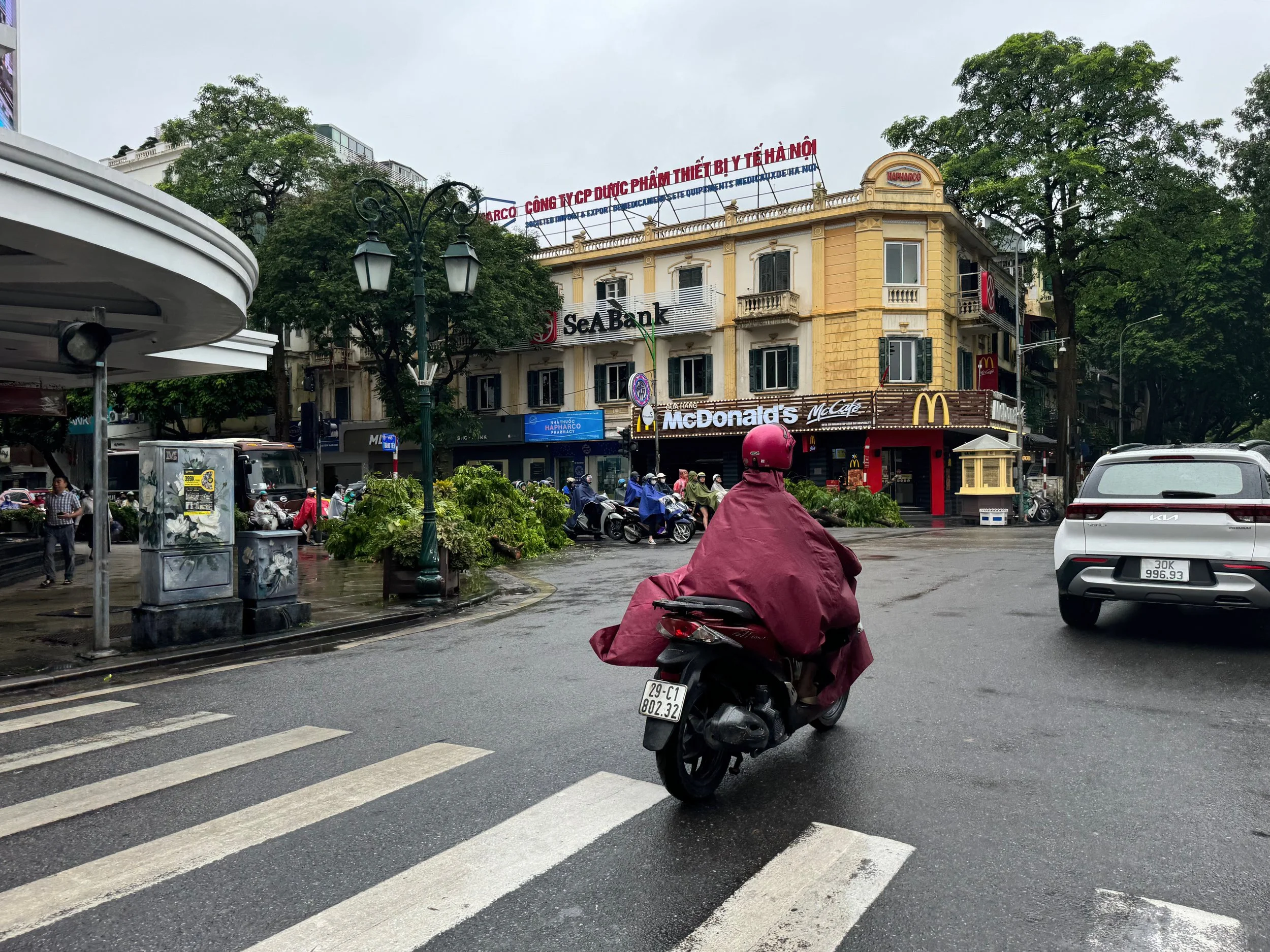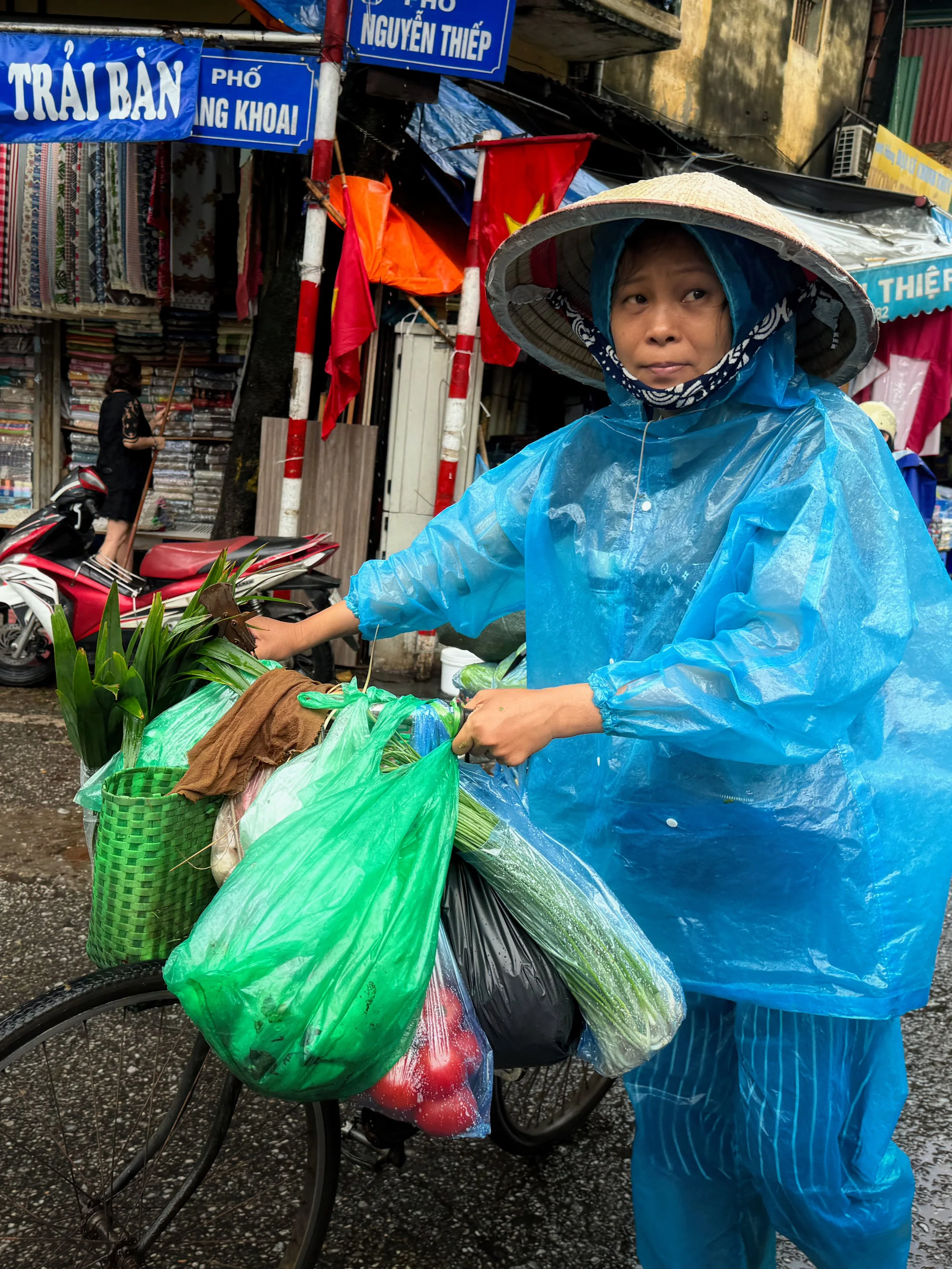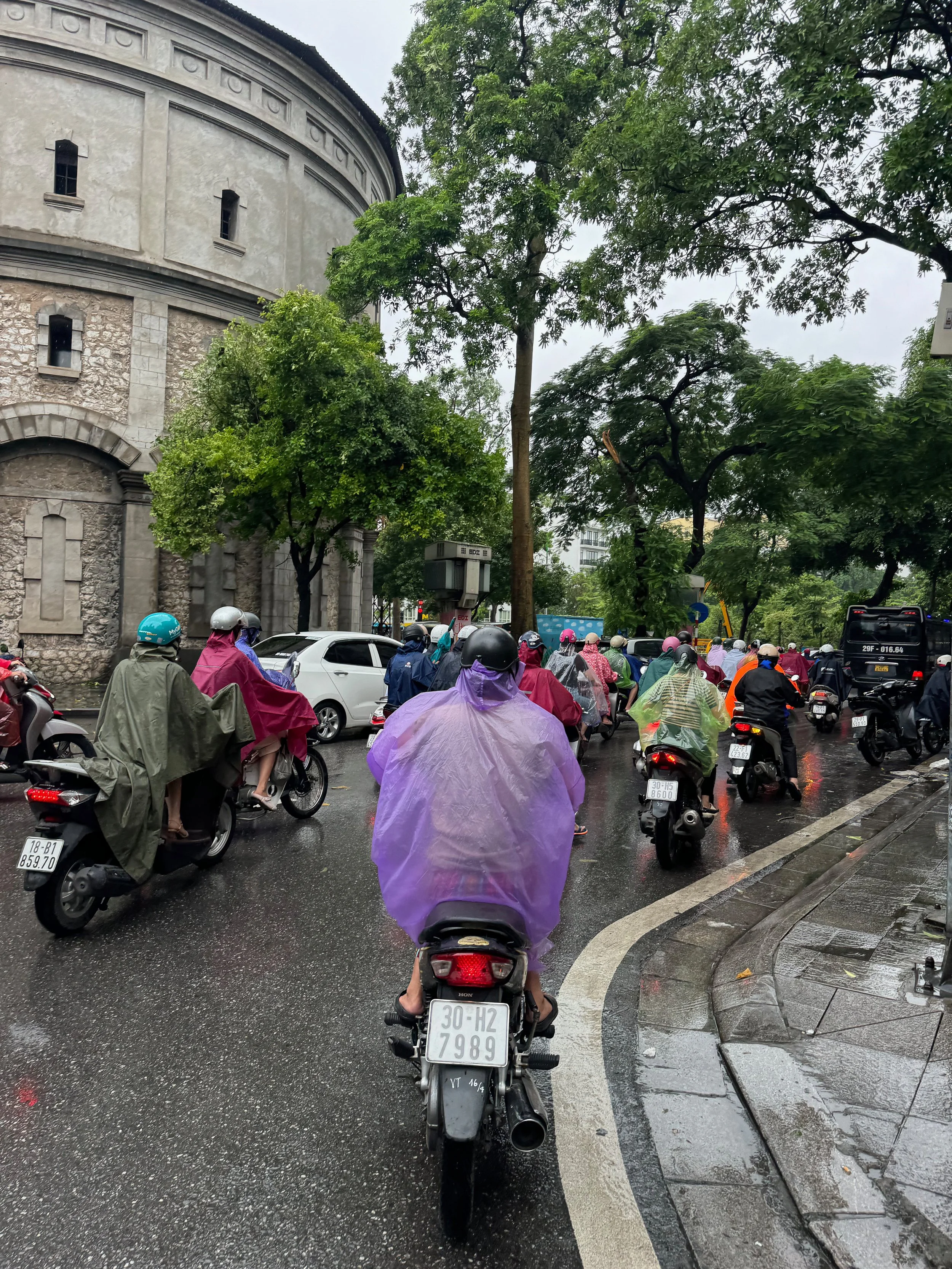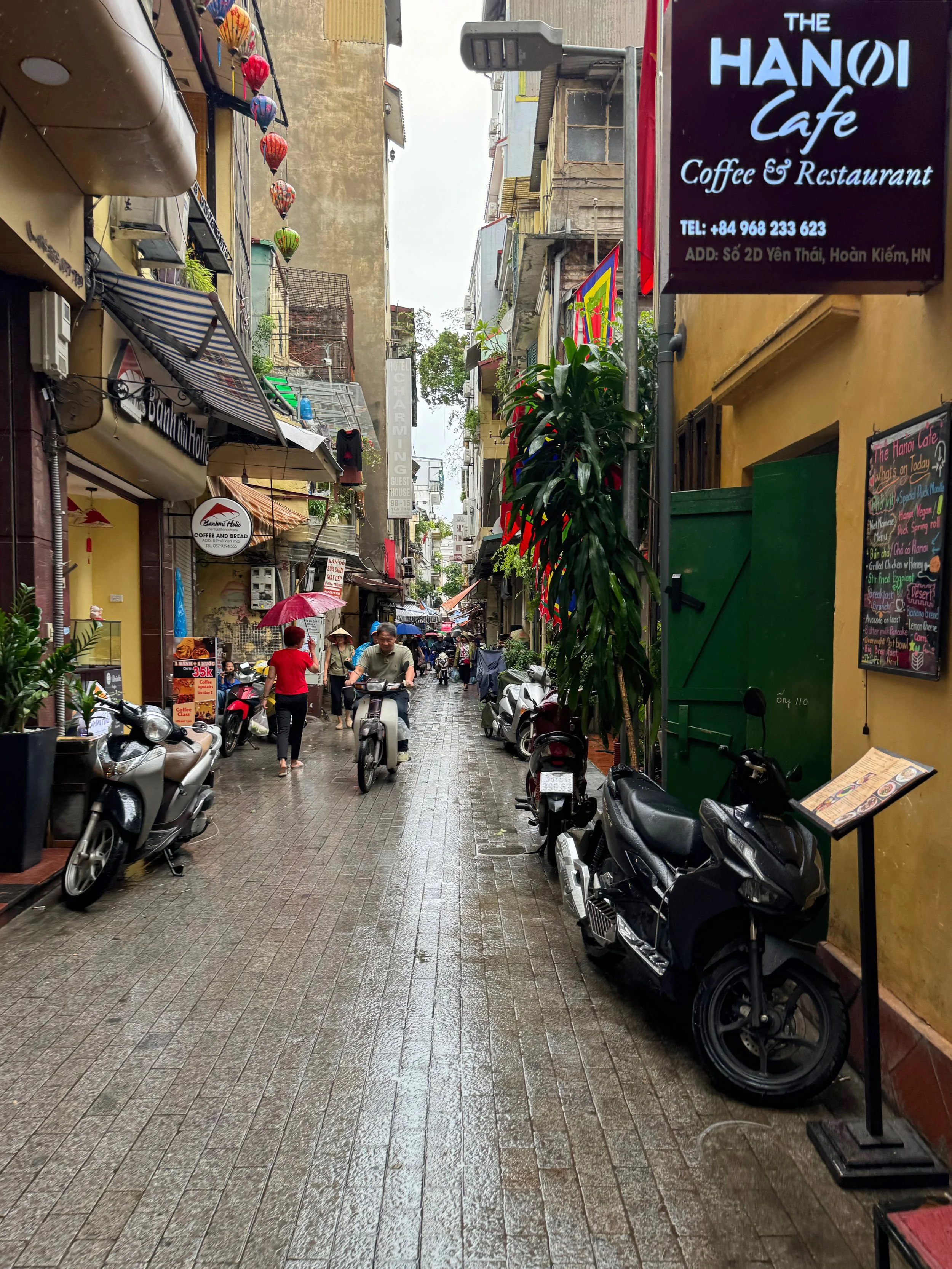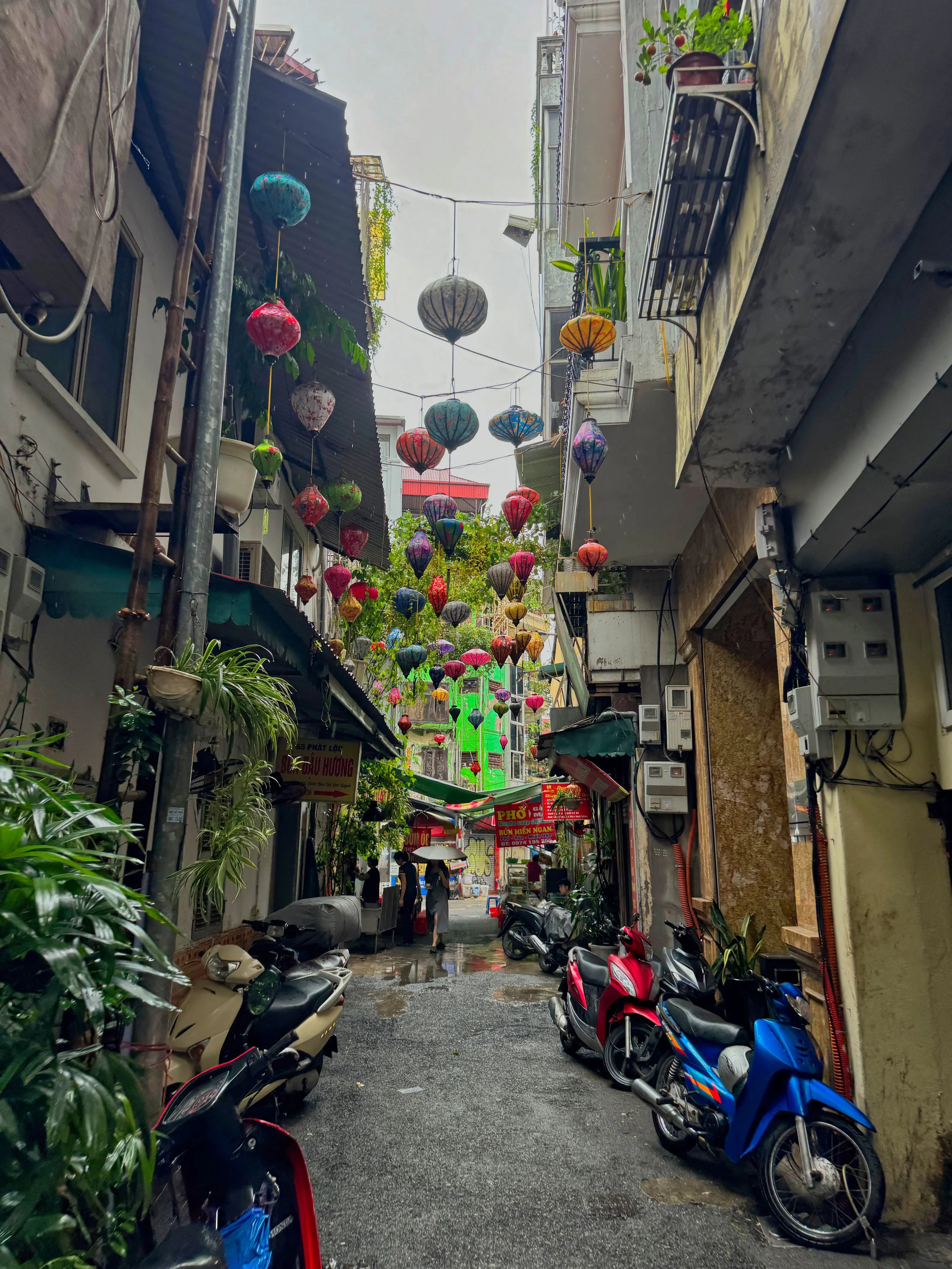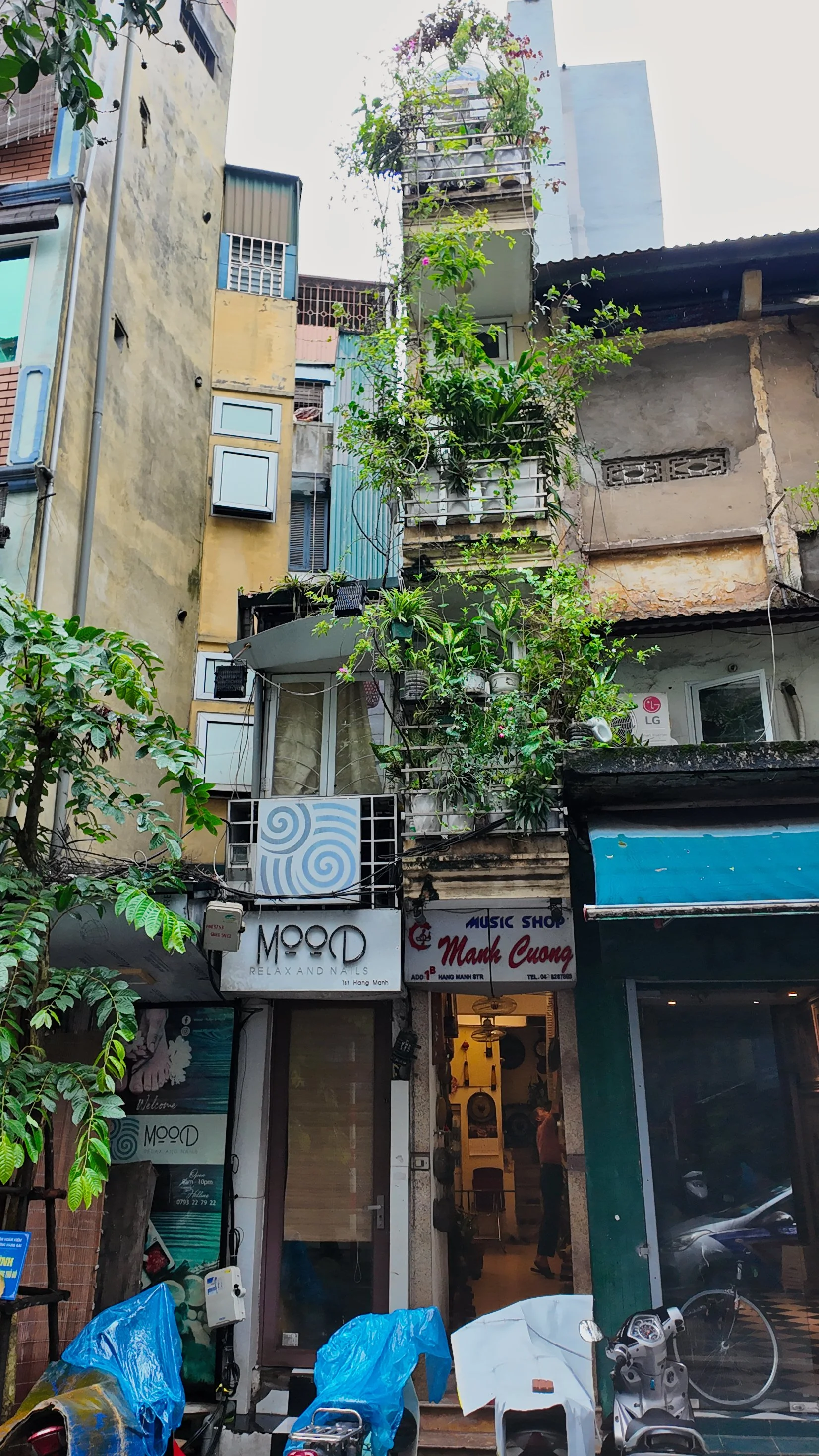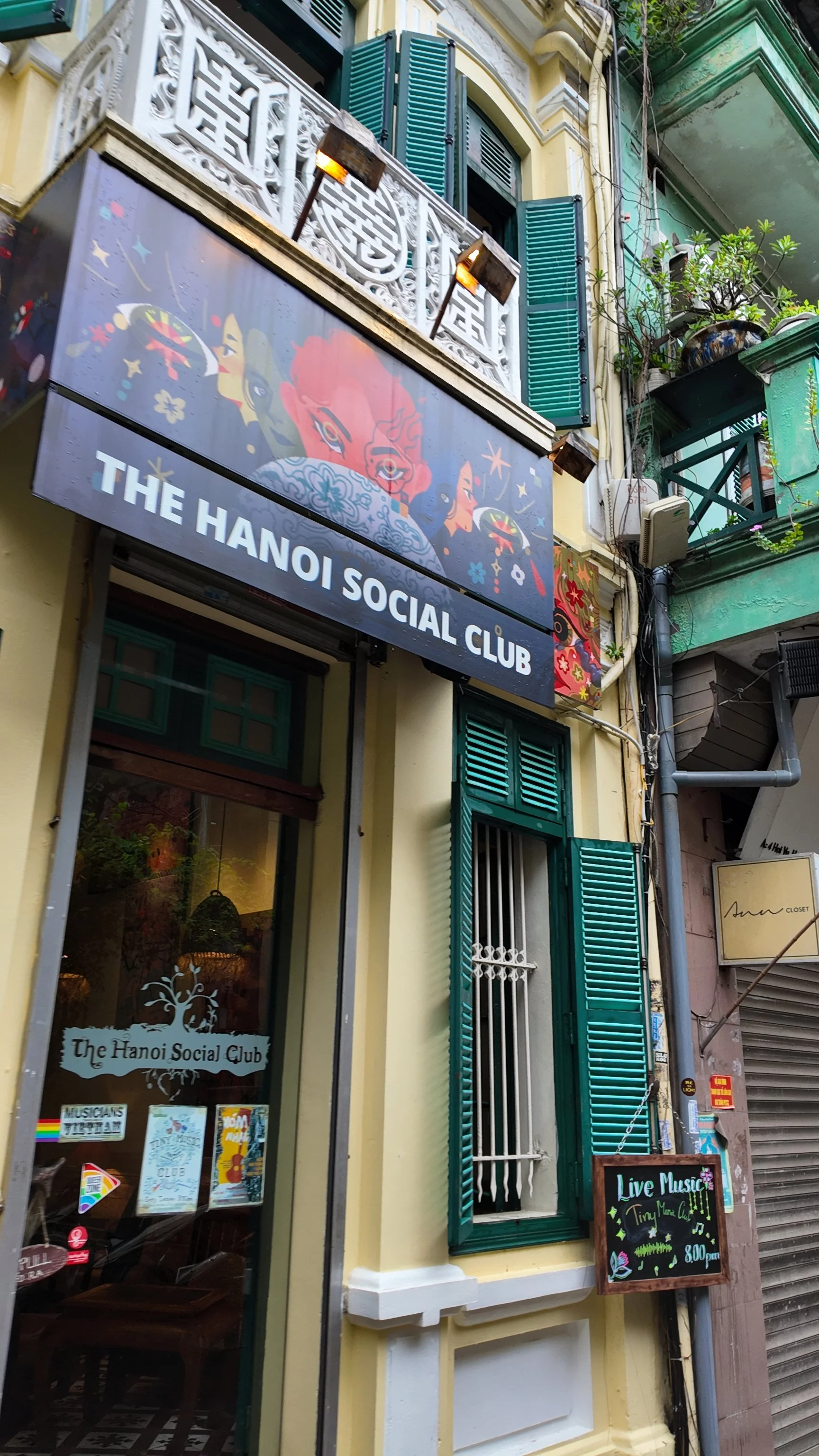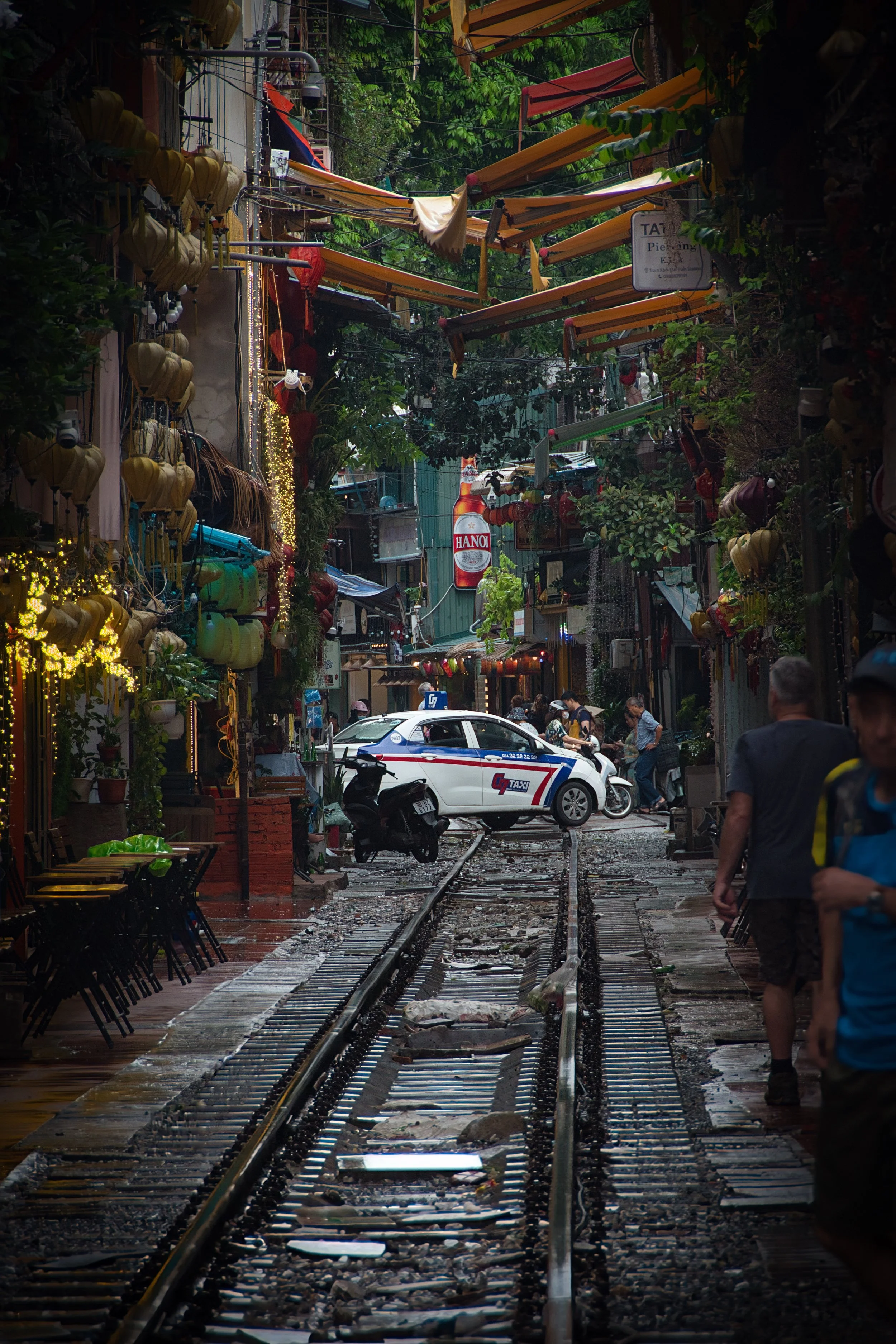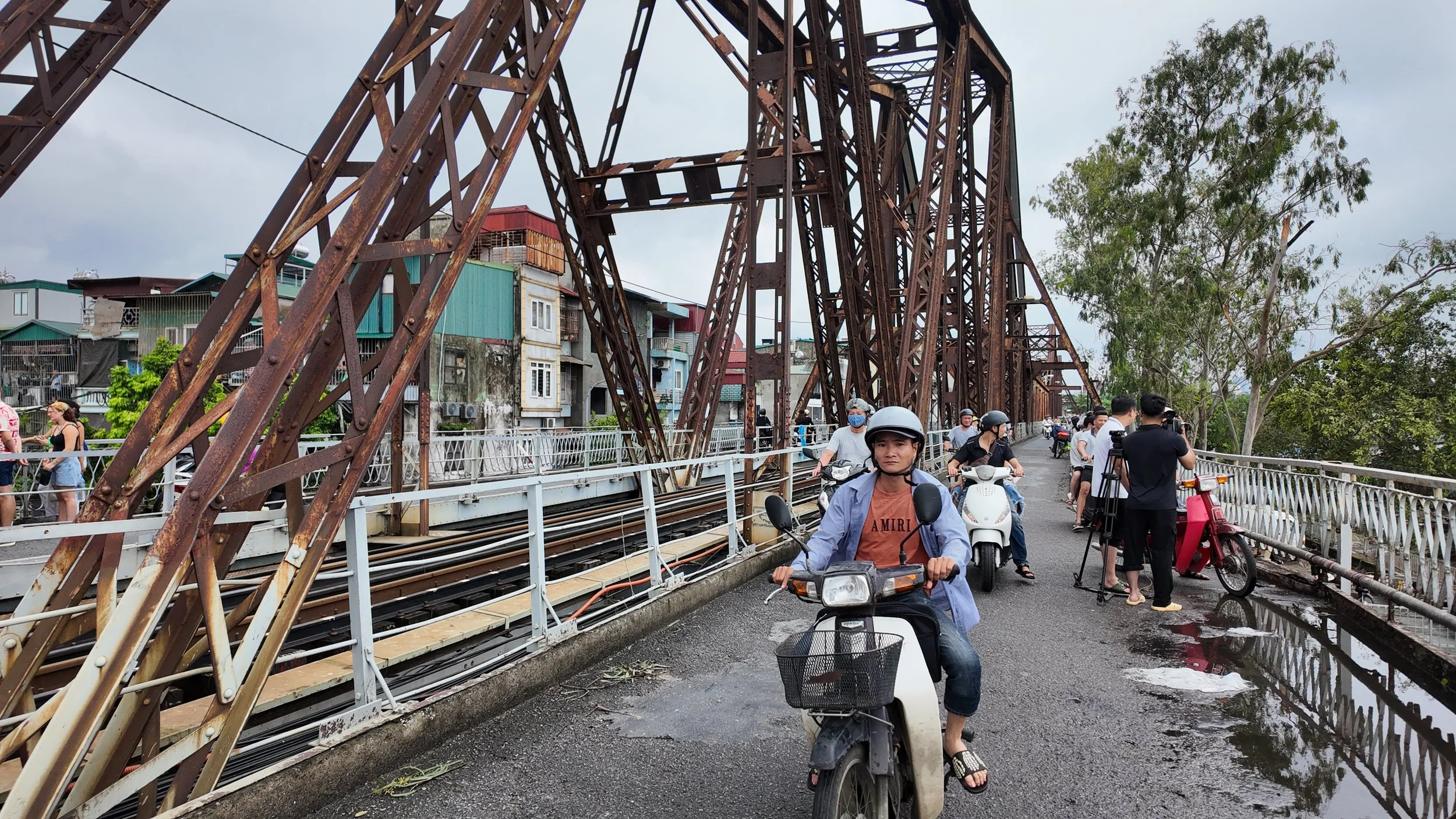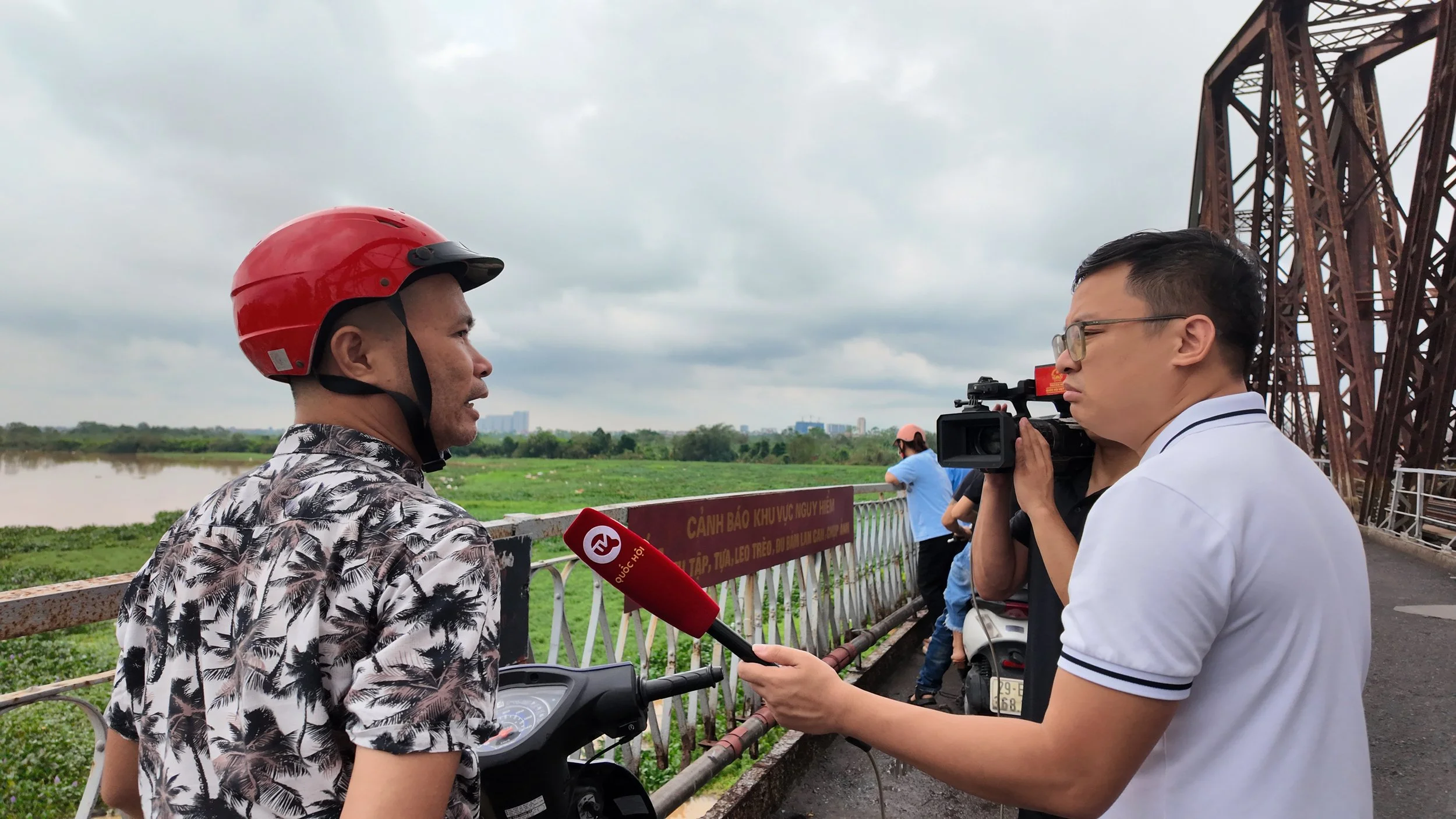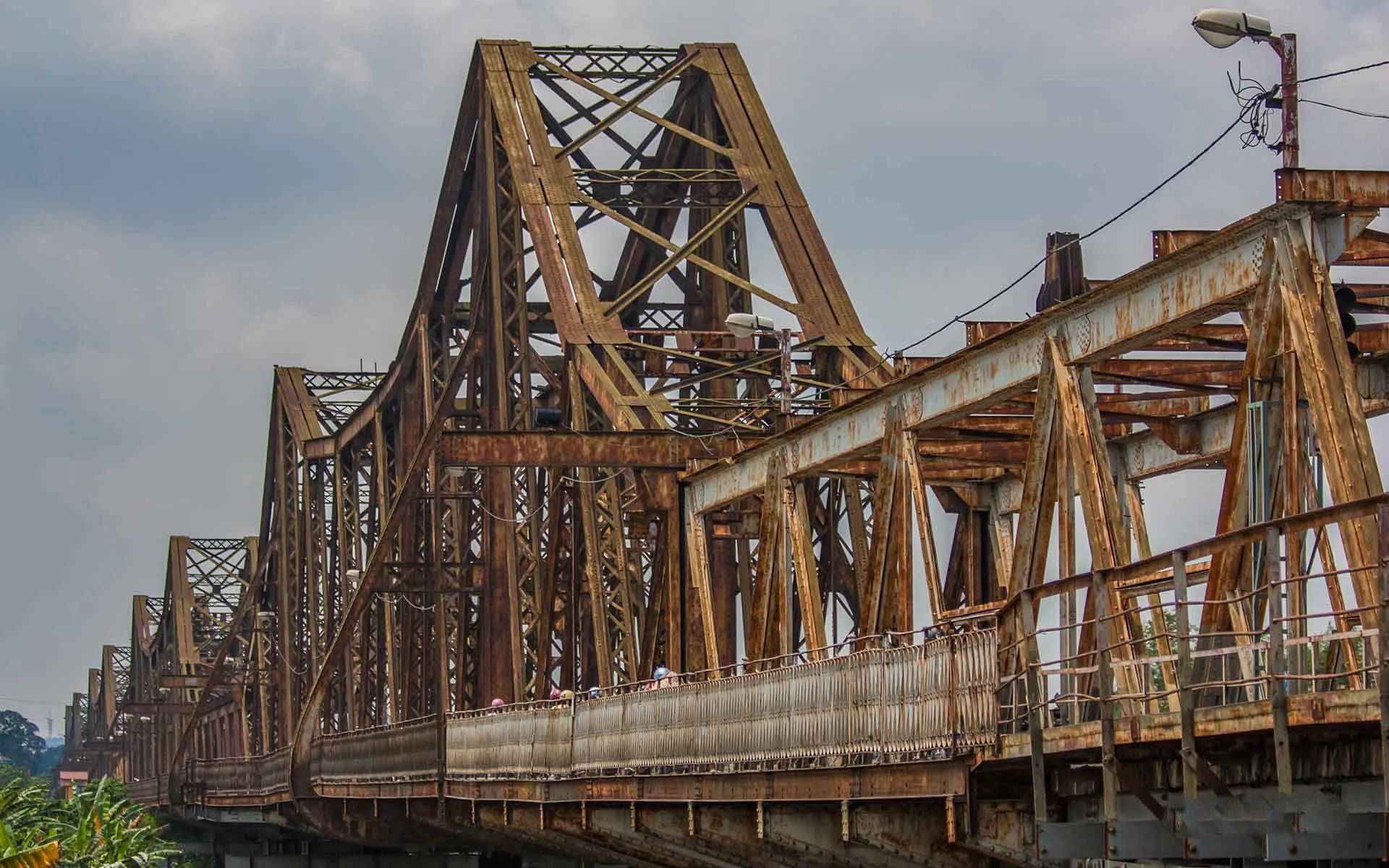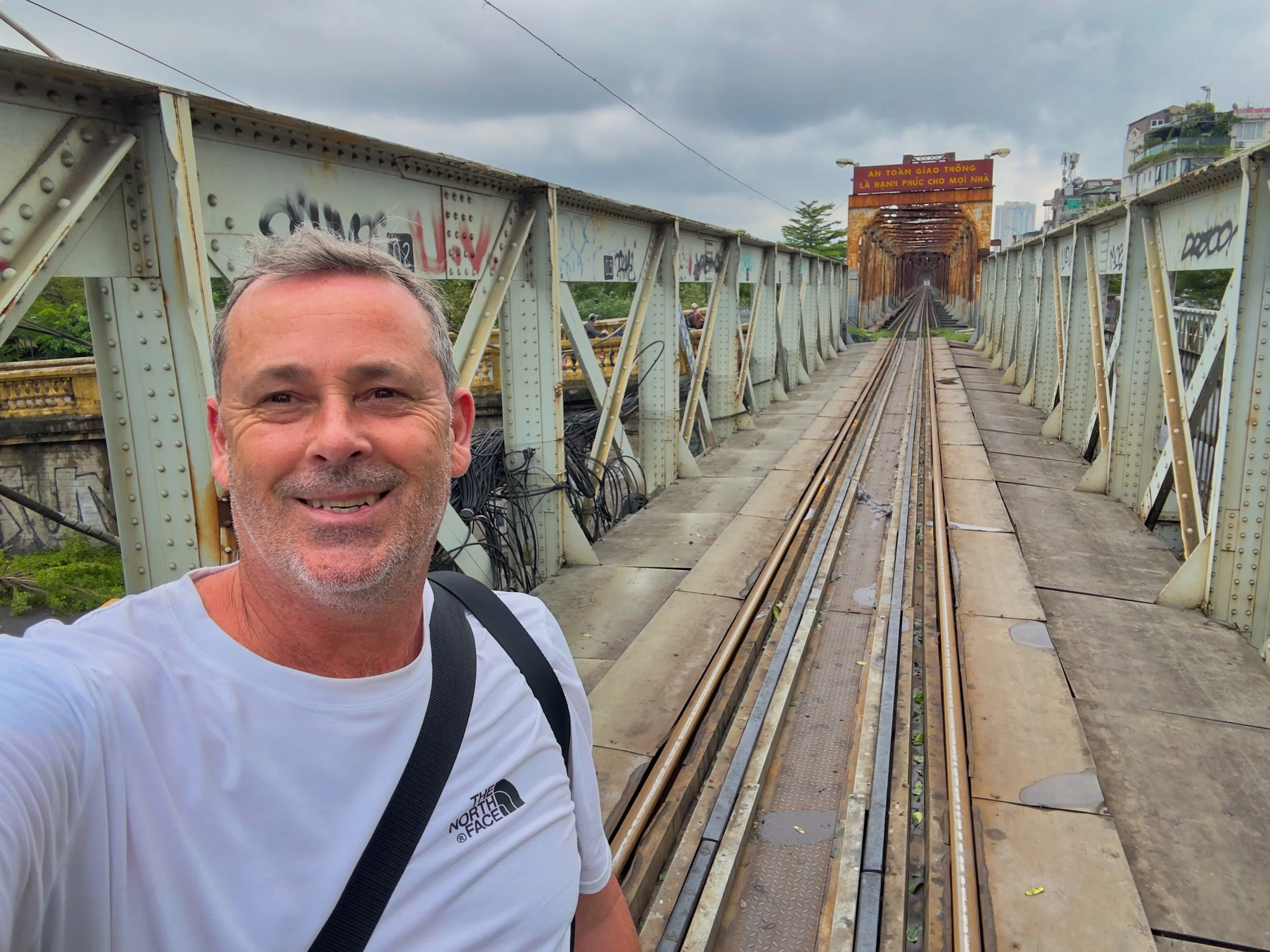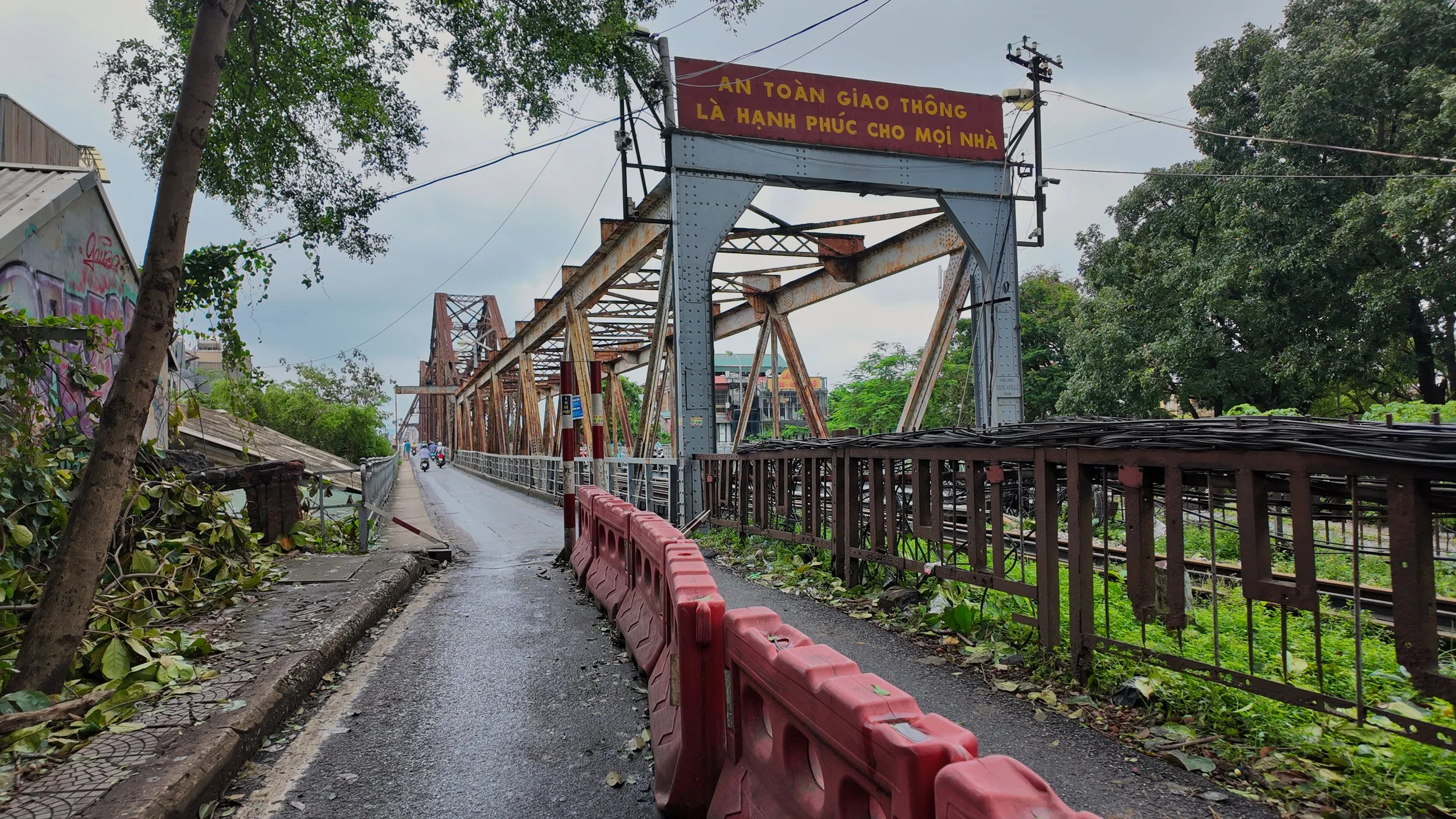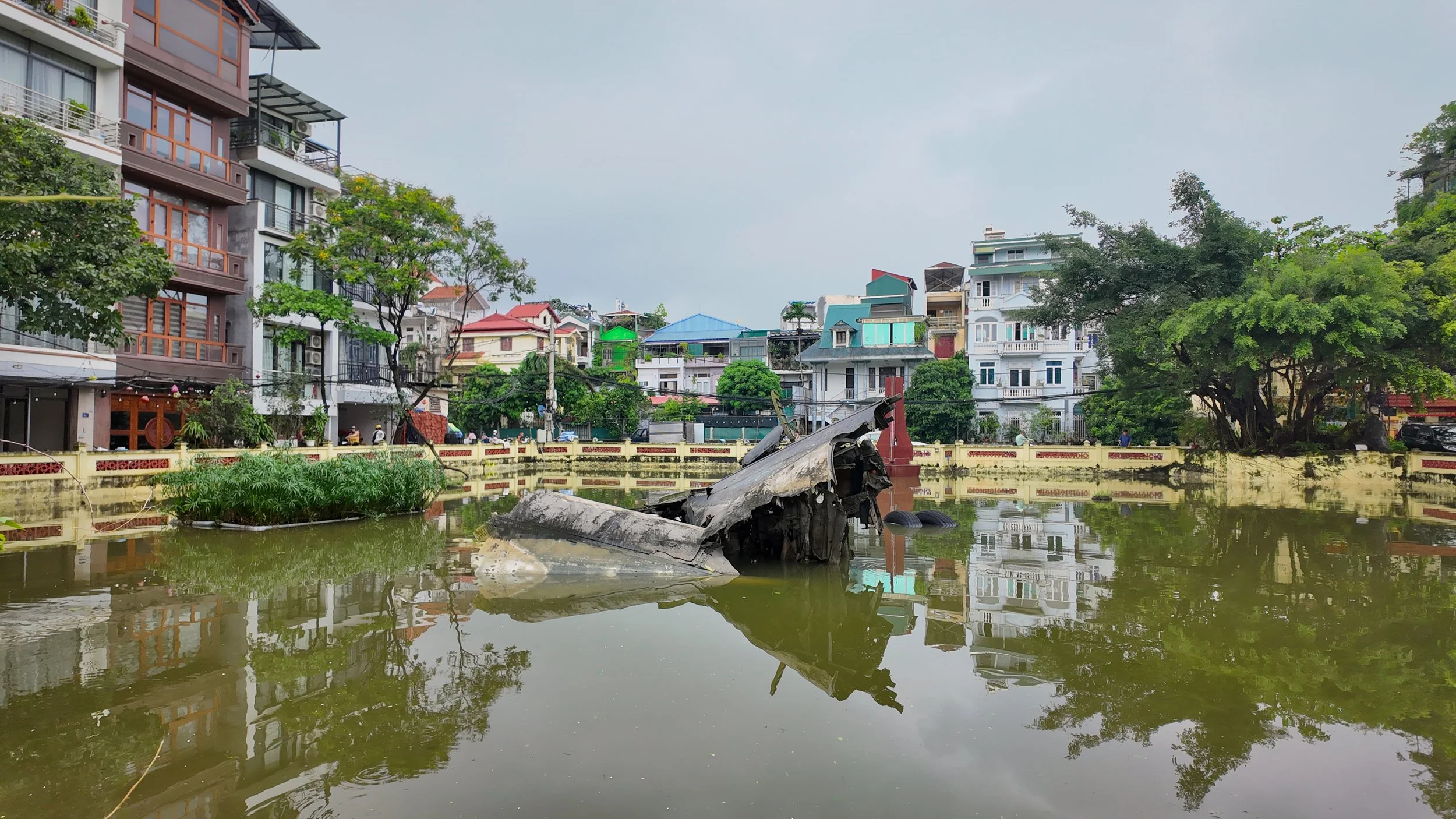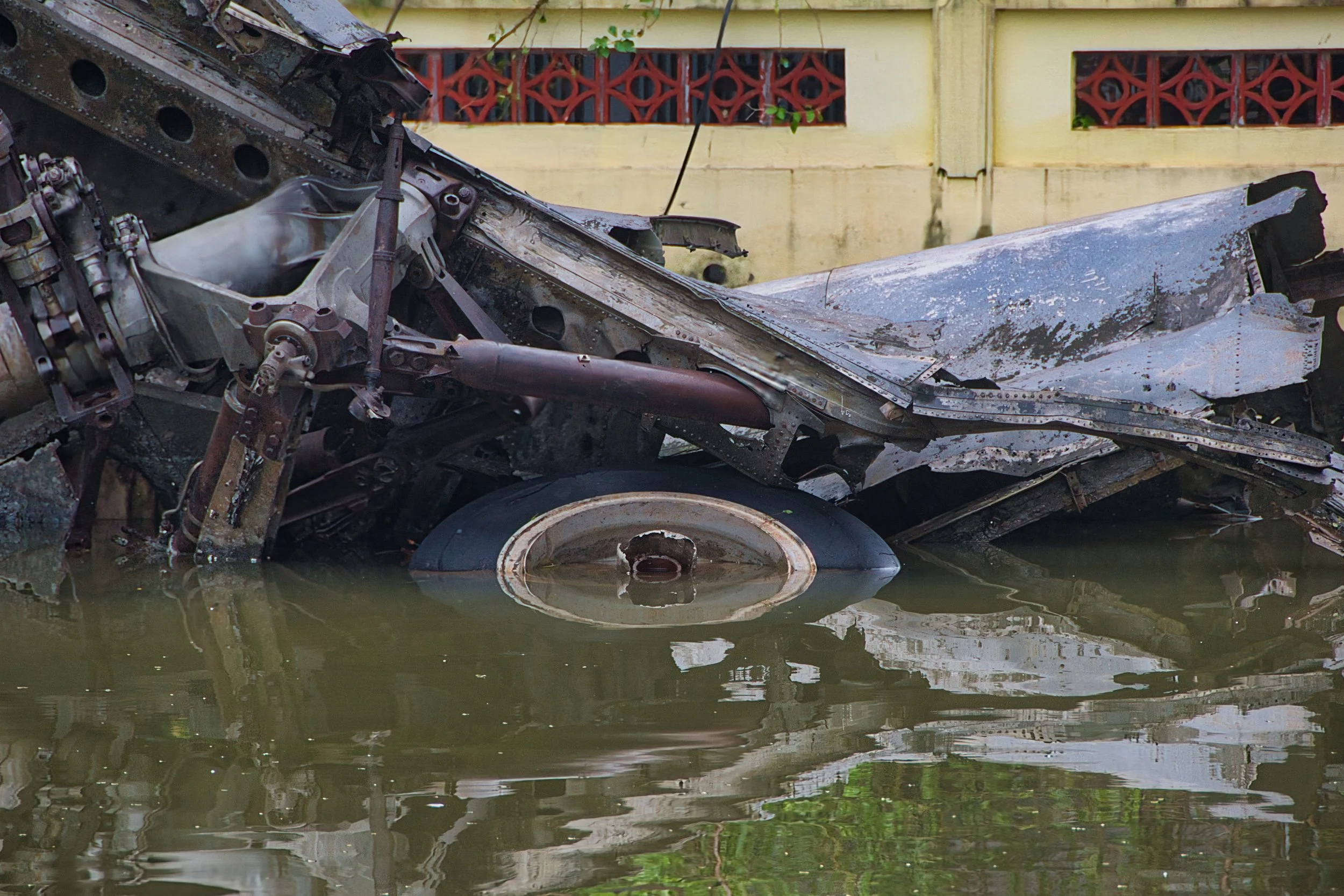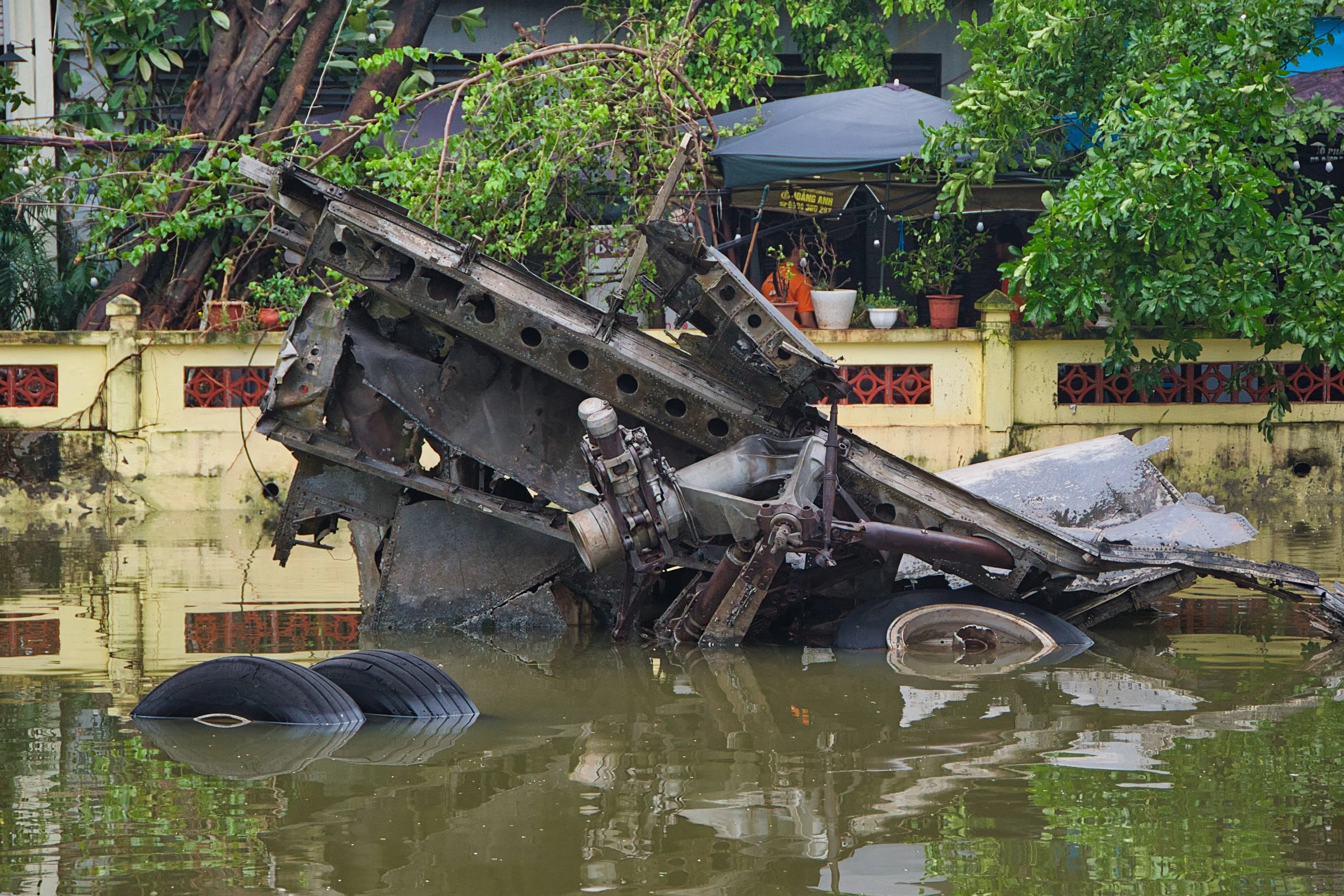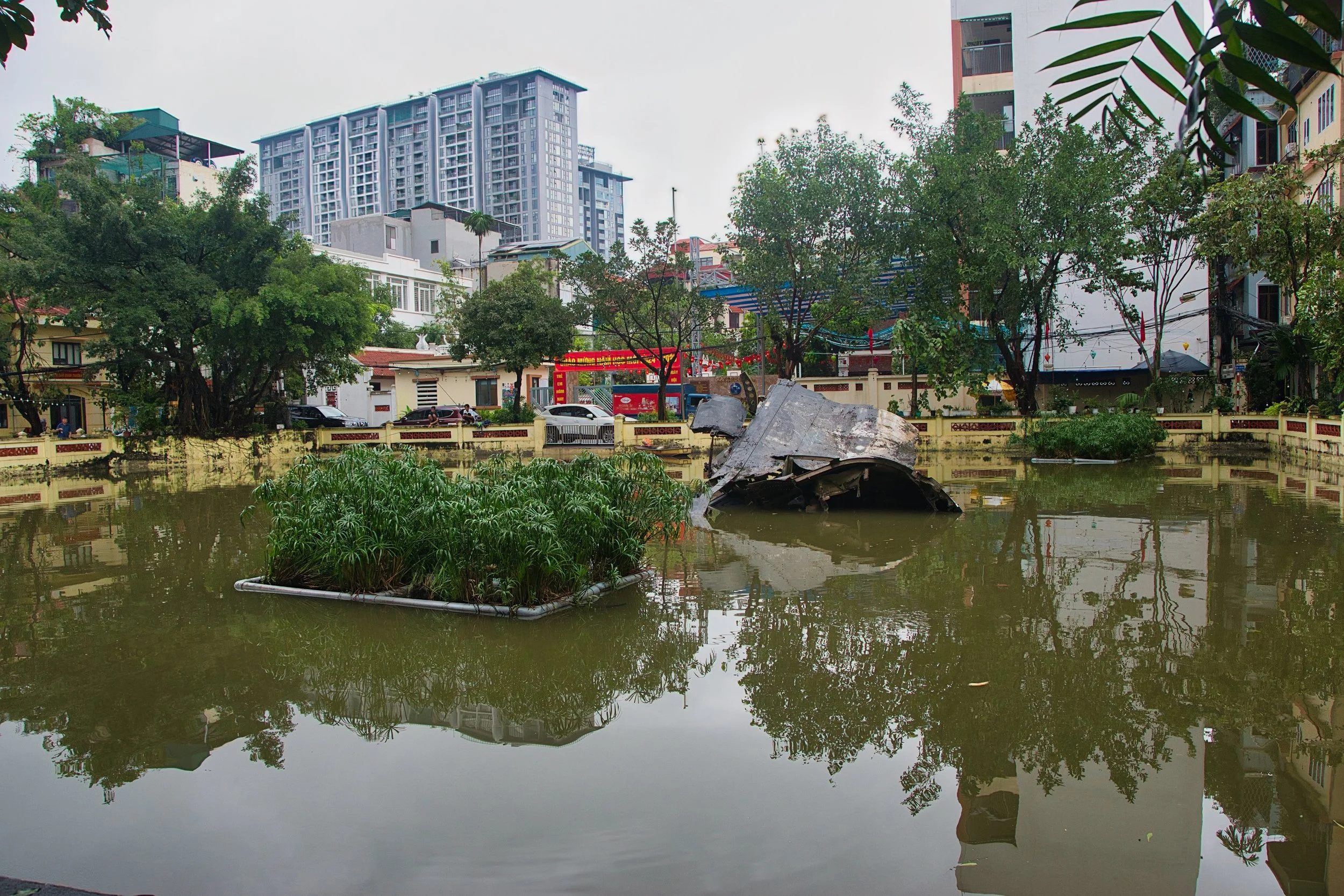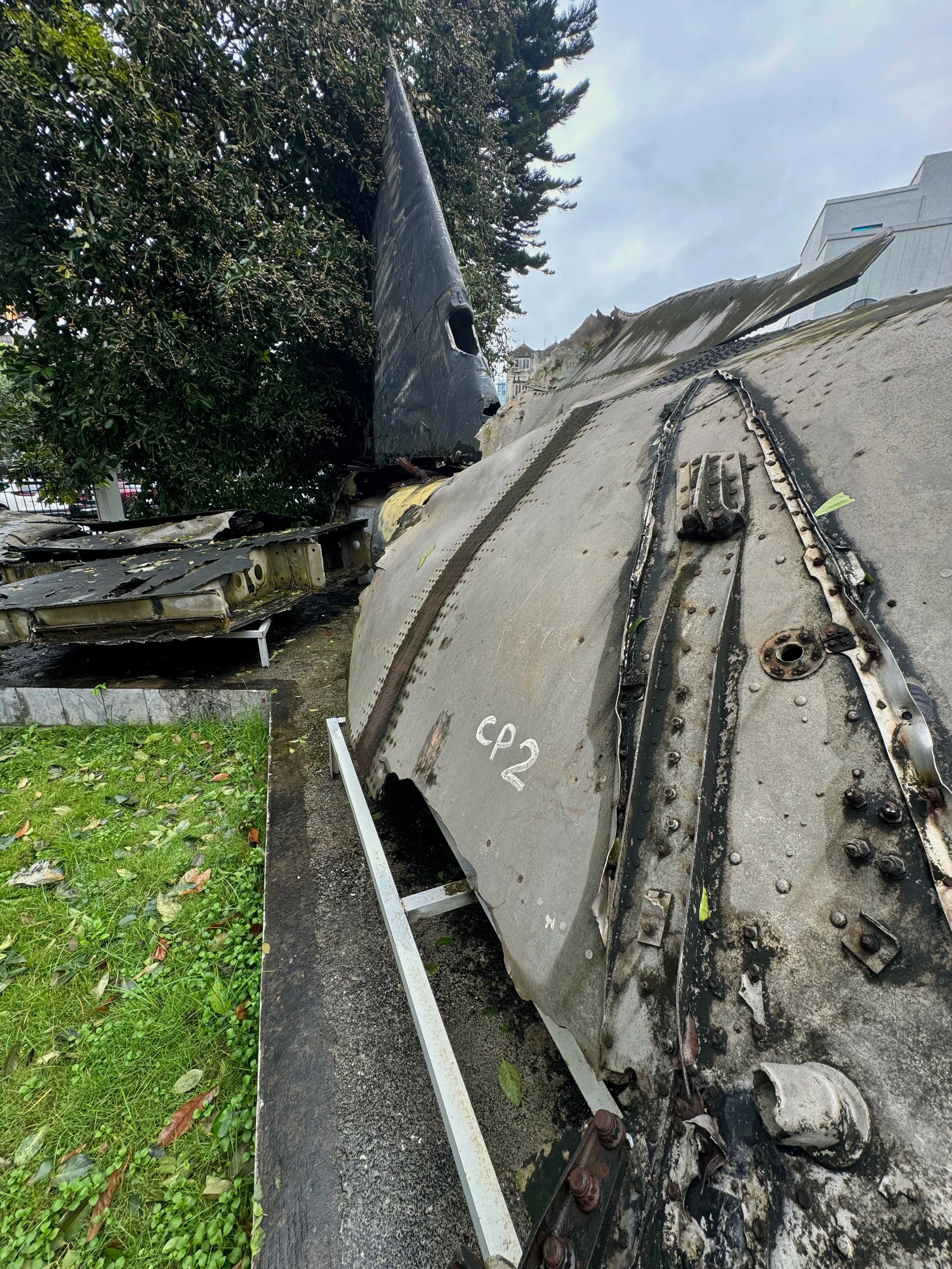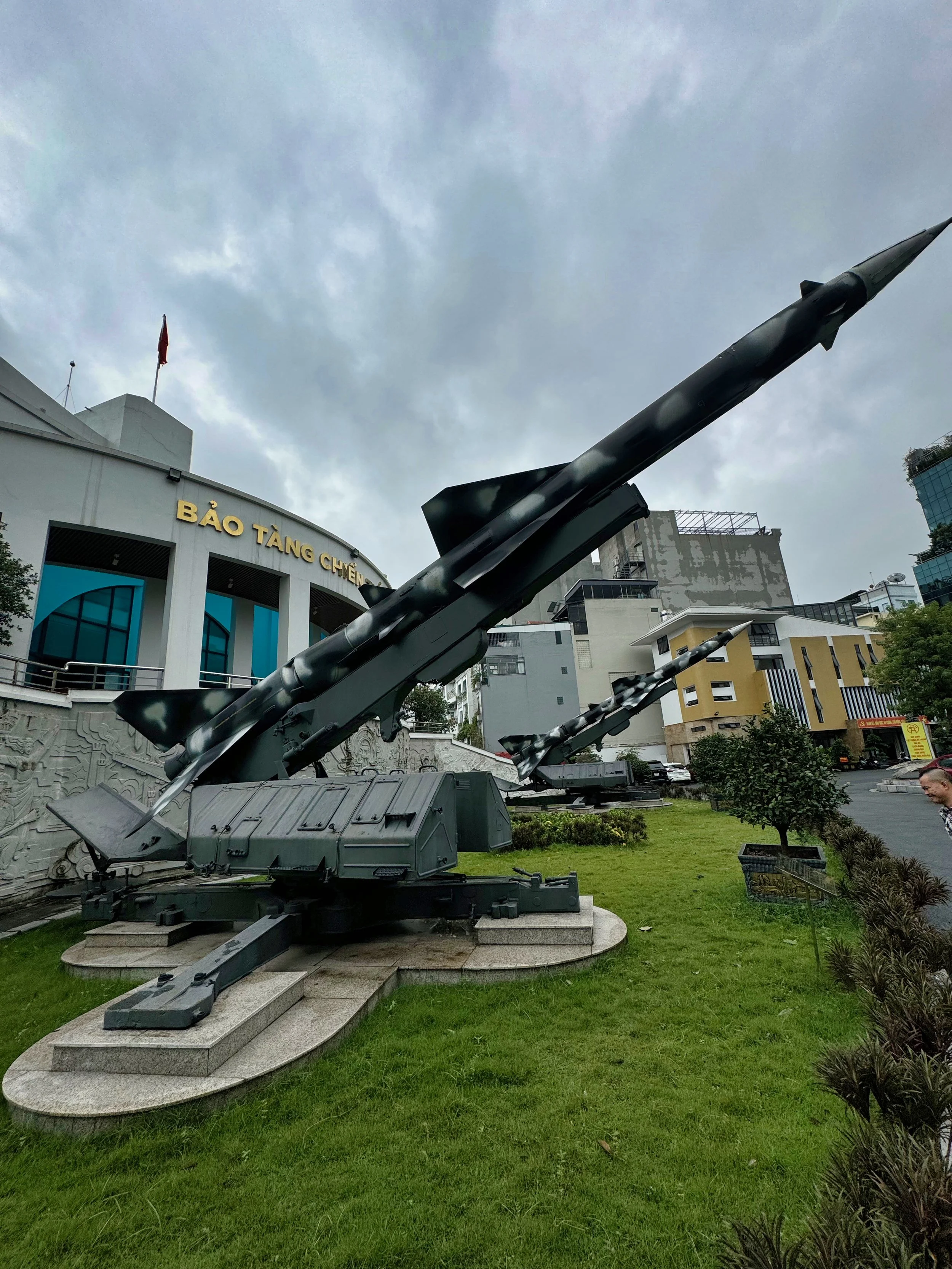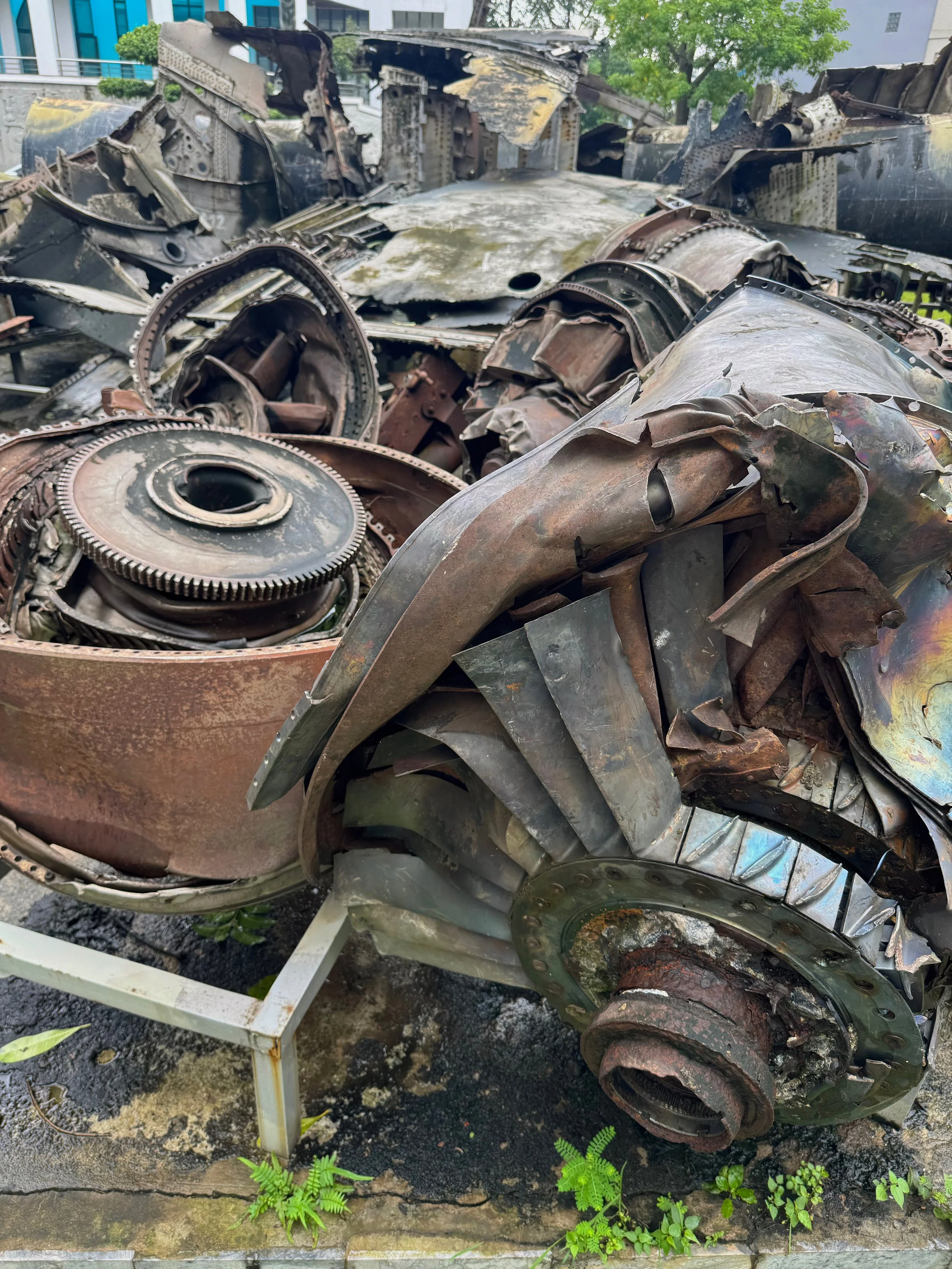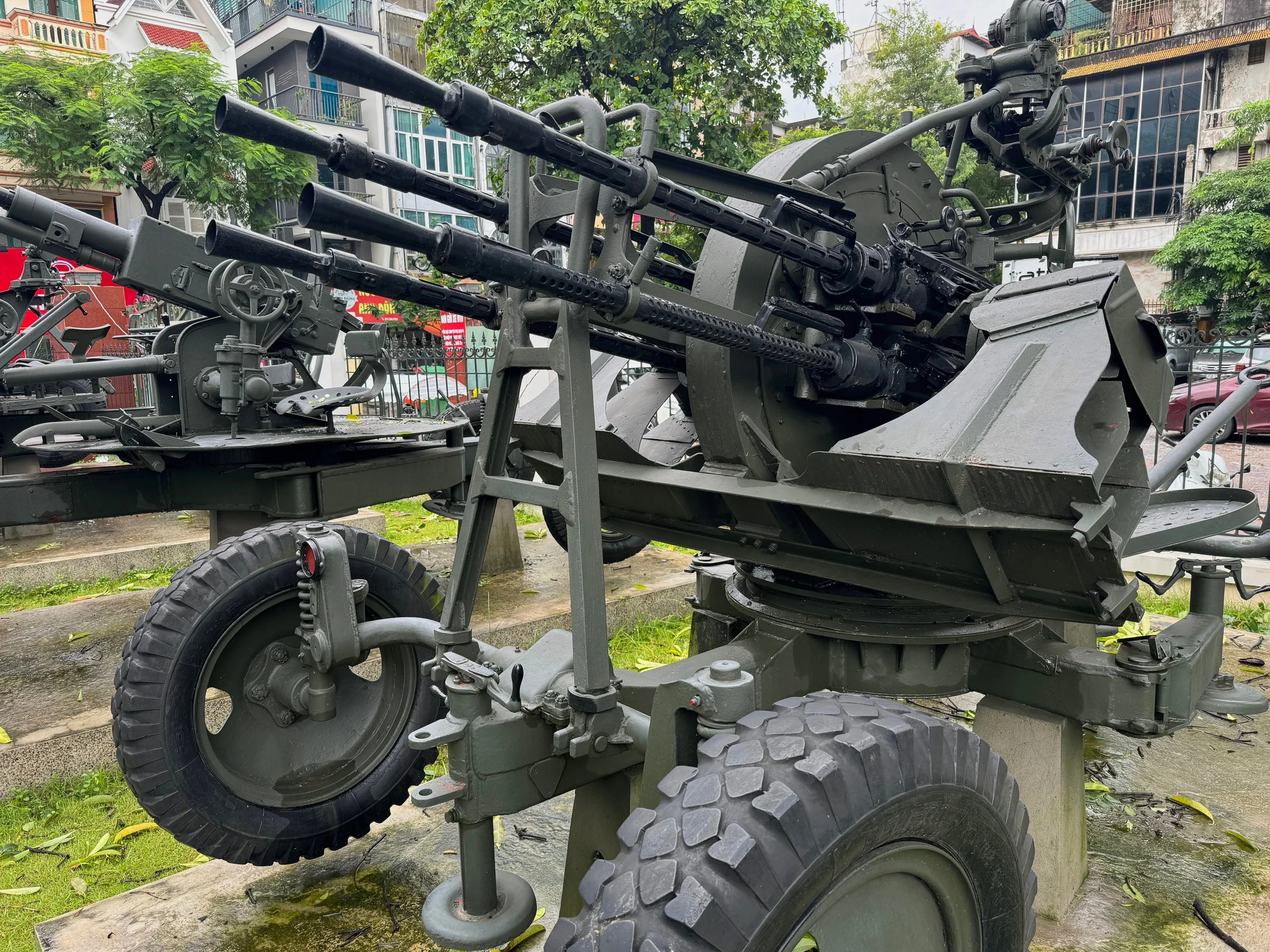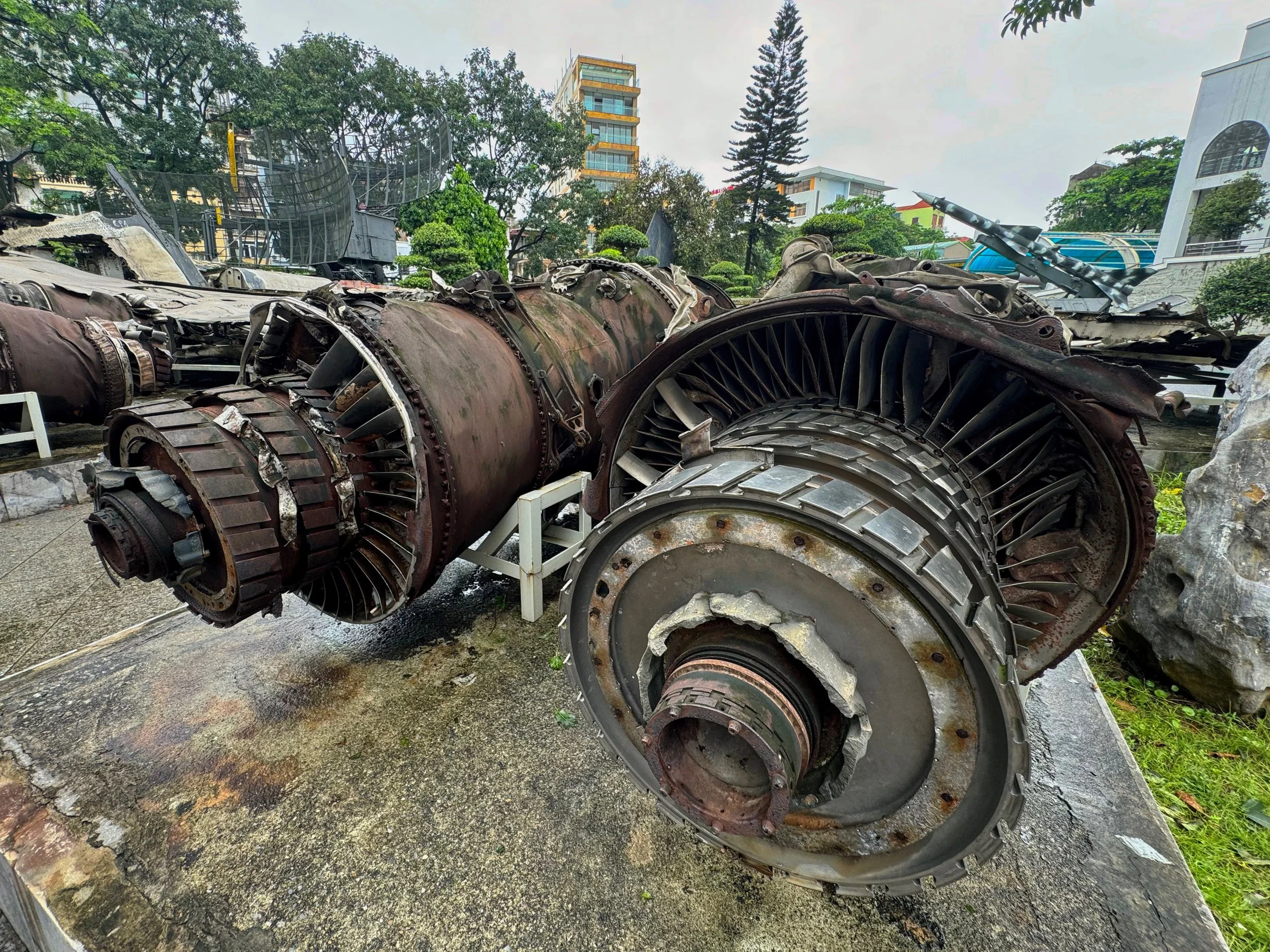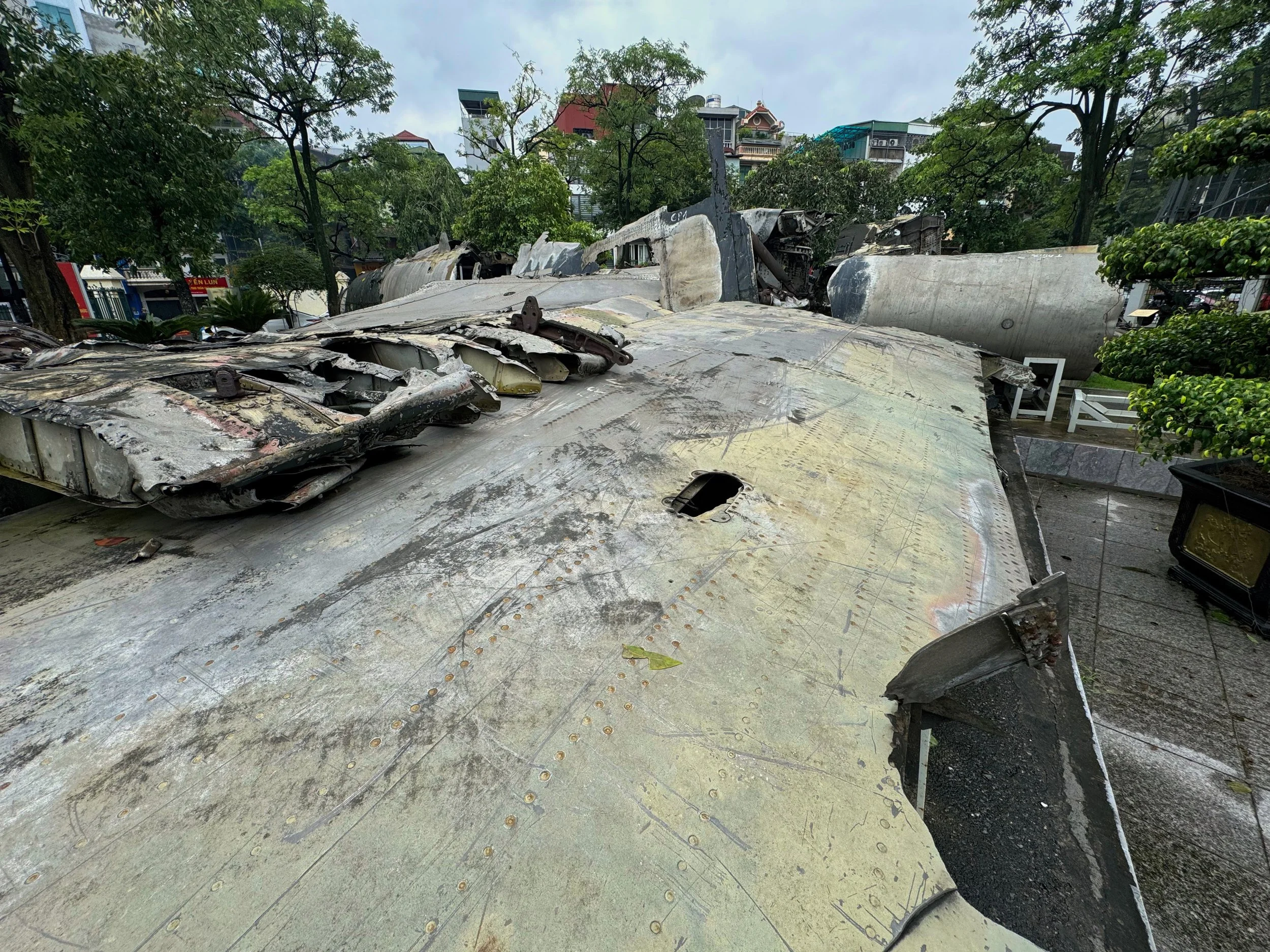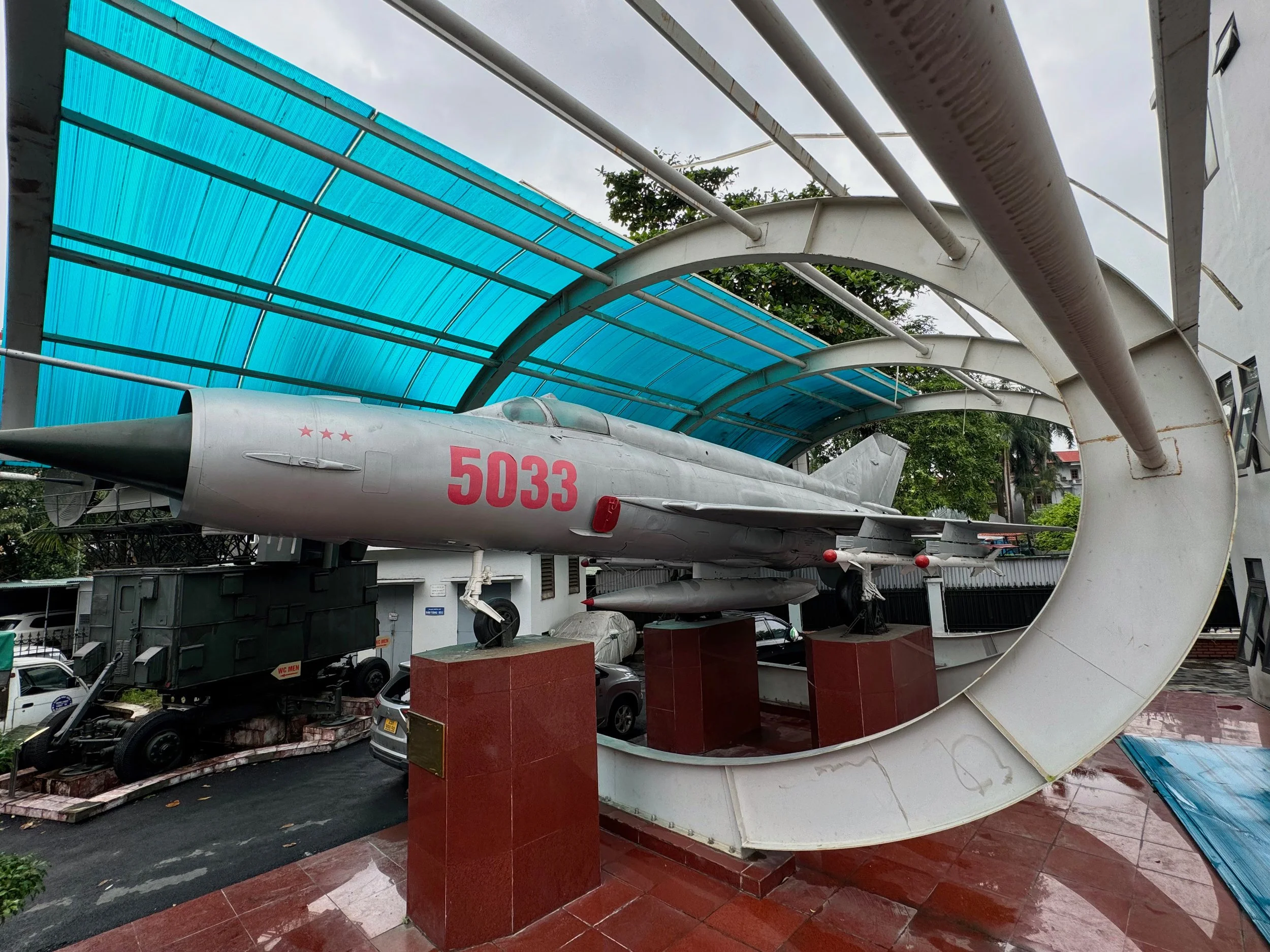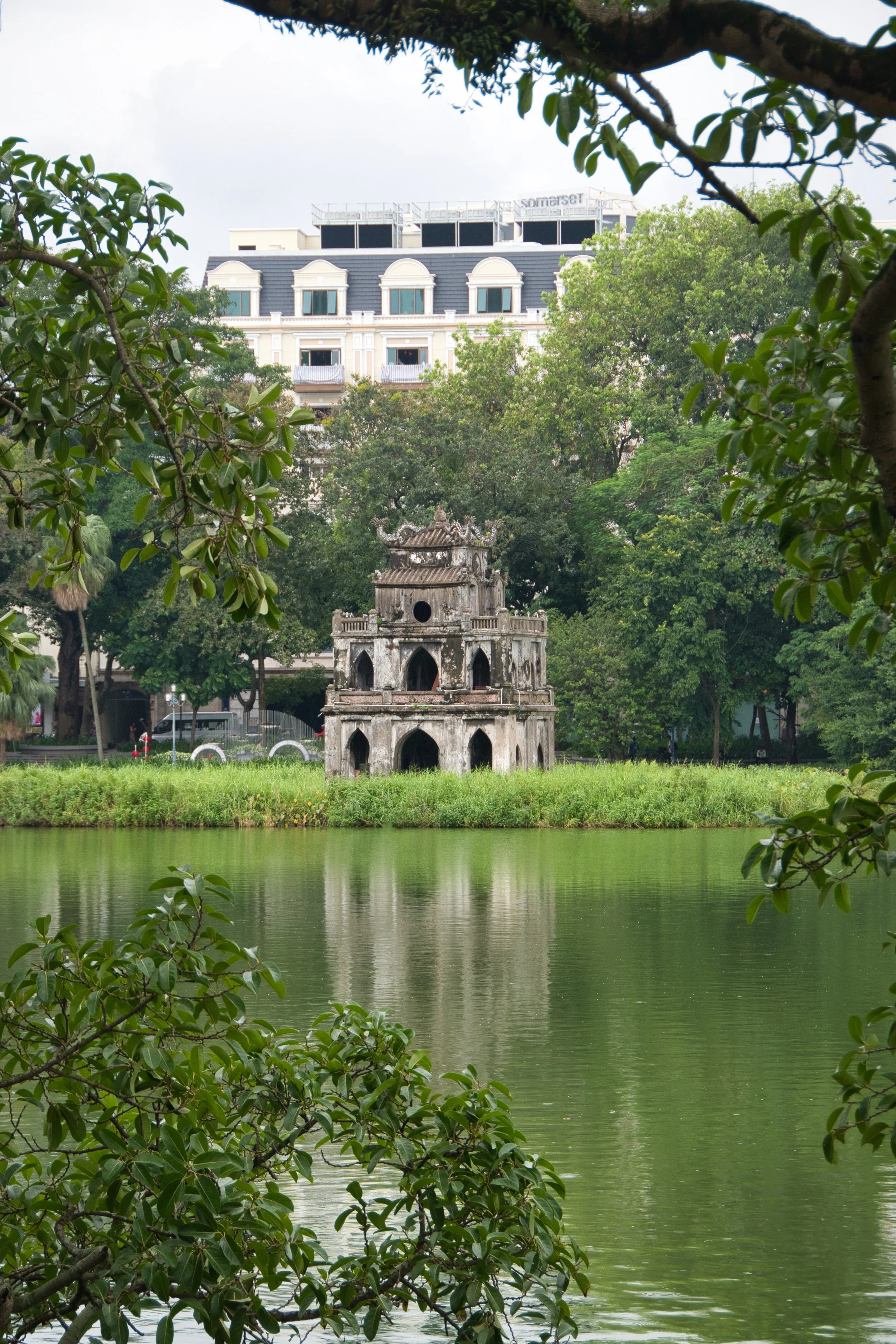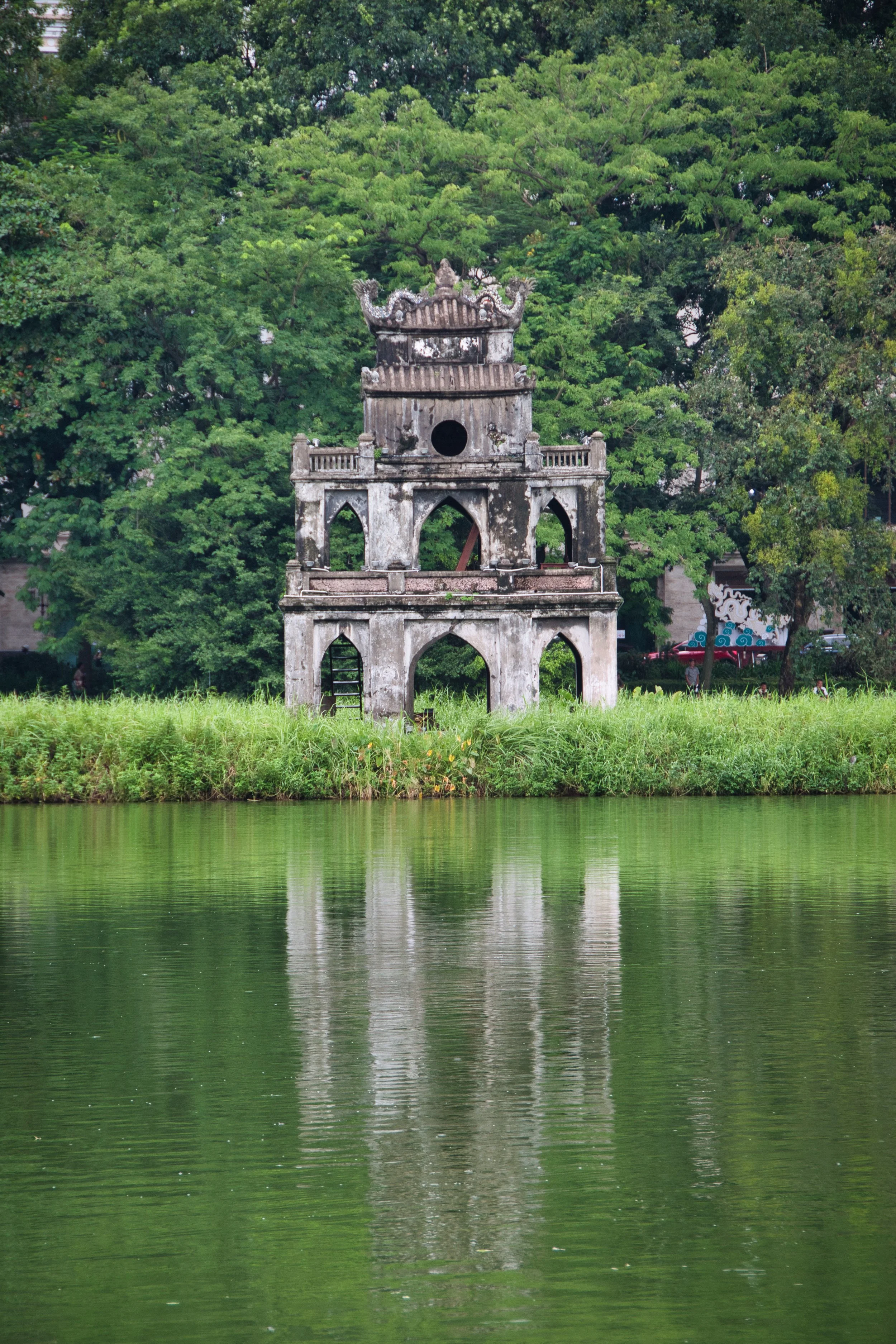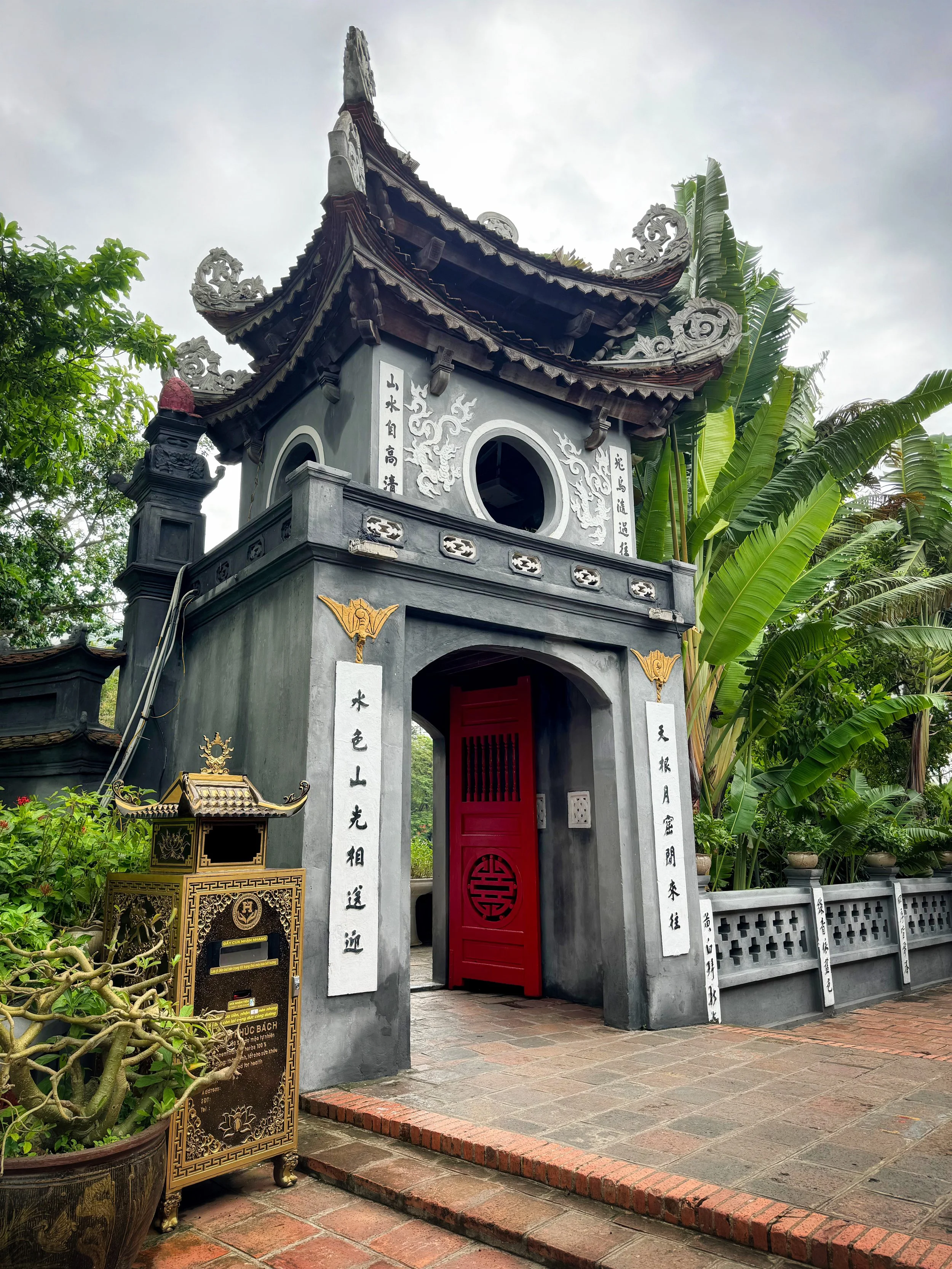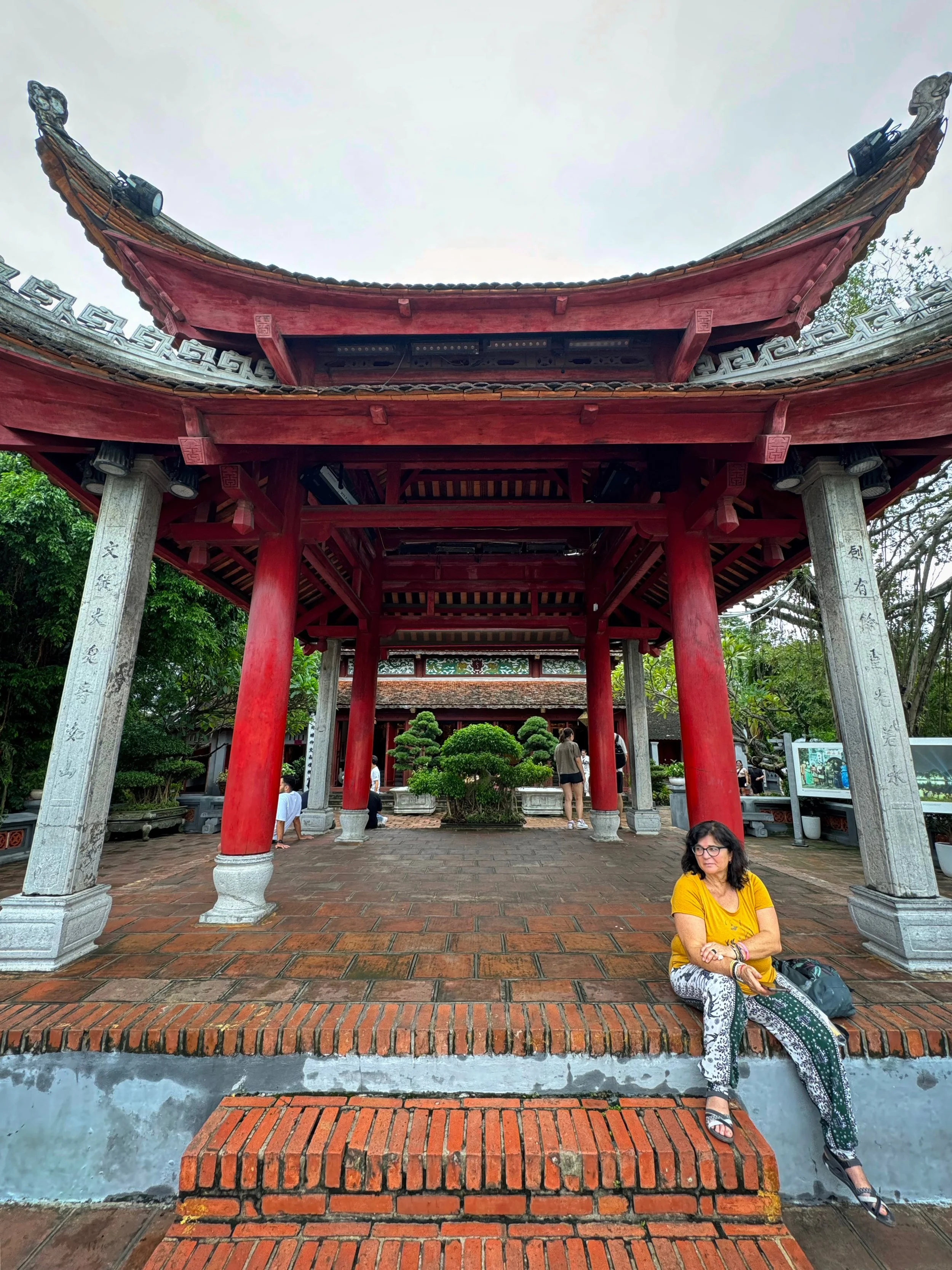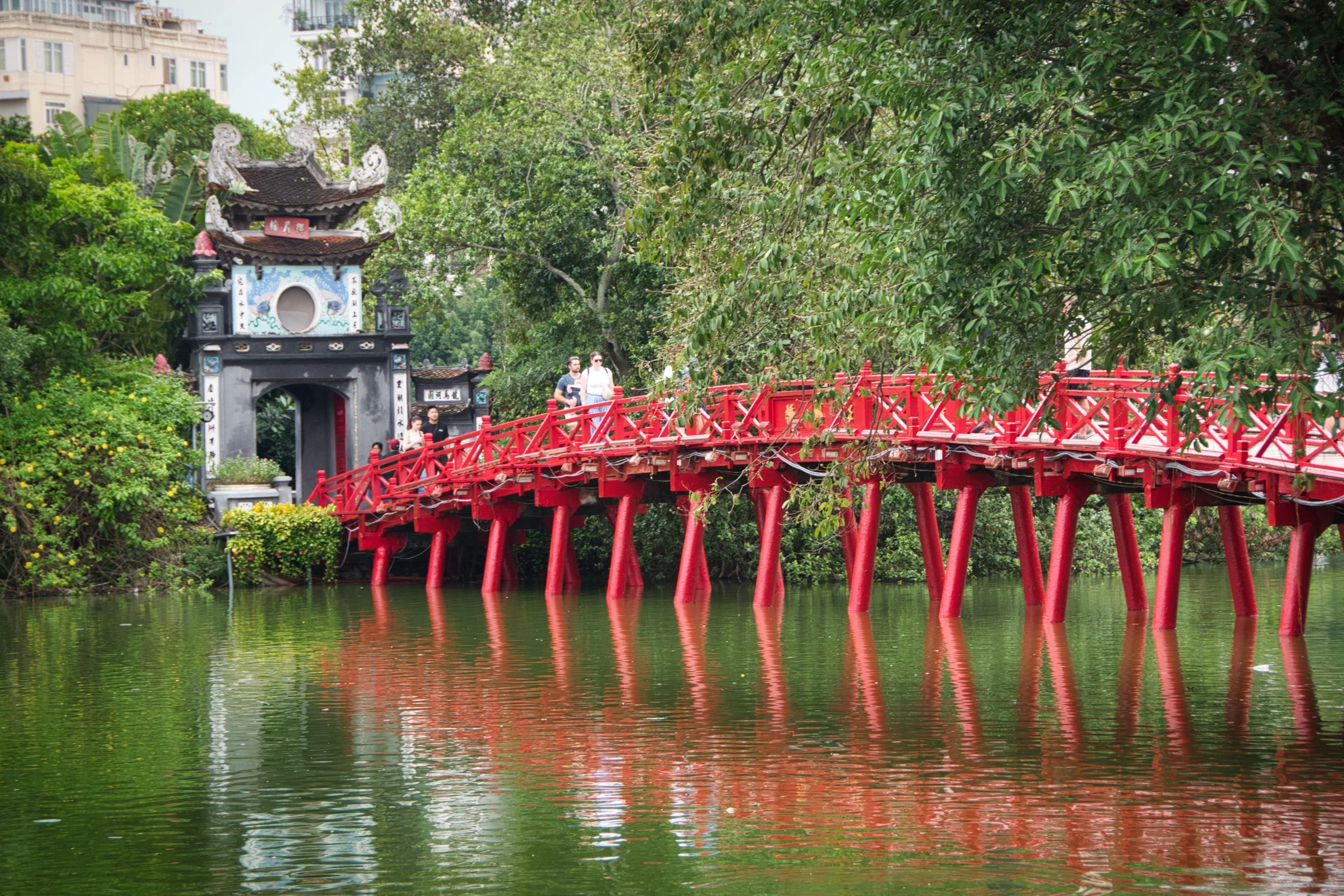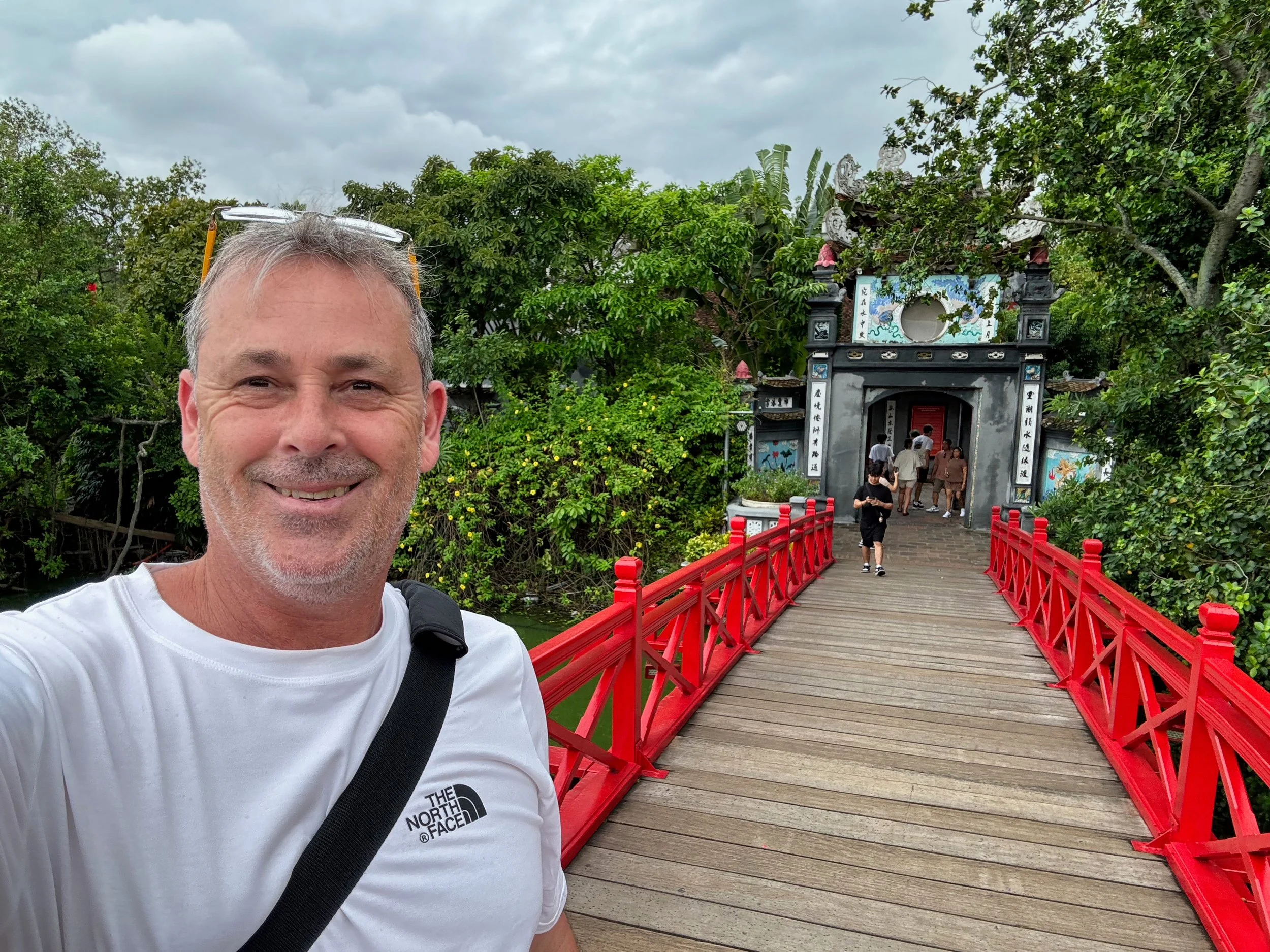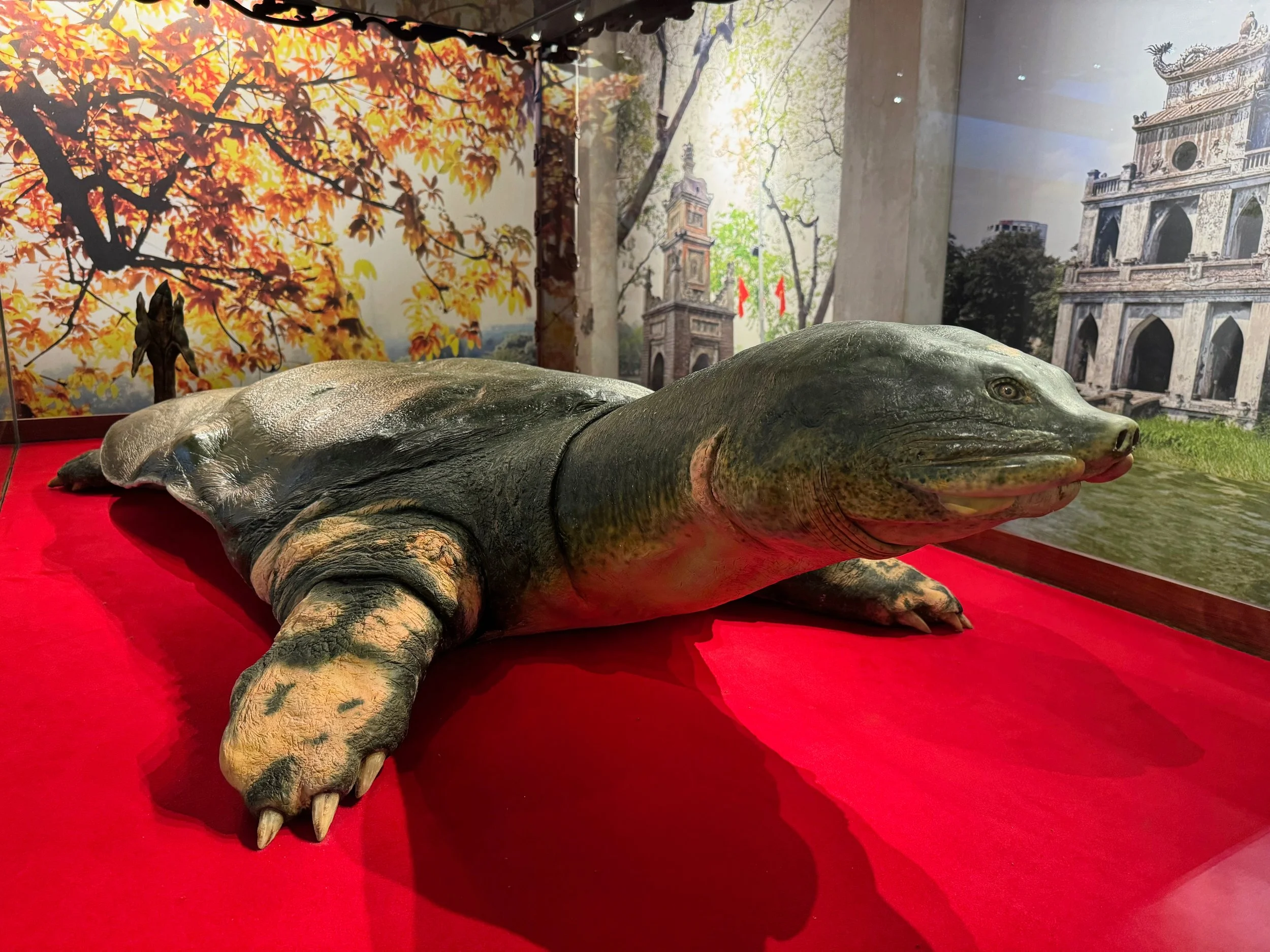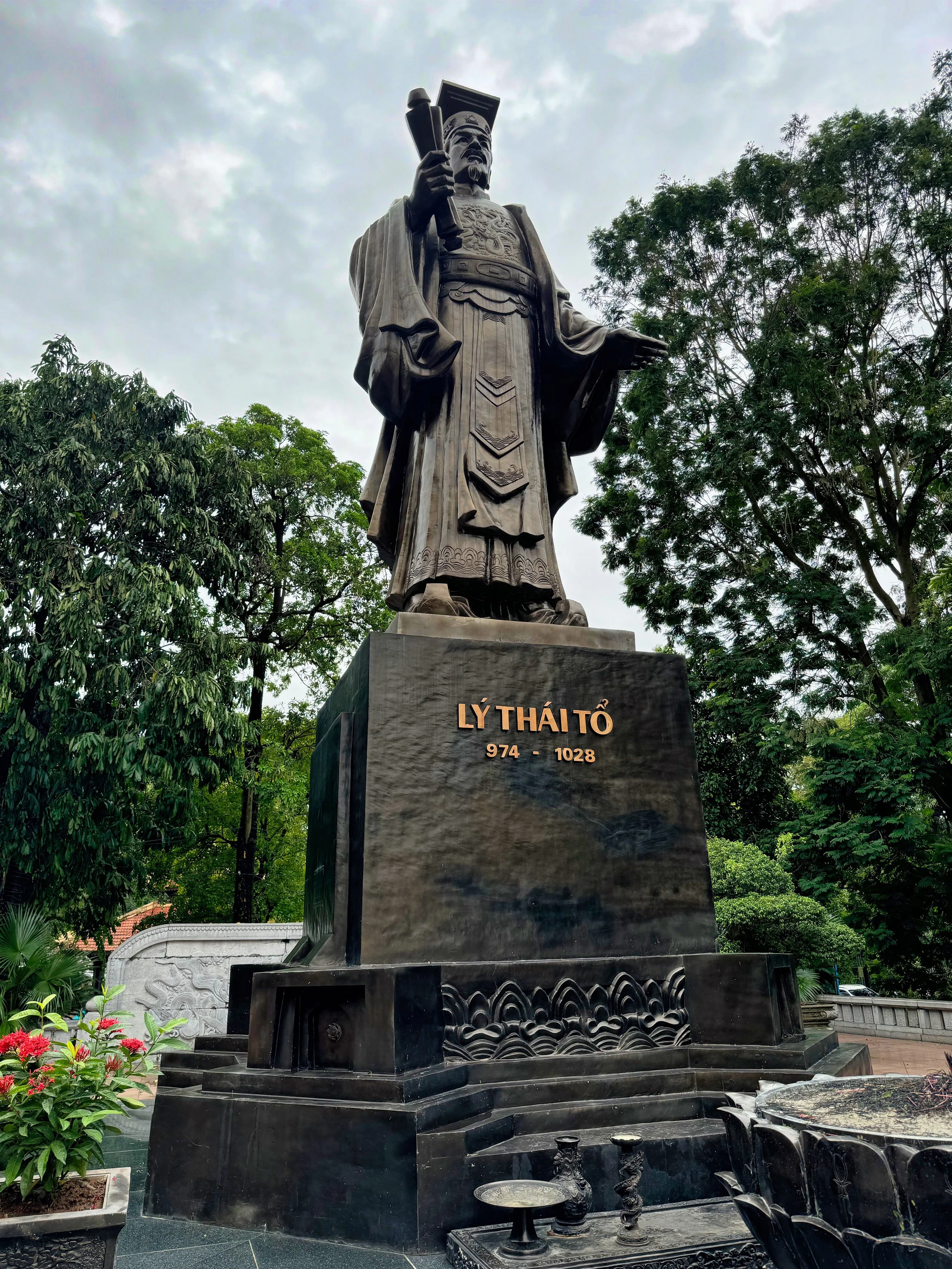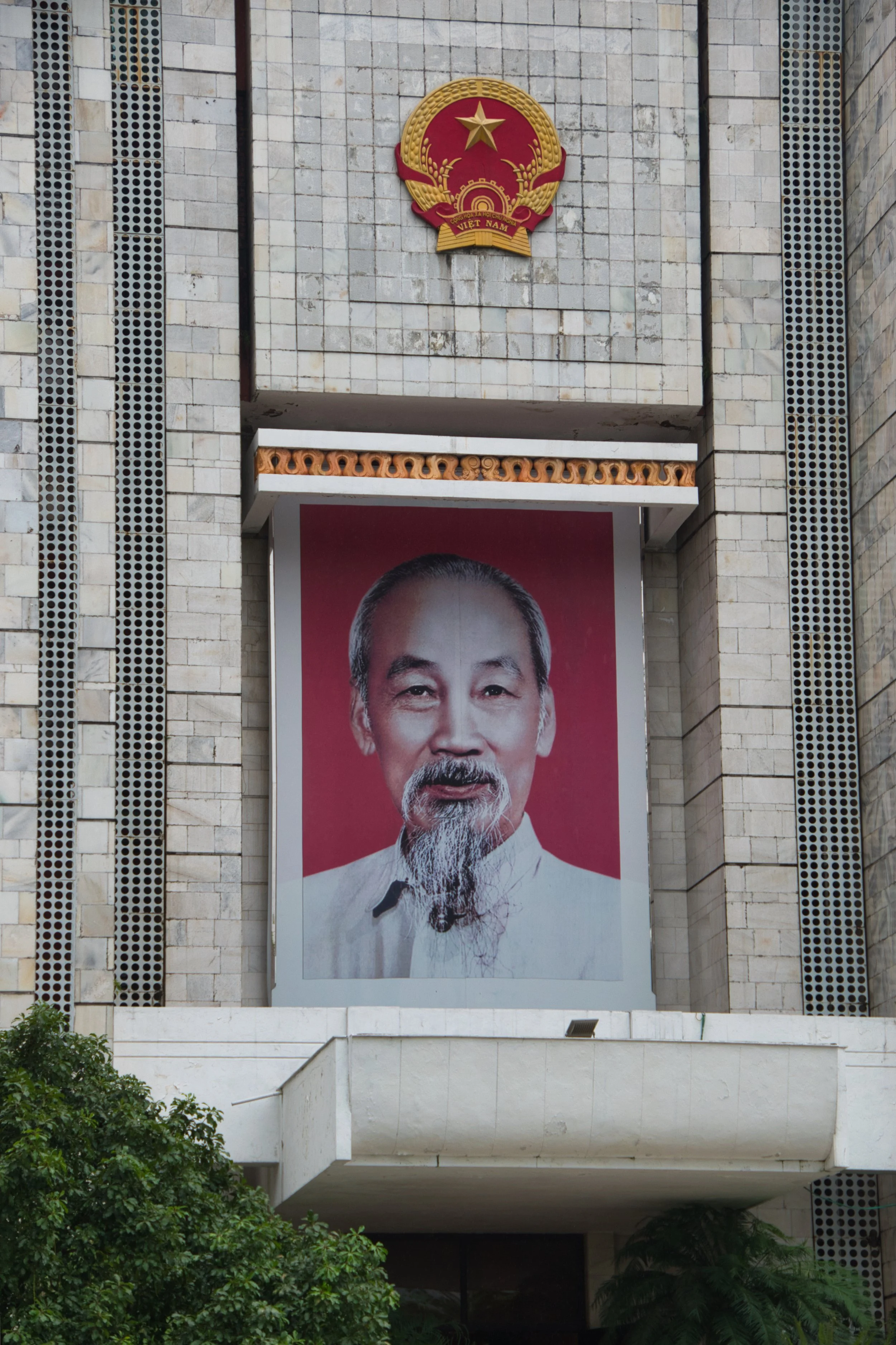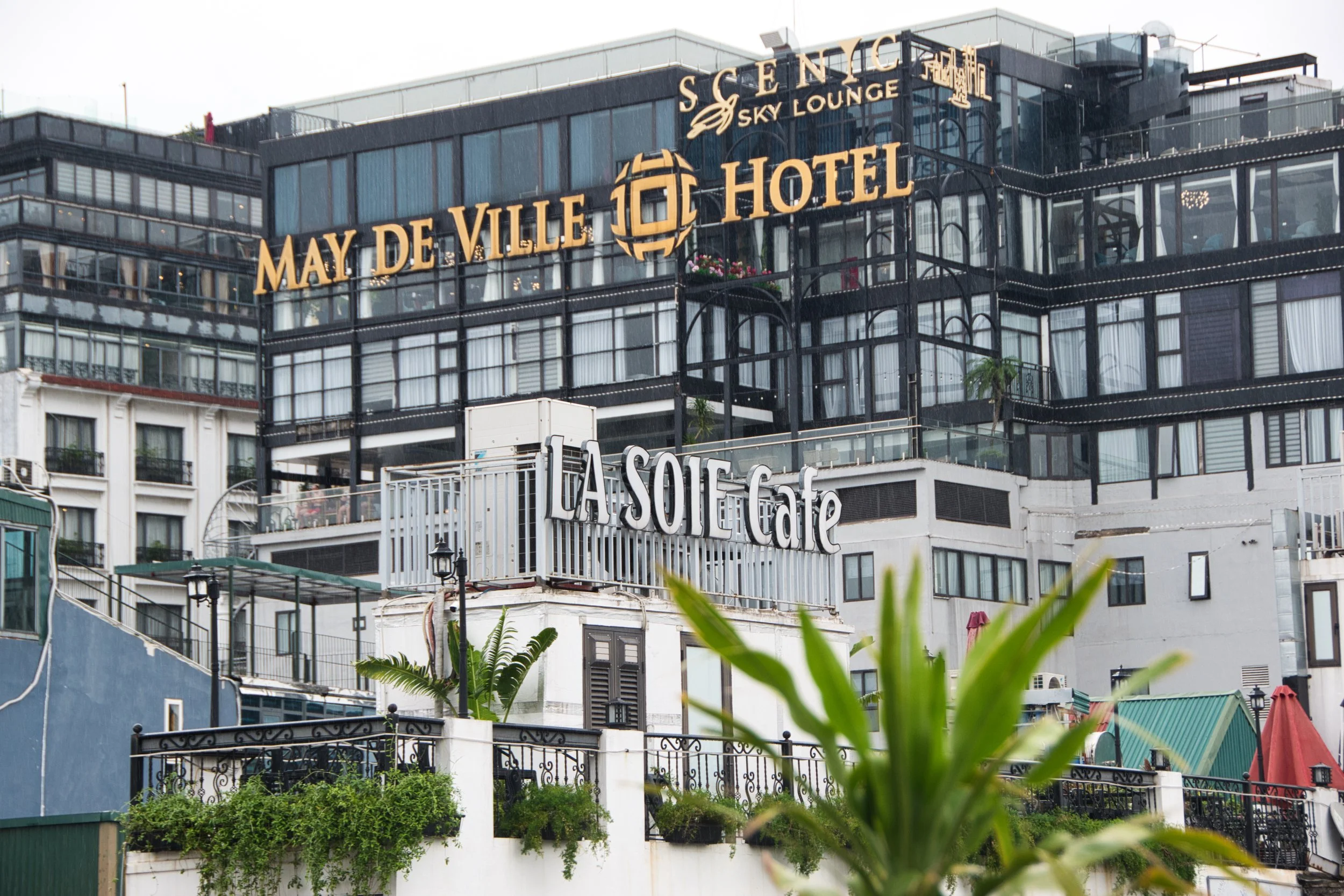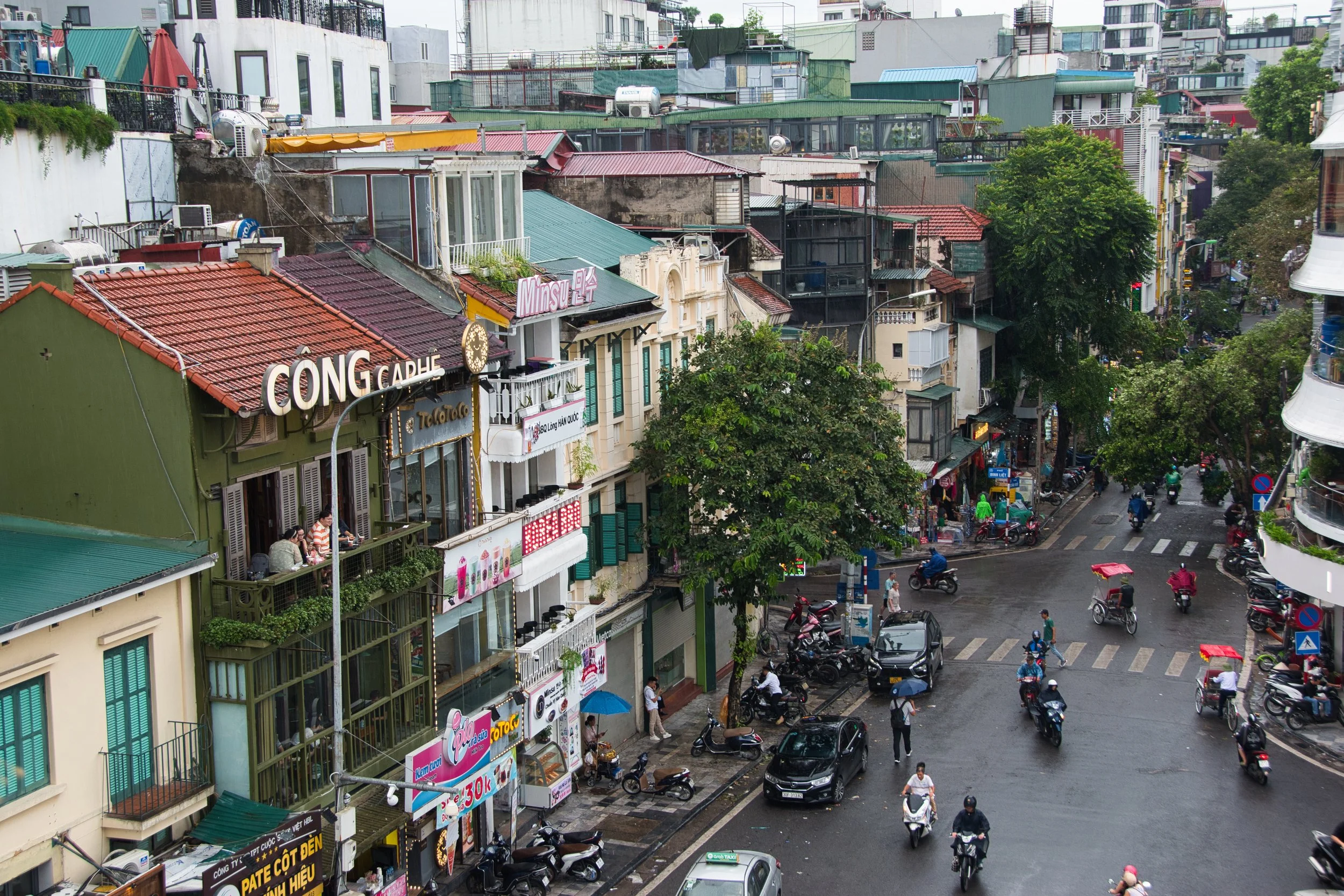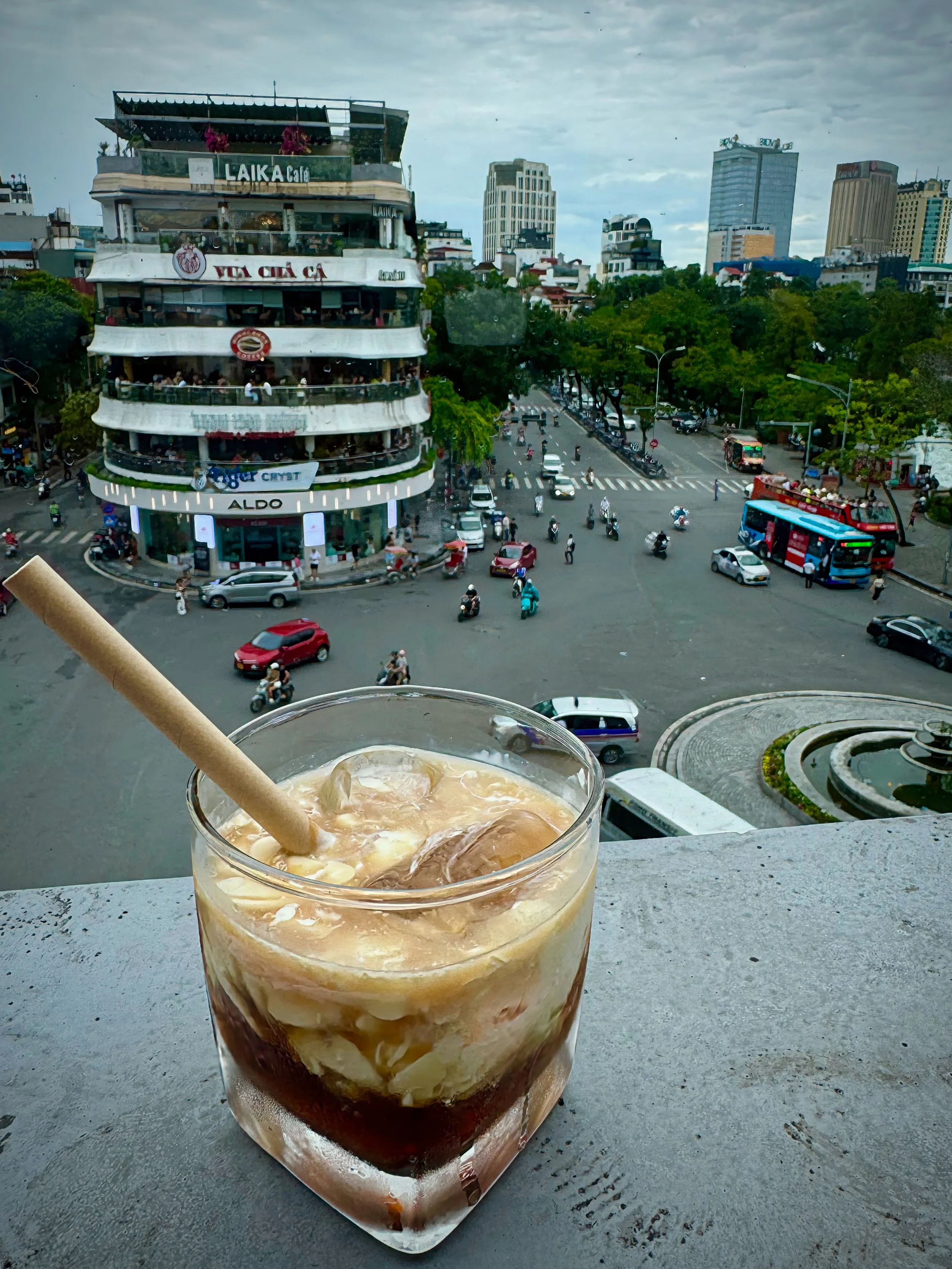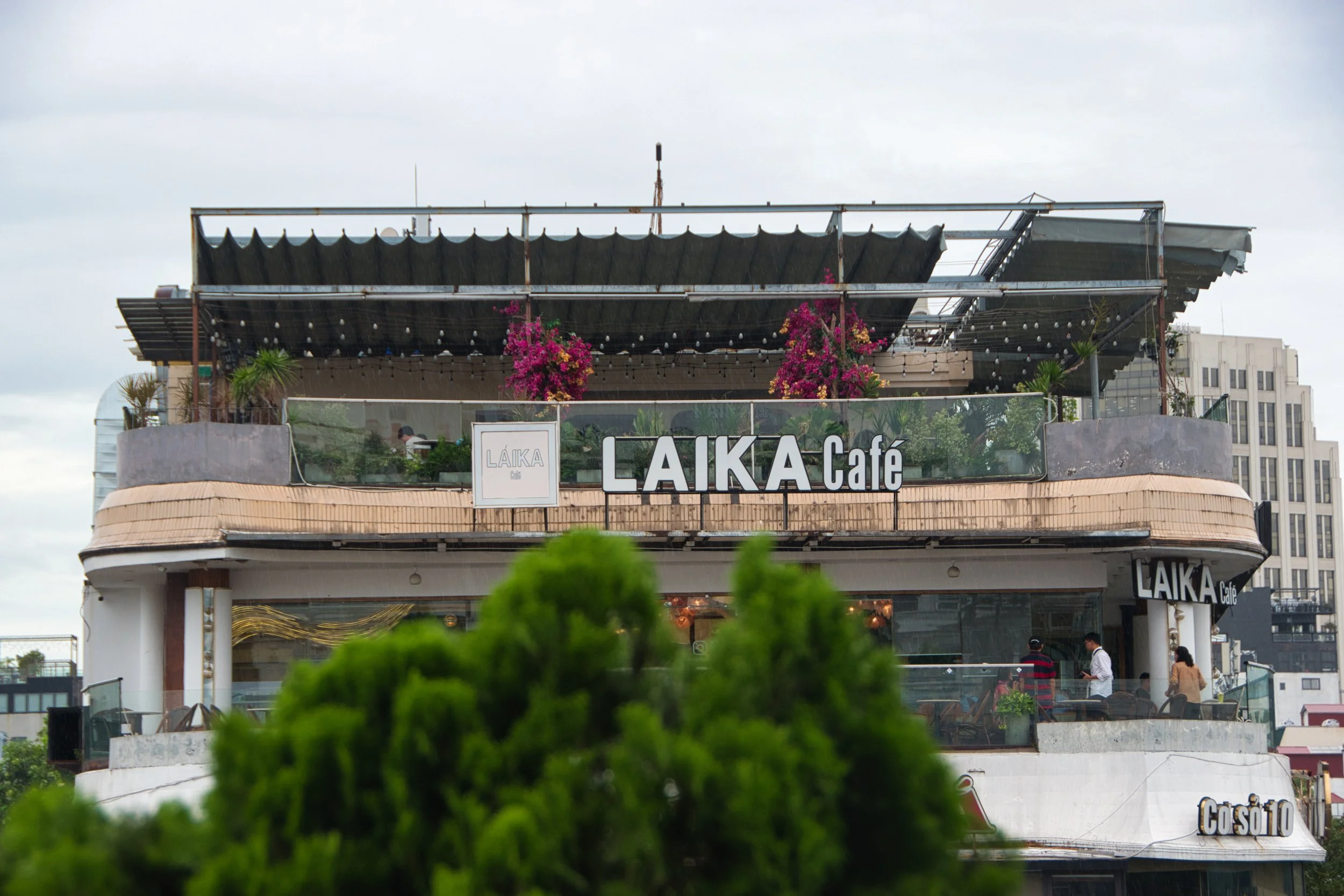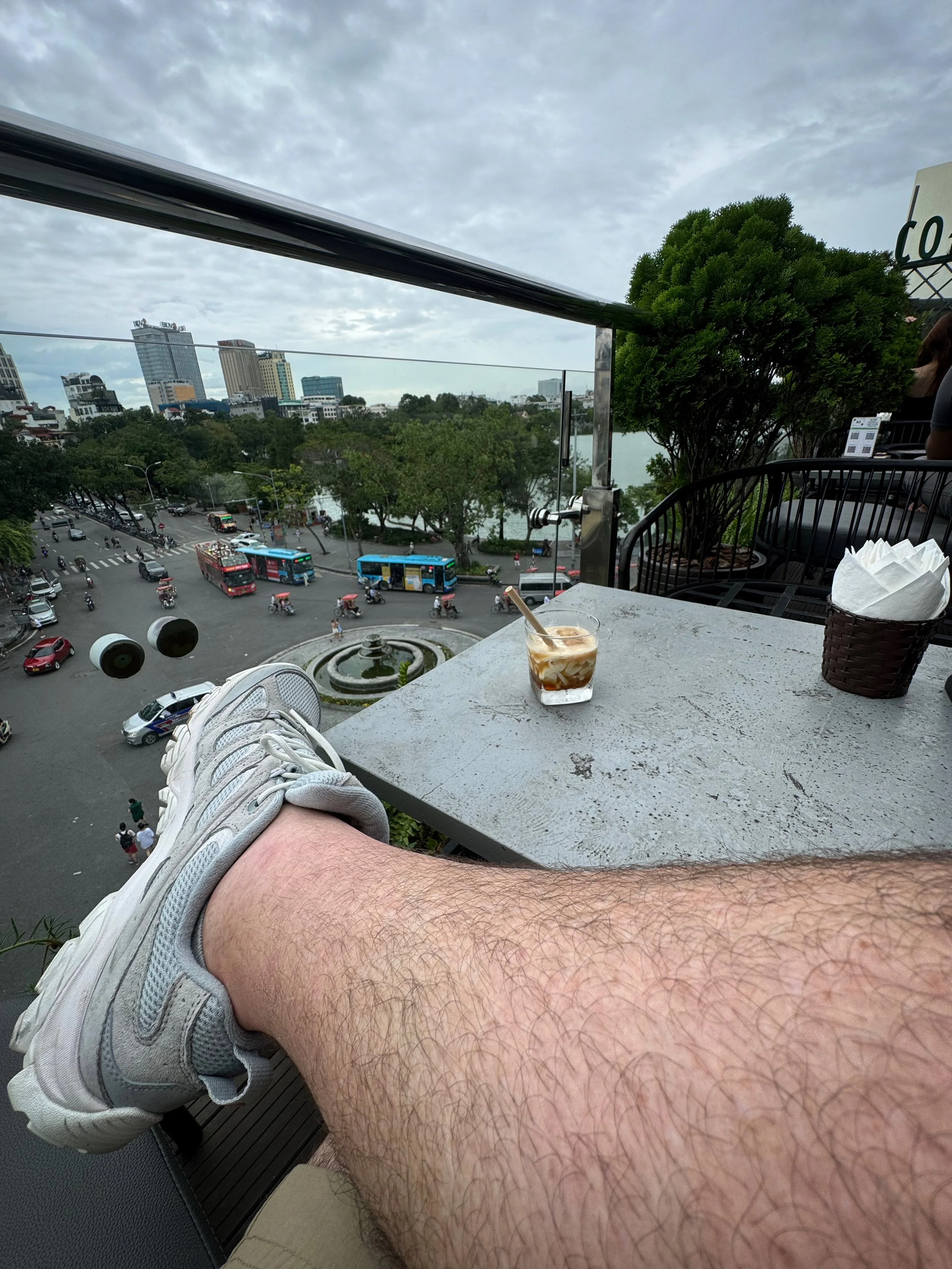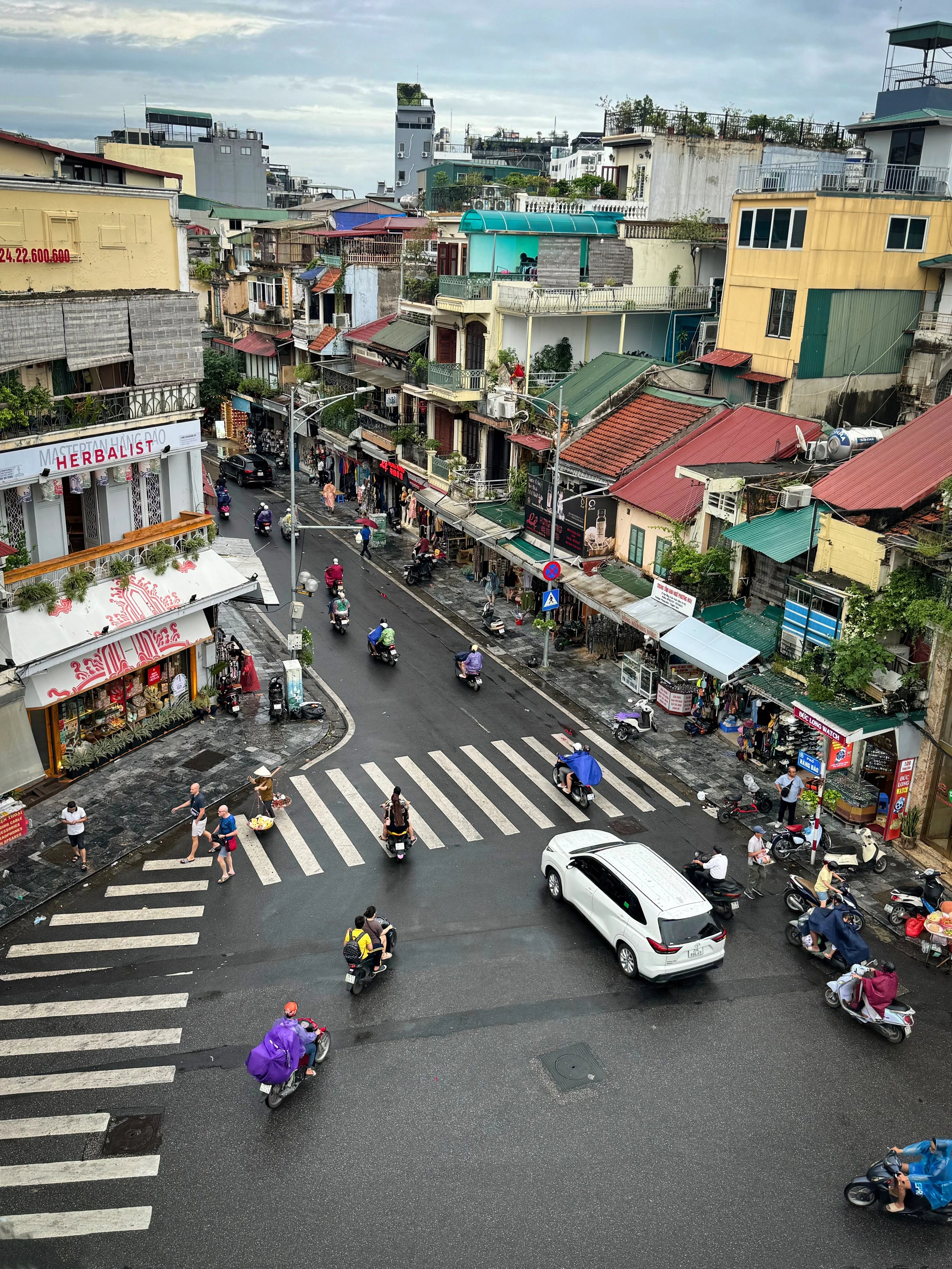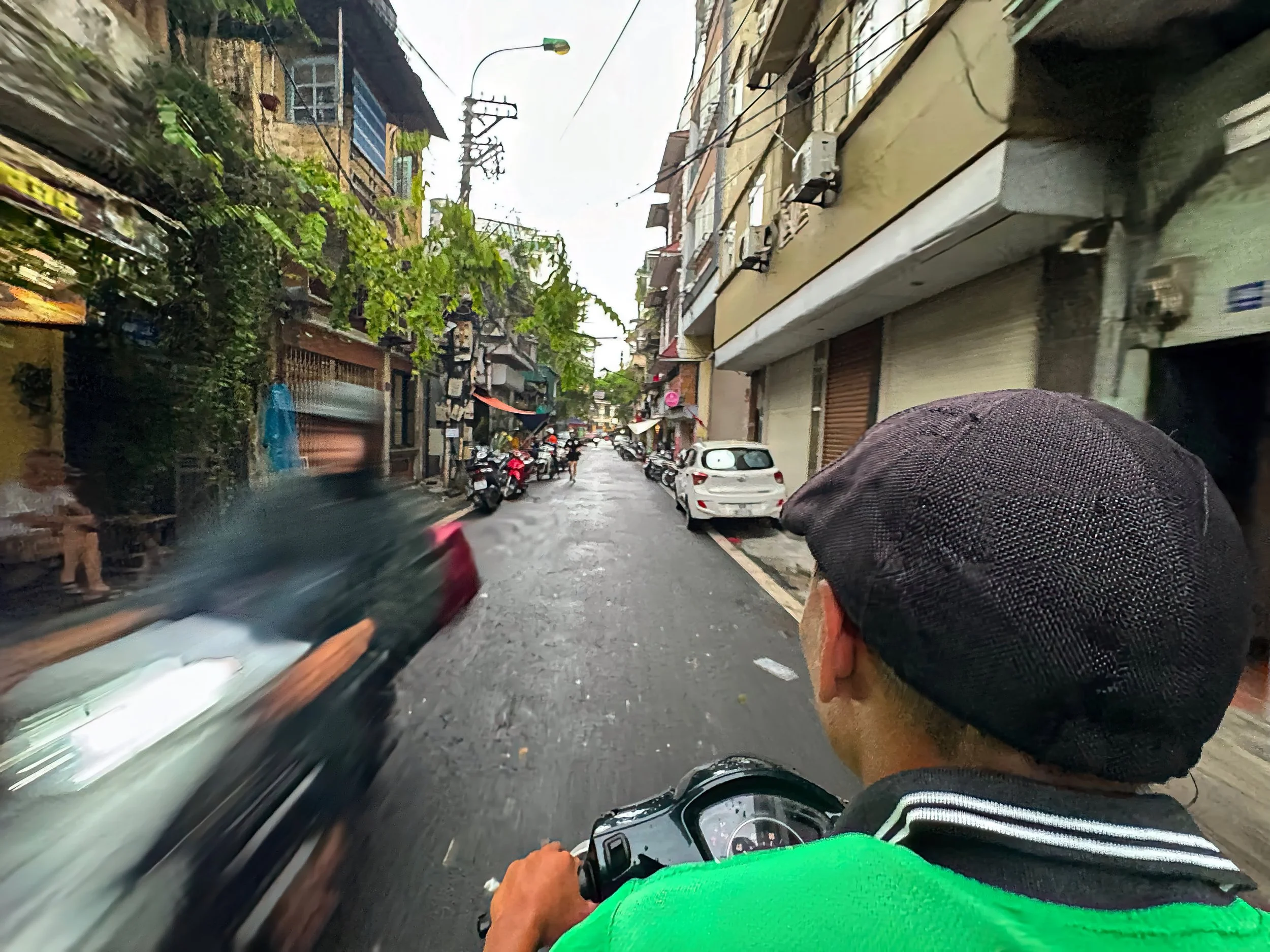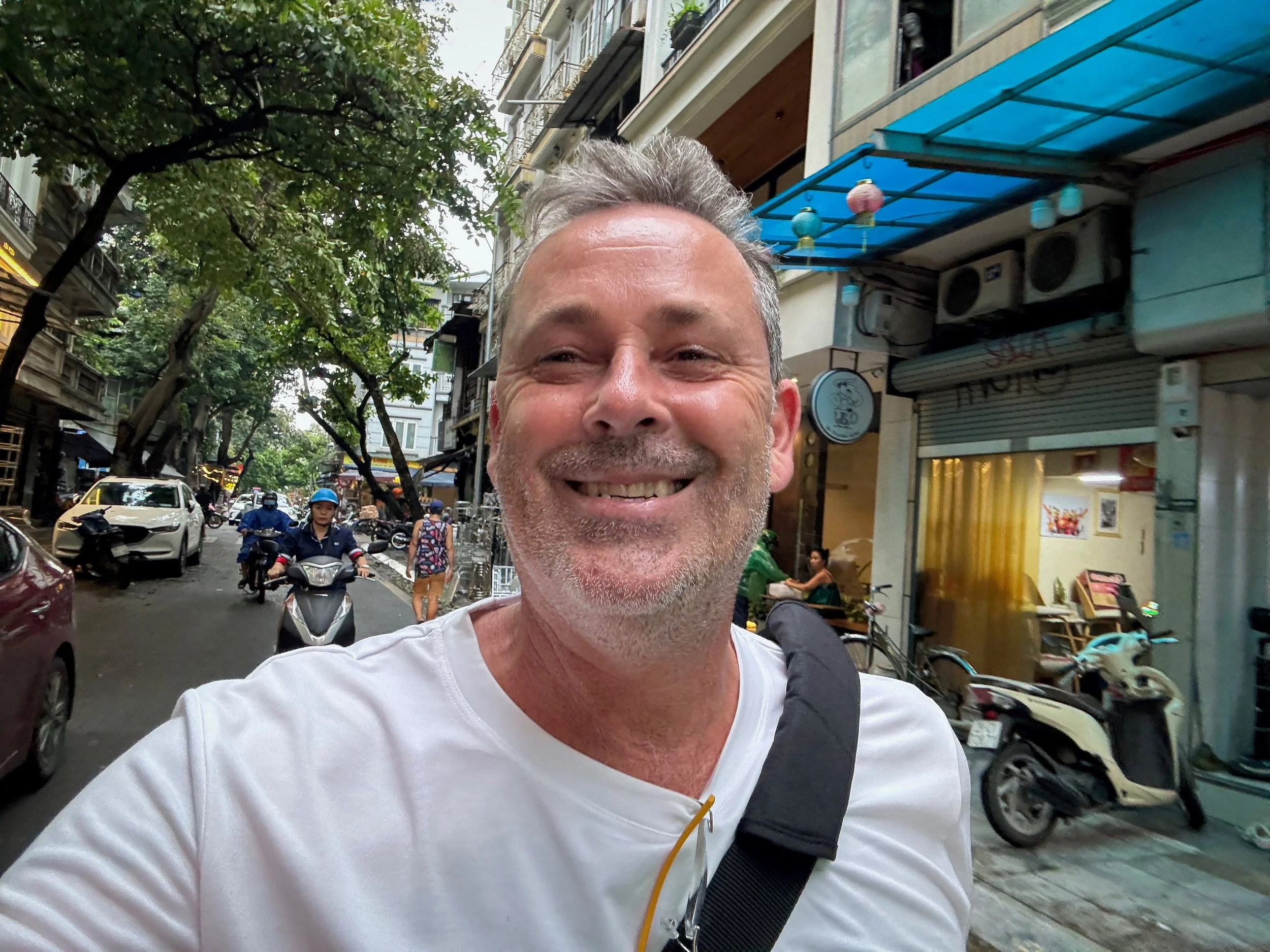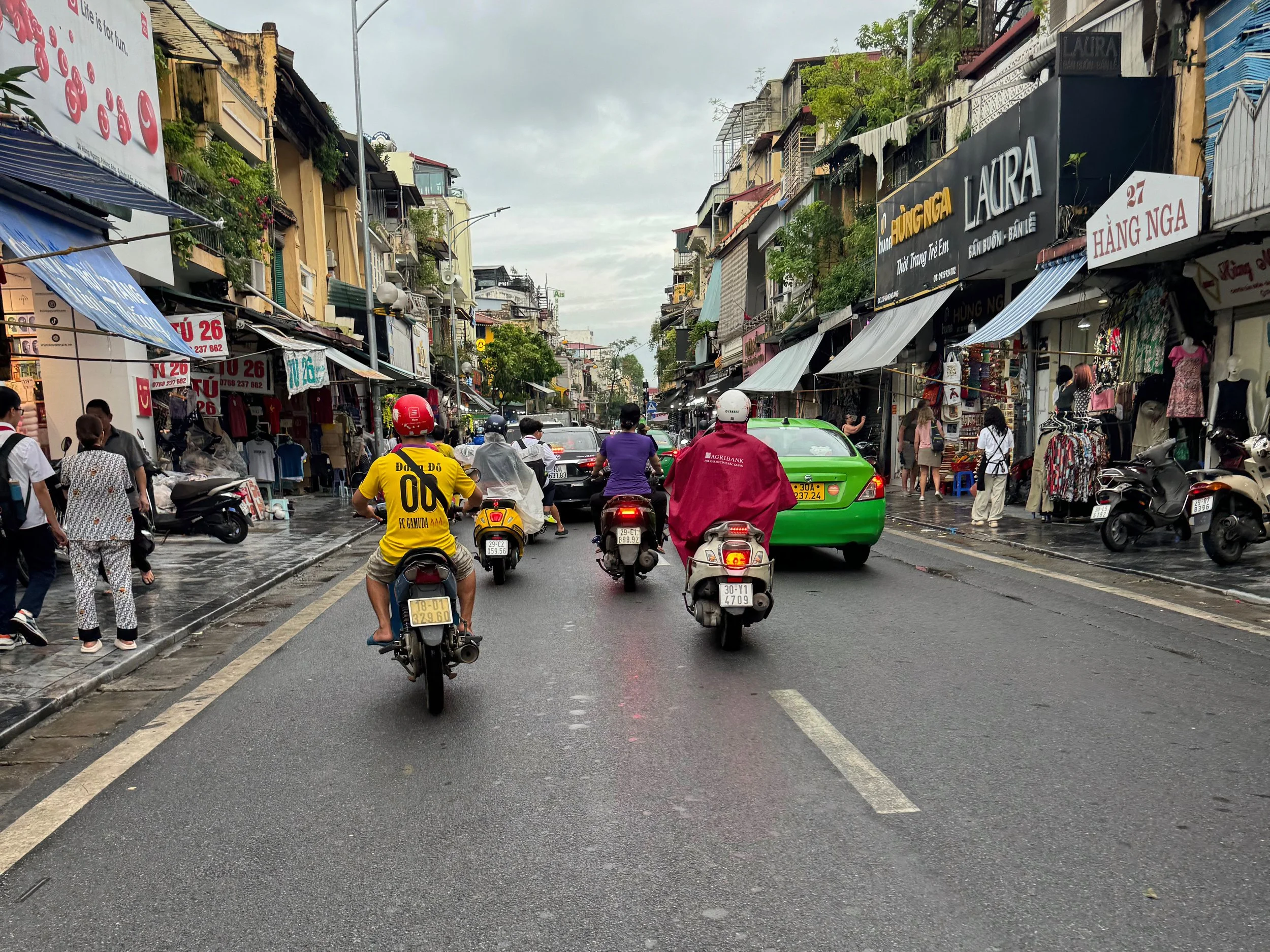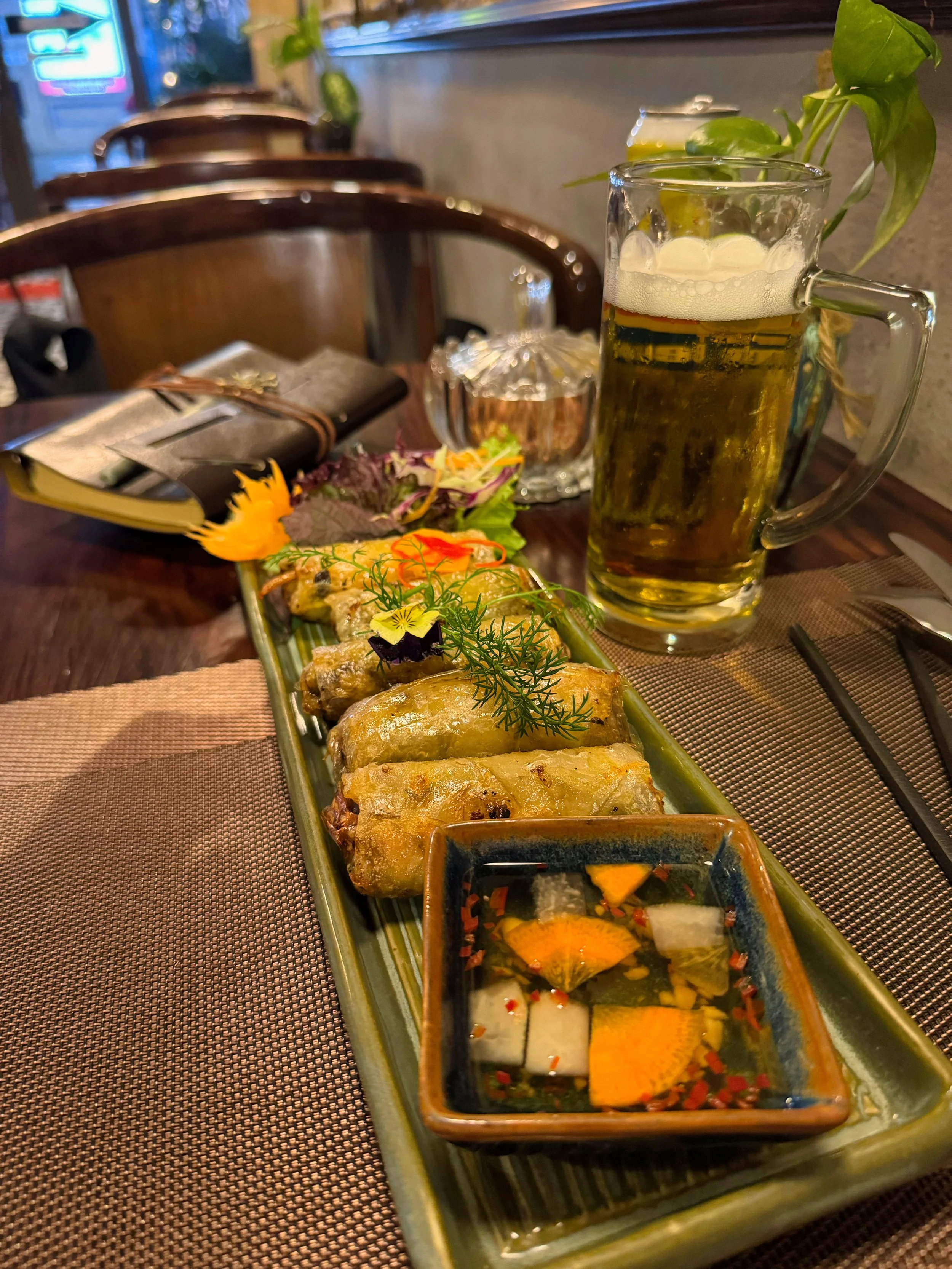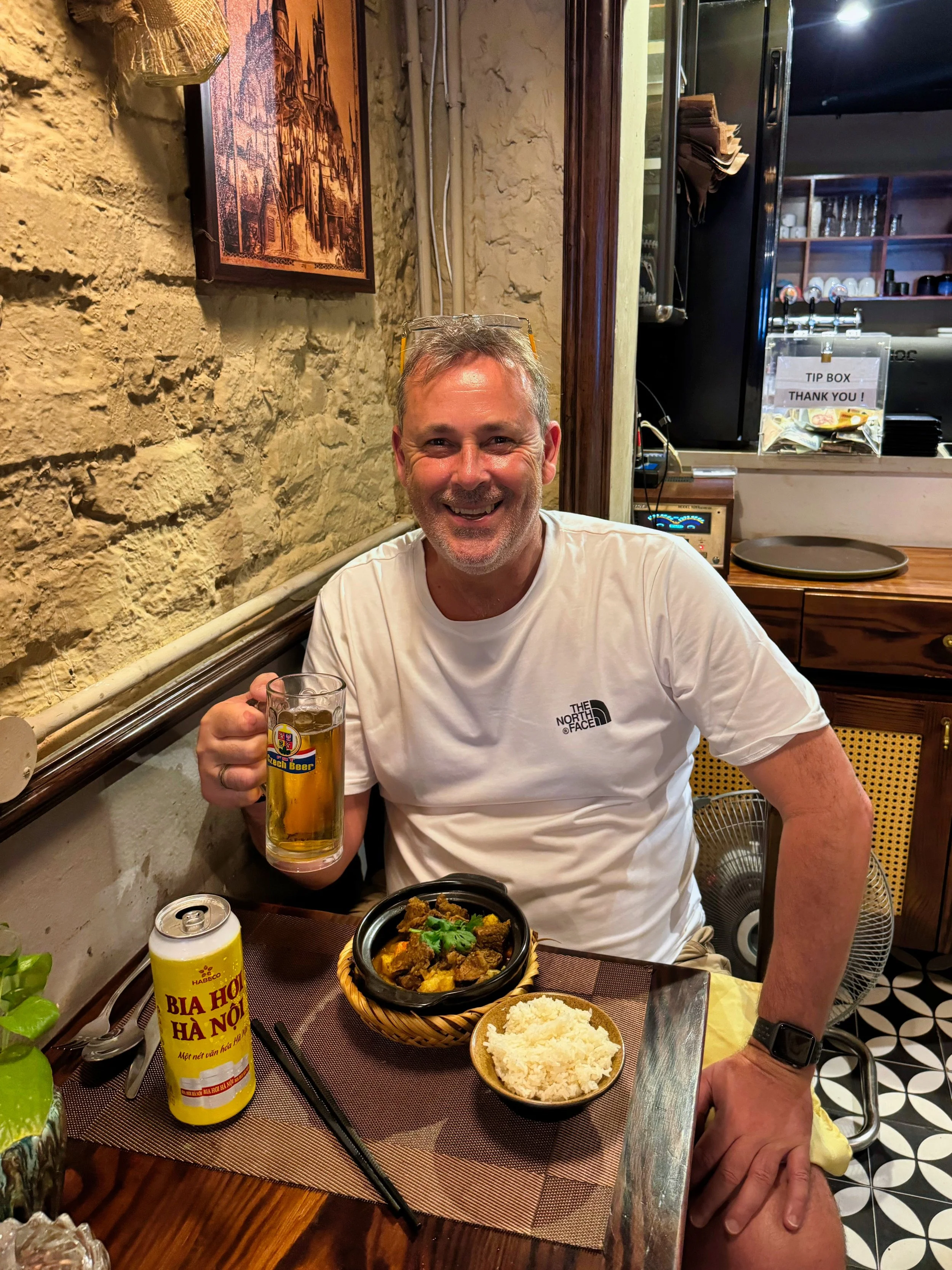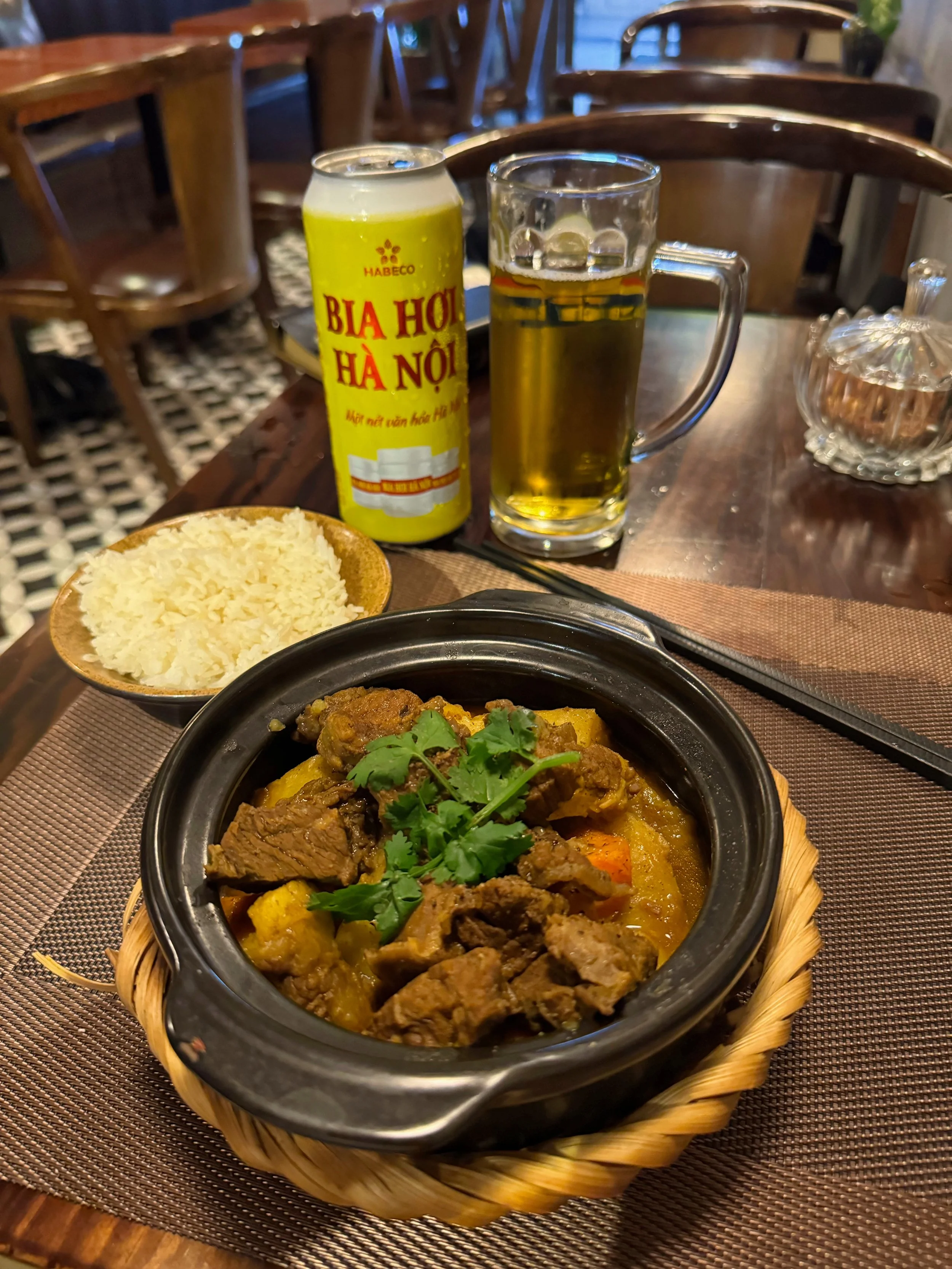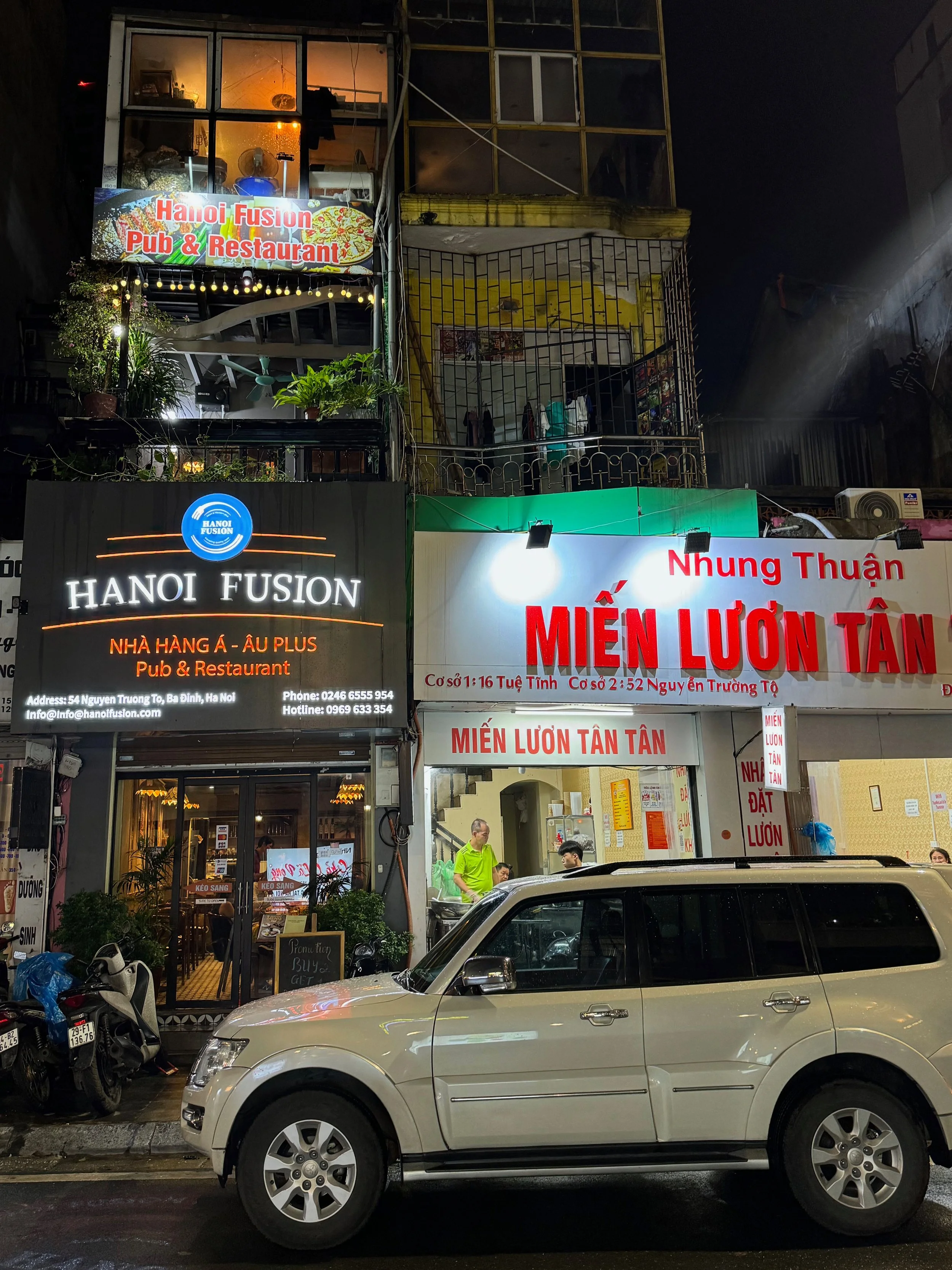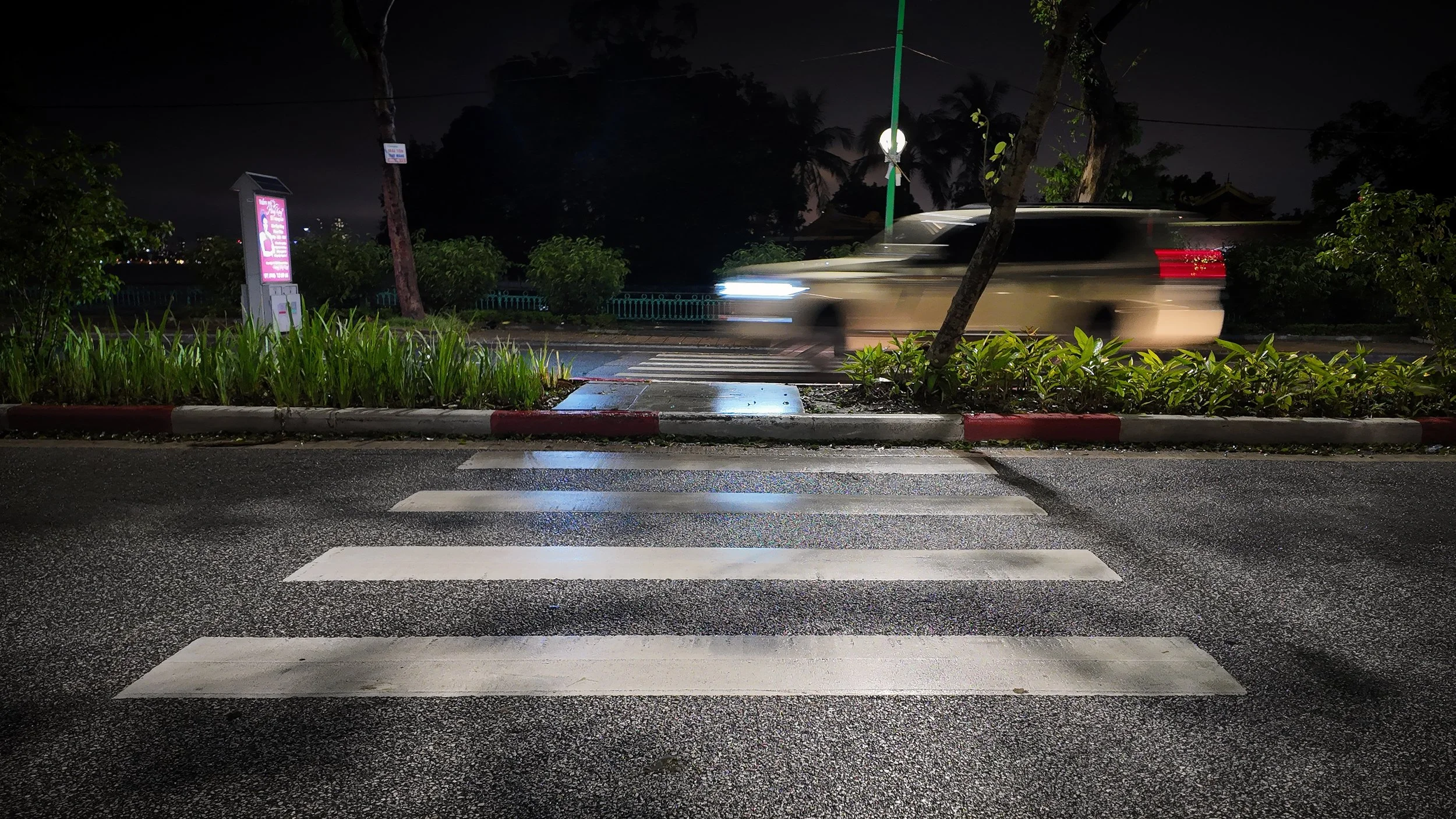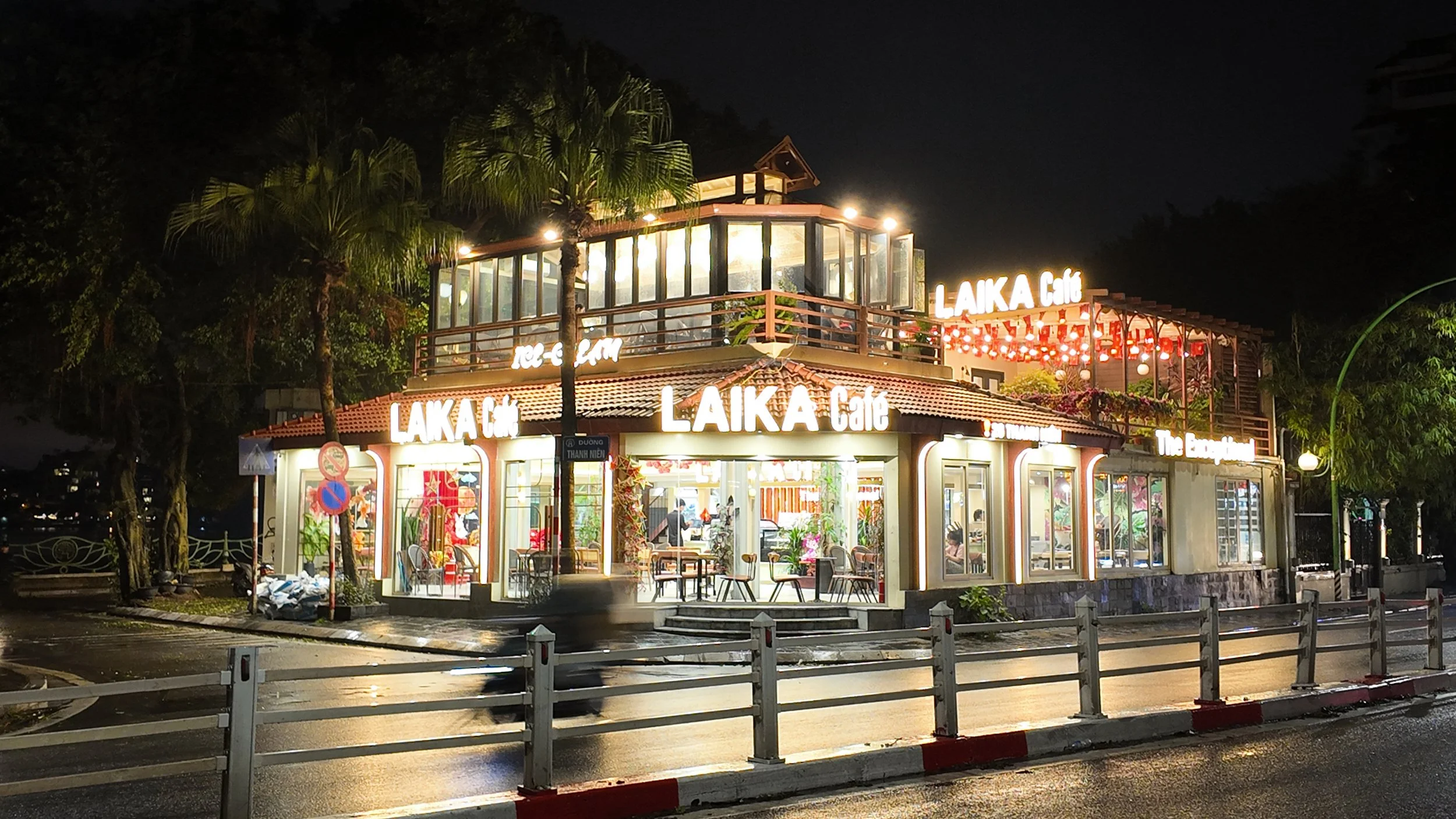4th Uprising- Hanoi
The previously cancelled motorbike tour of Hanoi had been rescheduled for 5:30 this morning, but when exiting the shower a text proclaimed it was again sadly postponed due to the rather fickle weather. 8:00am was to be its third time slot so Fatpap climbed back into bed and edited some photos. After breakfast the most charming and friendly little Vietnamese character imaginable pulled up to the kerbside of the Hong Ngoc Cochinchine Boutique Hotel and introduced himself as Tom, the tour guide for the morning.
Strapping on a helmet as functional as an empty ice cream container, the instructions were feet up, grab the nearest part of the motor bike and try not to fall off. Tom spoke incredibly good english but through the din of clattering horns and a city returning to normality post typhoon, a sizeable portion of his constant commentary was lost in translation.
Rarely using main roads, back alleys and hidden passageways any sane person would consider suitable only for pedestrians and perhaps small rodents were the preferred avenues for Crazy Tom and his seemingly space defying motorbike. With an 110kg carcass of Australian meat constantly shifting his centre of gravity, Tom dissected the Old Quarter like a surgeon never failing to point out hidden gems missed thus far. The Hanoi Social Club, the city’s narrowest building, The Opera House and Hotel Metropole Hanoi to name a few, but it was local markets, street vendors and everyday activity bringing this mad capped exploration to life.
With little to no warning, Tom at one point confidently advised of our impending entry into Hanoi’s “tightest alleyway”. With only the slightest back throttle, he thread the bike like a needle between two concrete walls having its wing mirrors scrap either side as if to prove his proclamation was indeed fact.
Part of this 2hr tour was a brief stop at Train Street for an Egg Coffee and train spotting, and despite it being Fatpap’s 4th visit to the iconic location, the cheshire smile of Crazy Tom would not be destroyed and we sat patiently for a train that in reality was never coming. Notwithstanding, Train Street holds an air of magic about it and train or not, is a remarkable part of the world that for this writer never grew tiresome.
Long Biên Bridge is a historic cantilever bridge spanning the Red River connecting two districts of Hanoi. Built in 1899–1902 by Parisian architects, its 2.4 kilometre length was at the time one of the longest bridges in Asia. It was heavily bombed during the Vietnam War due to its critical position and today carries trains, mopeds, bicycles and pedestrians across its dilapidated structure. With flood waters swirling across its sunken supports, tourists and locals alike stopped at various points to witness typhoon debris sweeping from upriver with Tom even being interviewed by the local news network on the matter. The bridge was a predetermined photo op scouted weeks before leaving Australia, and below you’ll find the banger Fatpap had in mind and happily walked away with.
Red River, Hanoi, Vietnam
Long Bien Bridge, Hanoi, Vietnam
Leaving the bridge, we zigzagged through the Old Quarter labyrinth in search of Huu Tiep Lake and its waterlogged reminder of the Vietnam War. In December 1972 Operation Linebacker II was a strategic bombing campaign conducted by the United States against North Vietnamese targets. More than 20,000 tons of ordnance were dropped on military and industrial areas killing at least 1,624 civilians. It was the final major military operation carried out by the U.S. and the largest bombing campaign involving heavy bombers since World War II.
On December 27th a B-52 bomber was hit by a surface-to-air missile causing it to crash into Huu Tiep Lake. The wreckage remains partially submerged and now almost a shrine to the Vietnamese people for their victory over the super power.
Continuing the war theme, the next stop was the B-52 Victory Museum displaying reconstructed wreckage of a B-52 Stratofortress shot down during Operation Linebacker II and various other air defence equipment, together with a Russian made MiG-21 fighter. The US air attacks wreaked terrible havoc on Hanoi, yet they could not defeat the northern forces who fought bravely to push back the world’s most powerful air force.
With the tour concluded Fatpap mentioned he was vibing some Vietnamese BBQ pork for lunch. With that Crazy Tom flung his bike 270 degrees landing it on the doorstep of the city’s most famous establishment for such a delicacy. The advertised tour was for 2hrs but lasted nearly 5. Tom was graciously thanked and handsomely tipped, but had it been known how spectacular that BBQ pork would be the tip would have been much greater.
An afternoon tour had been booked to the scenic Incense Village about 1hr away however due to increasing flood waters this too was cancelled last minute. So with free time Fatpap hightailed it downtown for some further sightseeing while it remained dry.
Hoan Kiem Lake, Hanoi, Vietnam
With its name translating to “inside the river”, Hanoi sits between the Red and Black Rivers boasting over 20 lakes with the most picturesque being Hoàn Kiem Lake. Known also as “Sword Lake”, legend has it that in the 15th century the Sea God lent a magical sword to King Le to fight his enemies and successfully chase away foreign invaders. After a prolonged period of peace a turtle suddenly surfaced in the lake demanding the king return the sword to the Sea God. Truth or not, that story and those of ancient turtles define the lake and its attractions.
Isolated in the middle of the lake stands Turlte Tower. Built during the French colonial period it shows imprints of both French and Vietnamese architectural styles. There are no boats to the island so one can only look from the many banks around the lake creating even more curiosity of the structure.
Right in the heart of Hoàn Kiem Lake also stands Ngoc Son Temple. Built in the 19th century and originally dedicated to a famous Chinese general, it was turned into a pagoda to worship Buddha before restoration to its present state. Inside a glass cabinet holds a model of the lake’s fabled turtle perpetuating the myth of the lake and its ancient inhabitants. To reach the temple one must cross the Huc Red Bridge. Built of wood in 1865 it boasts many ancient architectural features and was modelled after a wooden house of the people of the Red River Delta. It costs 50,000 VND to pass its sacred threshold, but when seeing the aforementioned chelonian, it was worth it.
Opposite the lake on Dinh Tien Hoang street stood Vietnams largest bronze sculpture of Emperor Ly Thai To, founder of the Ly dynasty and the city of Thang Long in 1010 which later became Hanoi. Of equal celebration oddly stands a building sized portrait of Kentucky Fried Chicken’s first Vietnamese franchisee on the Office of Trade and Commerce.
It had been a busy day thus far and time for some much deserved R & R. After pointing to an image saved on his phone weeks ago, Fatpap was escorted via motorbike to Dong Kinh Nghia Thur Square. A myriad of bars and restaurants circle the square and after elevating 6 floors Fatpap parked himself nicely to watch the world go by nursing a White Russian followed by 5 whiskey sours. It was a great way to spend a few hours but as the rain was returning, time to hop on another motorbike for the maze running dash back to the hotel.
Dong Kinh Nghia Thuc Square, Hanoi, Vietnam
Tonight was the final opportunity to do something put off due to weather every night since arrival. Packing the tripod and other camera equipment, it was a quick stop at a local favourite for a dinner of spring rolls and traditional Vietnamese beef stew before heading out to beat the predicted rain.
A little north and not far from the hotel was the Tran Quoc Pagoda. As the oldest pagoda in the city, it was constructed in the sixth century during the reign of Emperor Lý Nam De making it more than 1,500 years old. Monks have lived at the pagoda for centuries teaching the ways of Buddhism to the public while a Bodhi tree taken as a cutting of the original tree in Bodh Gaya, India under which the Buddha achieved enlightenment now stands on the grounds.
At night the complex was of course closed but the following images were captured before the expected downpour closed the shoot early. It was only a short taxi ride home before crashing into bed rounding off an action packed, and educational day in Hanoi.
Tran Quoc Pagoda, Hanoi, Vietnam
Trúc Bach Lake, Hanoi, Vietnam

